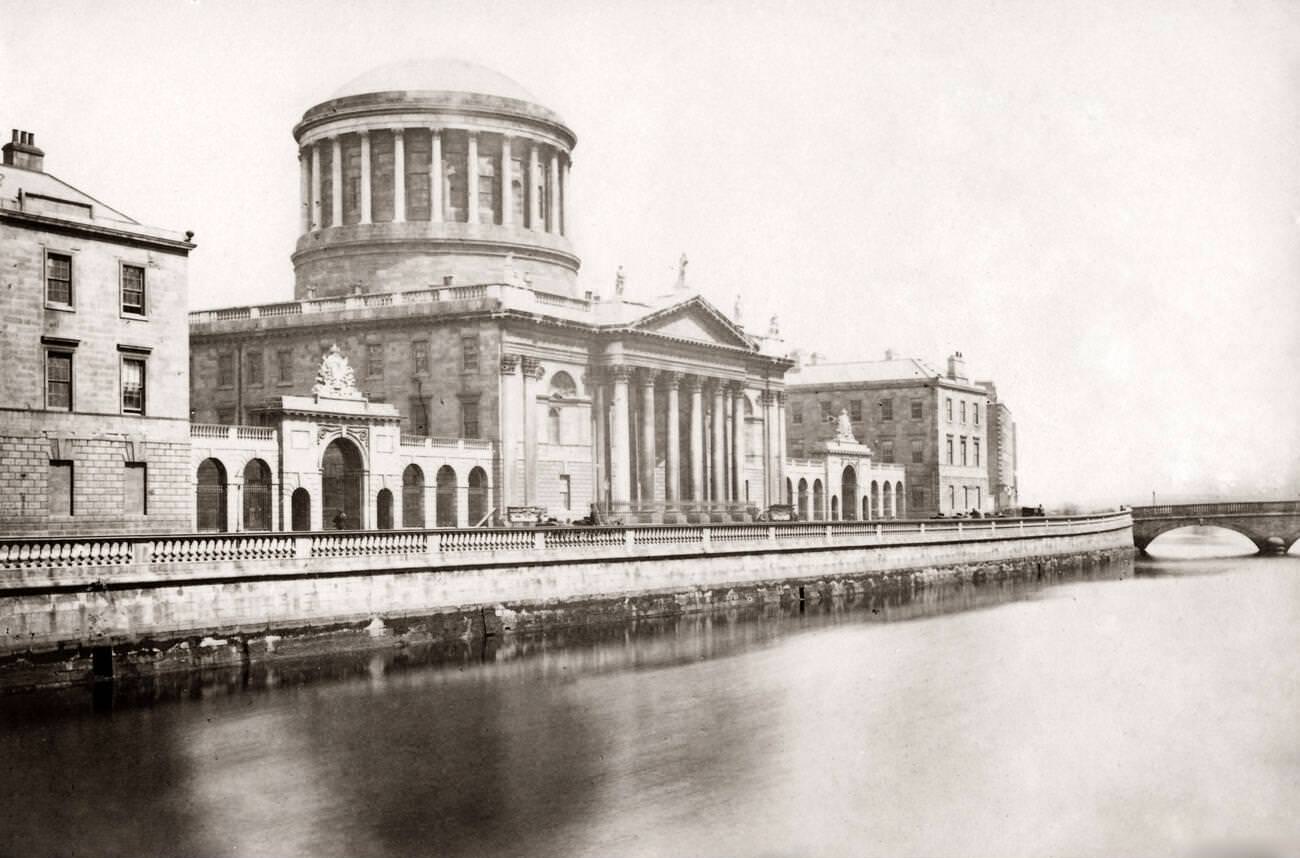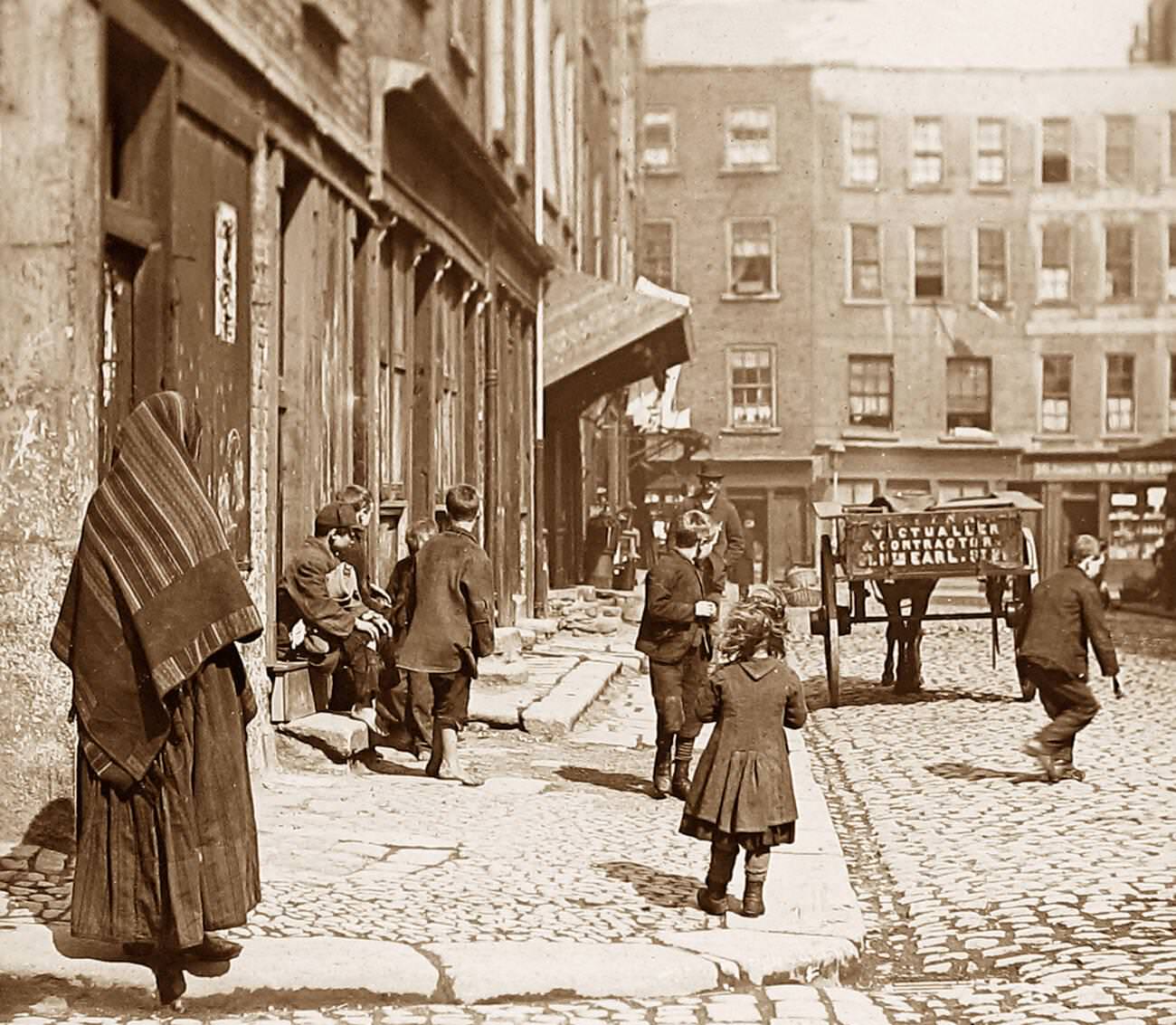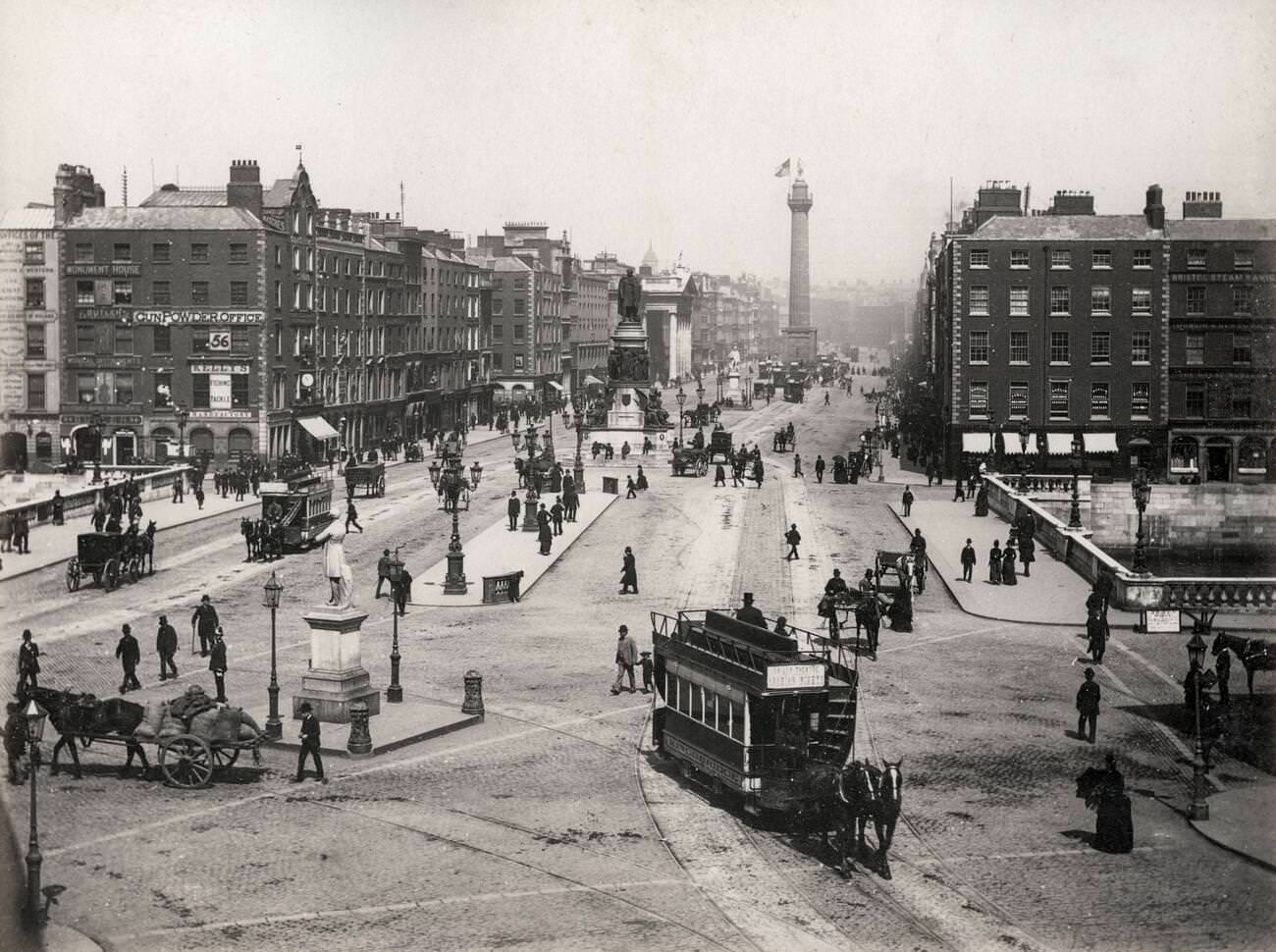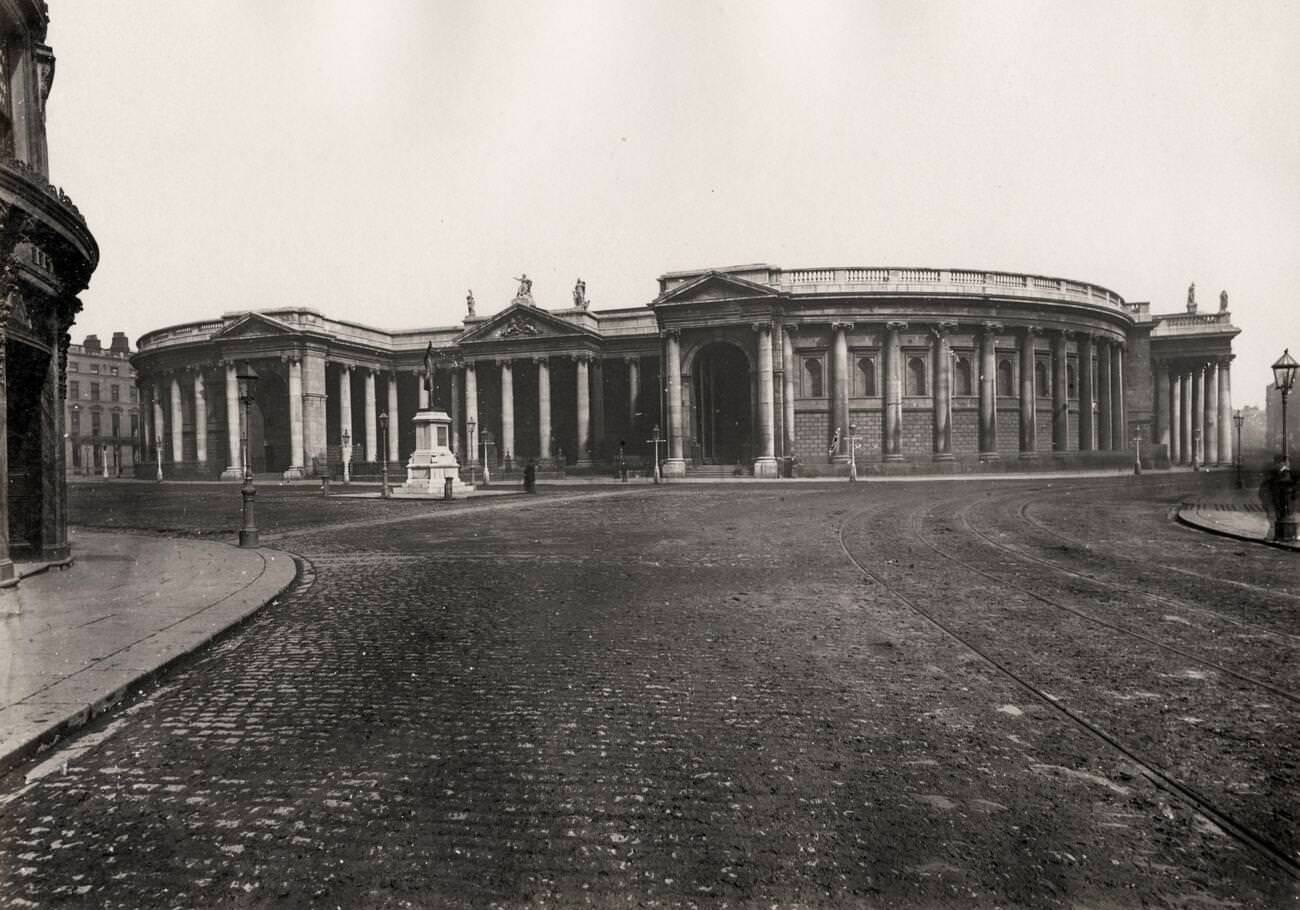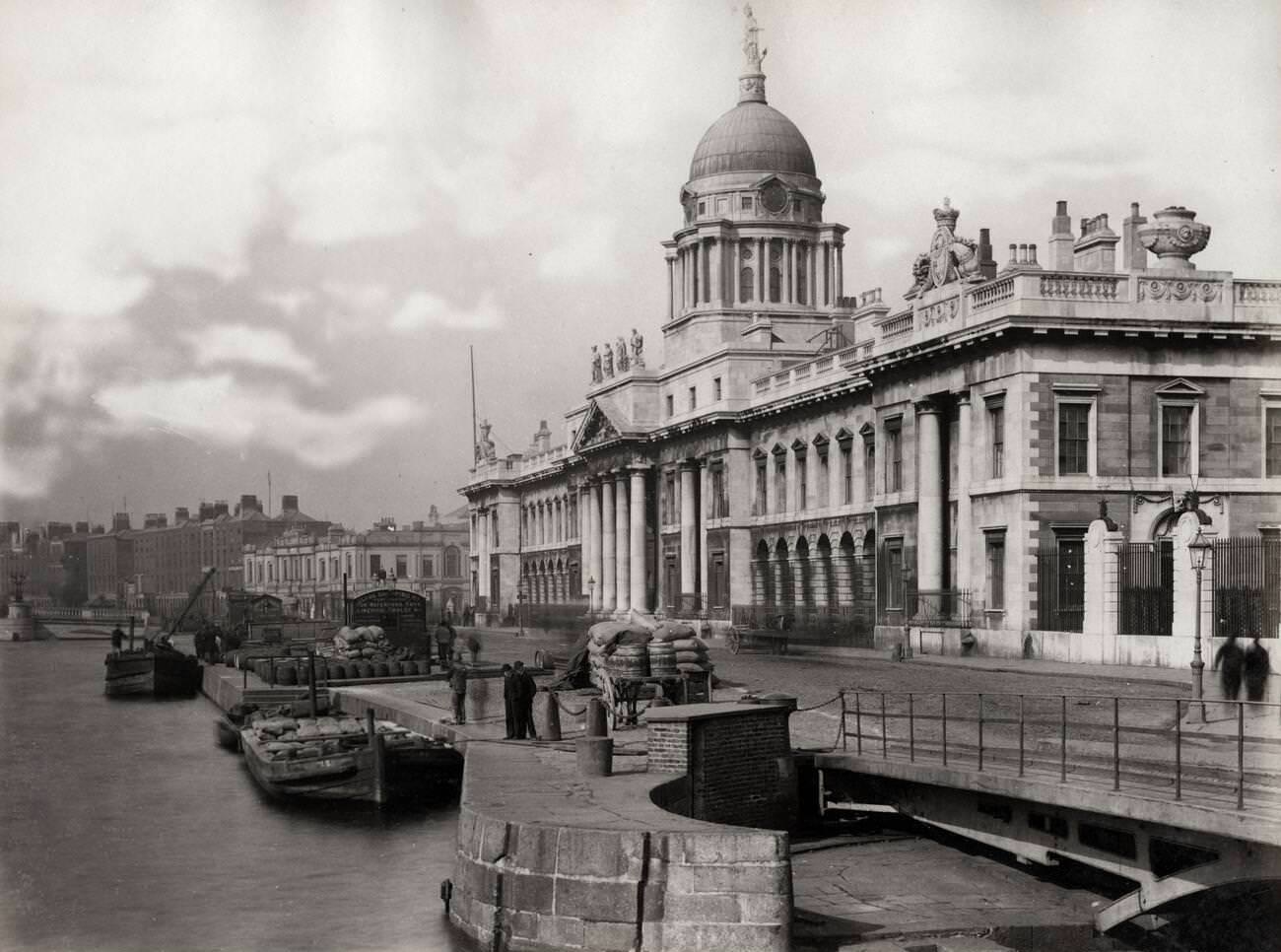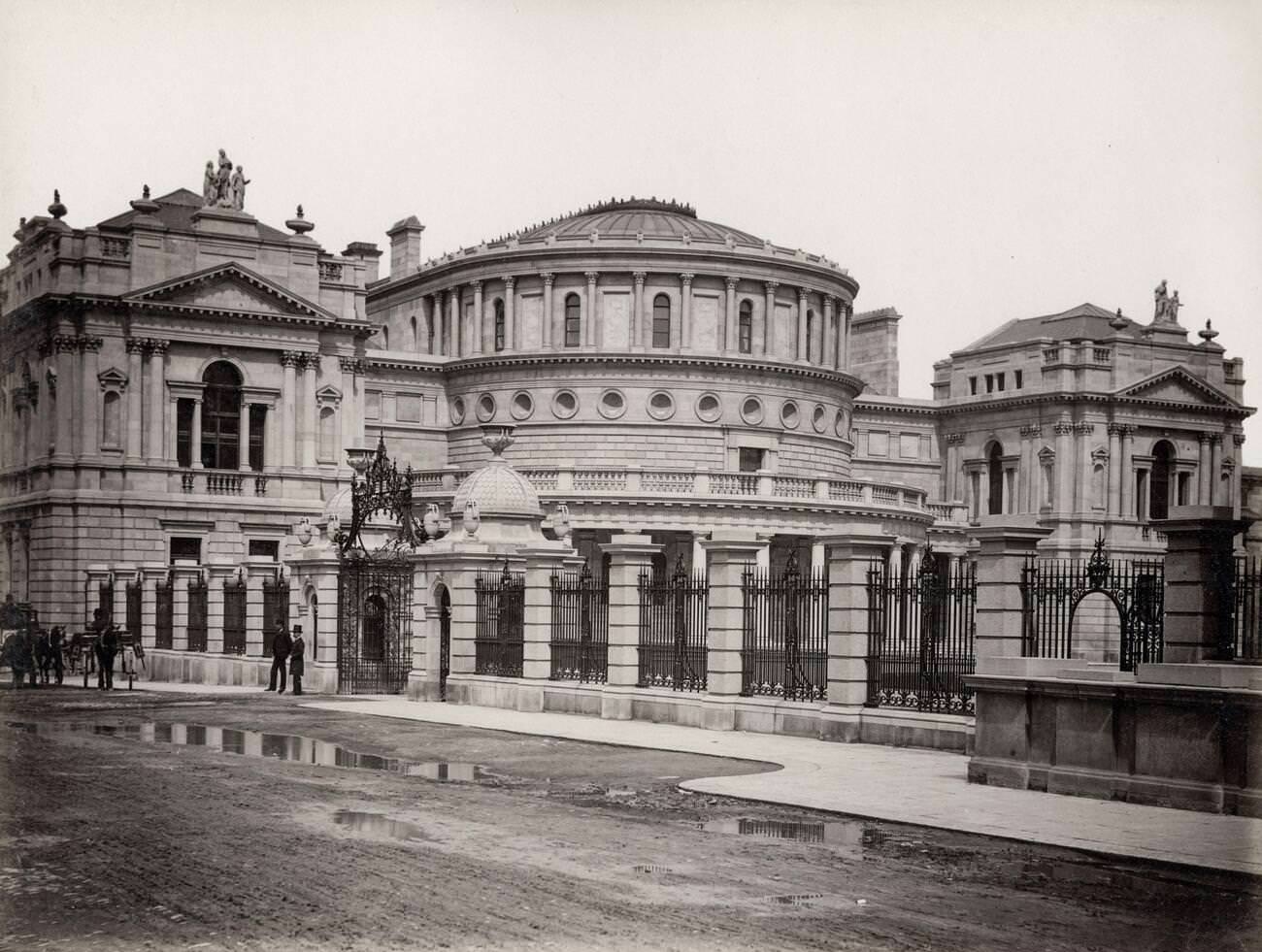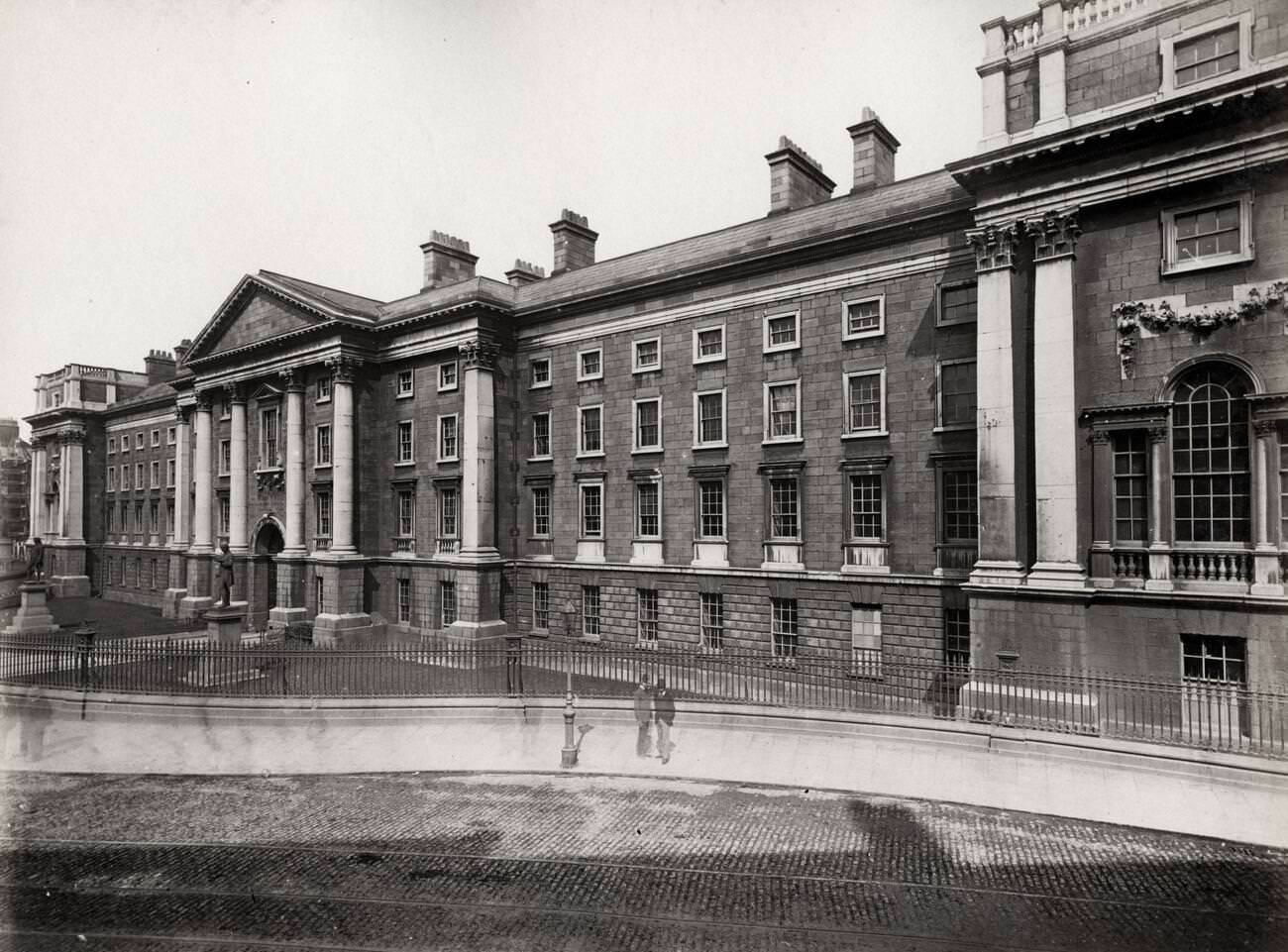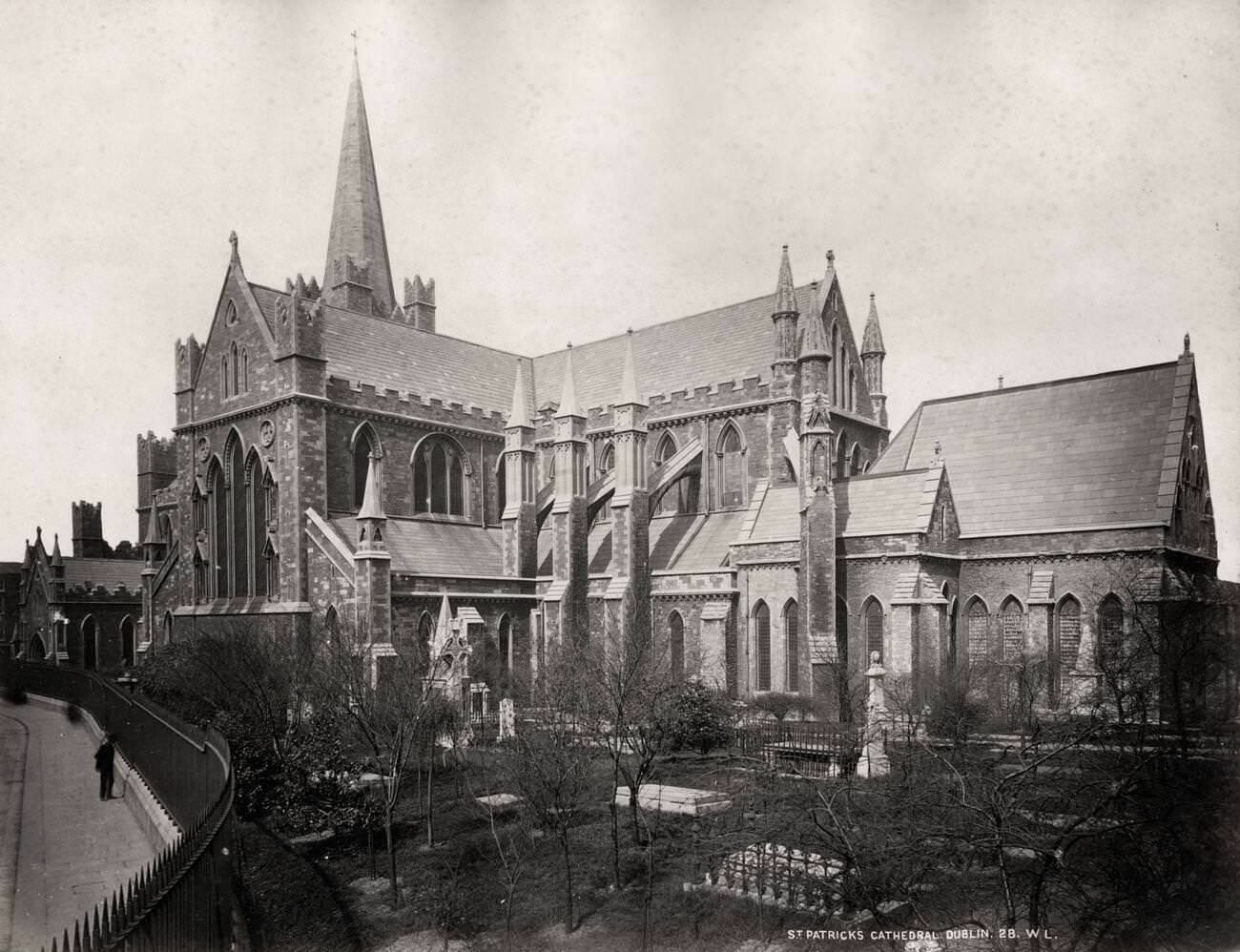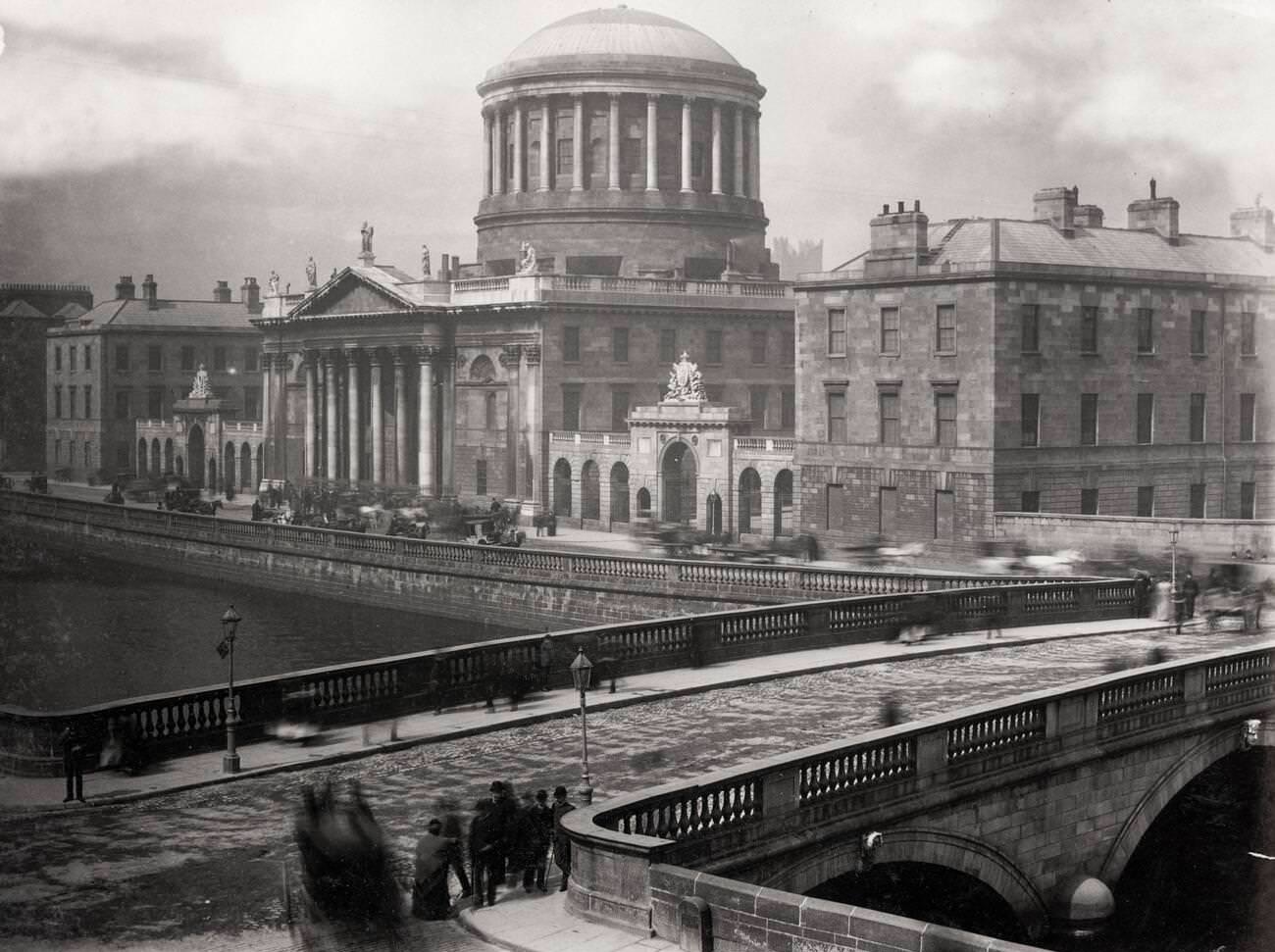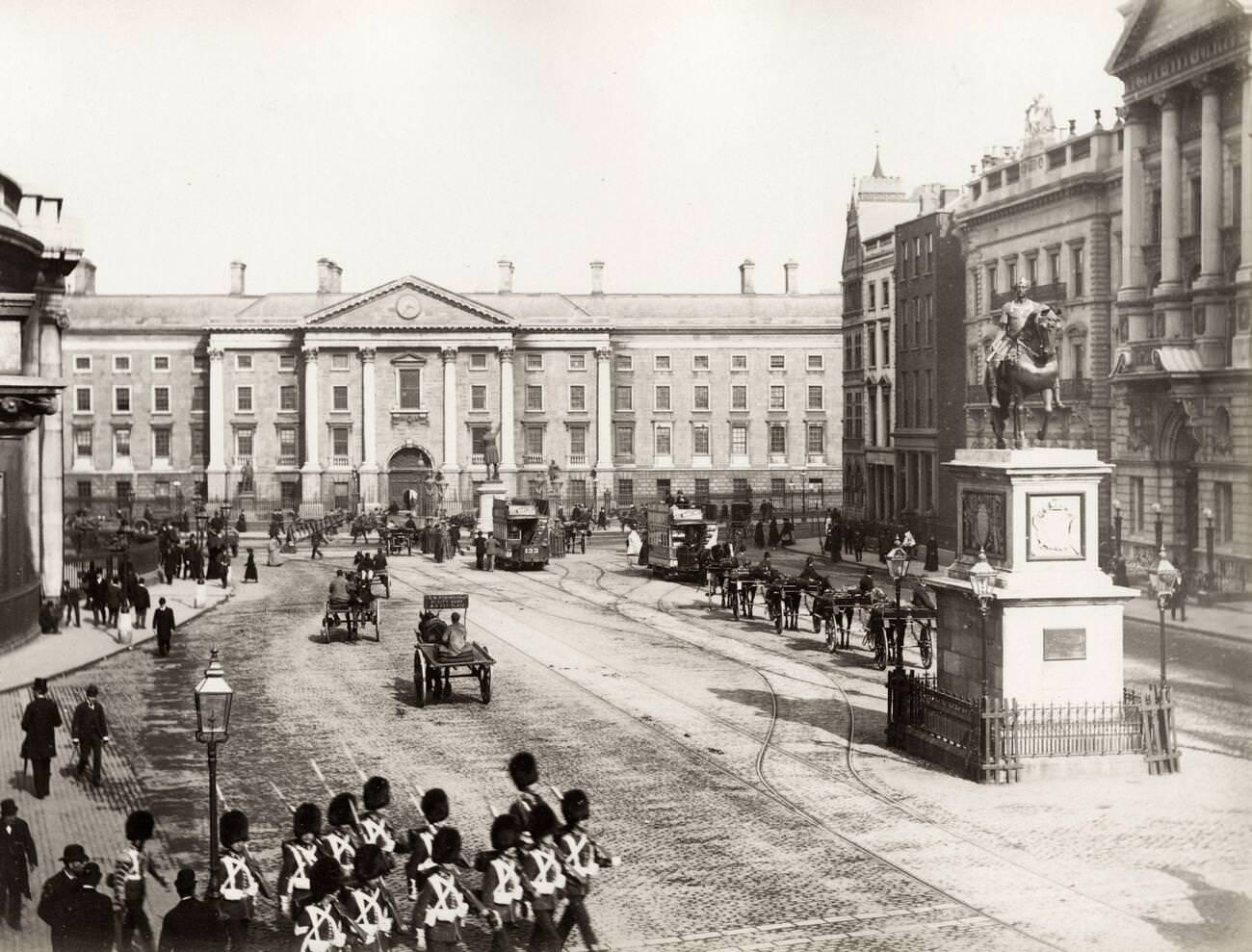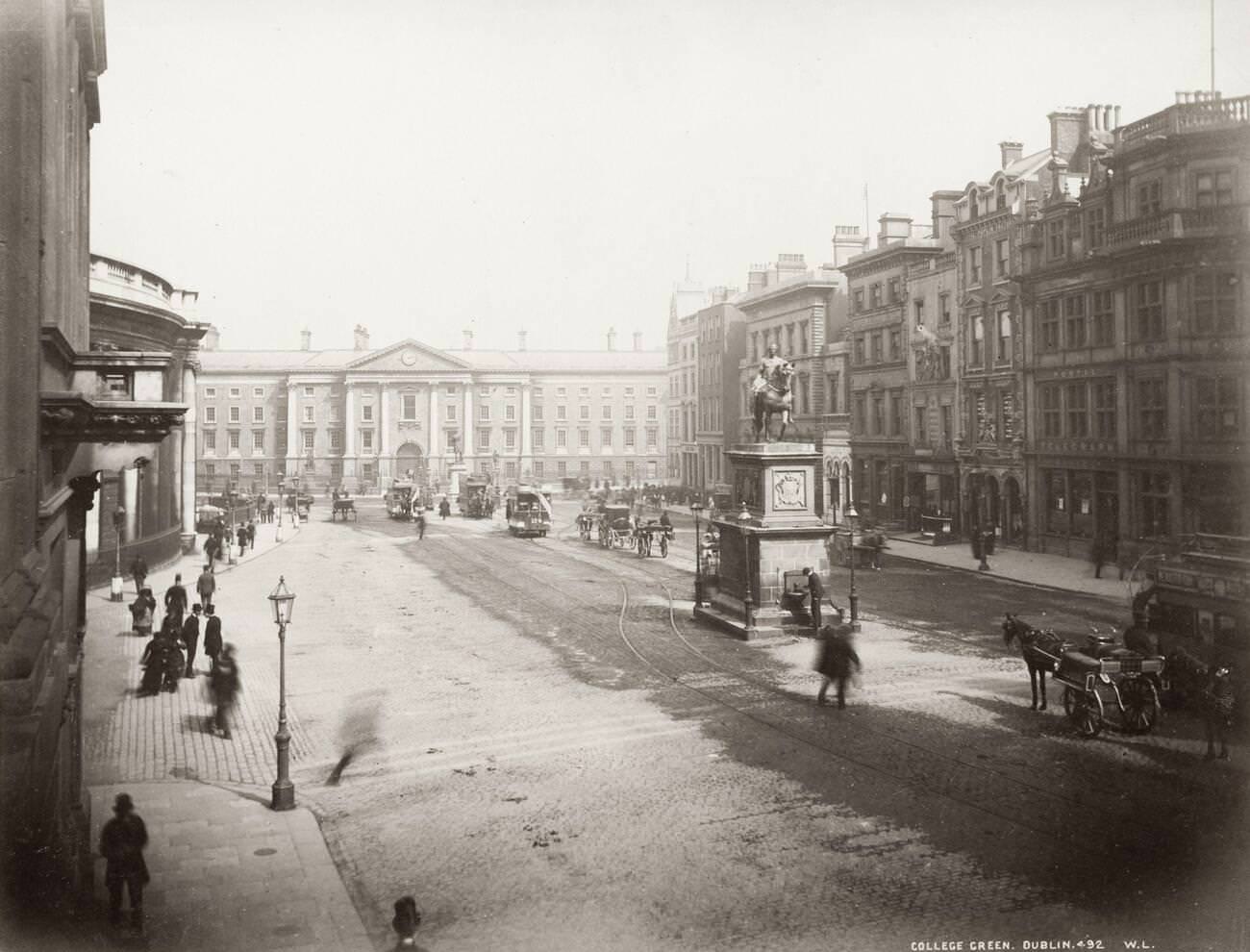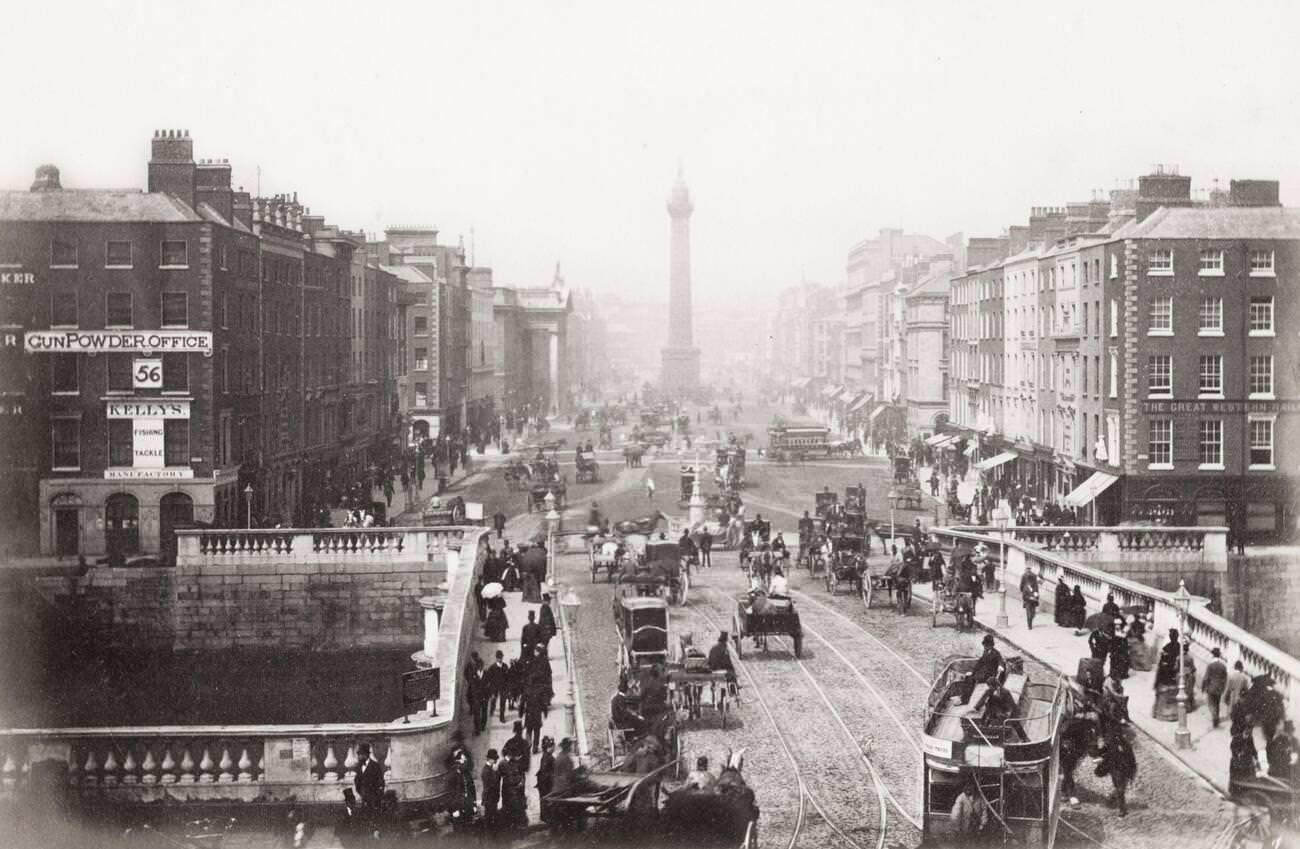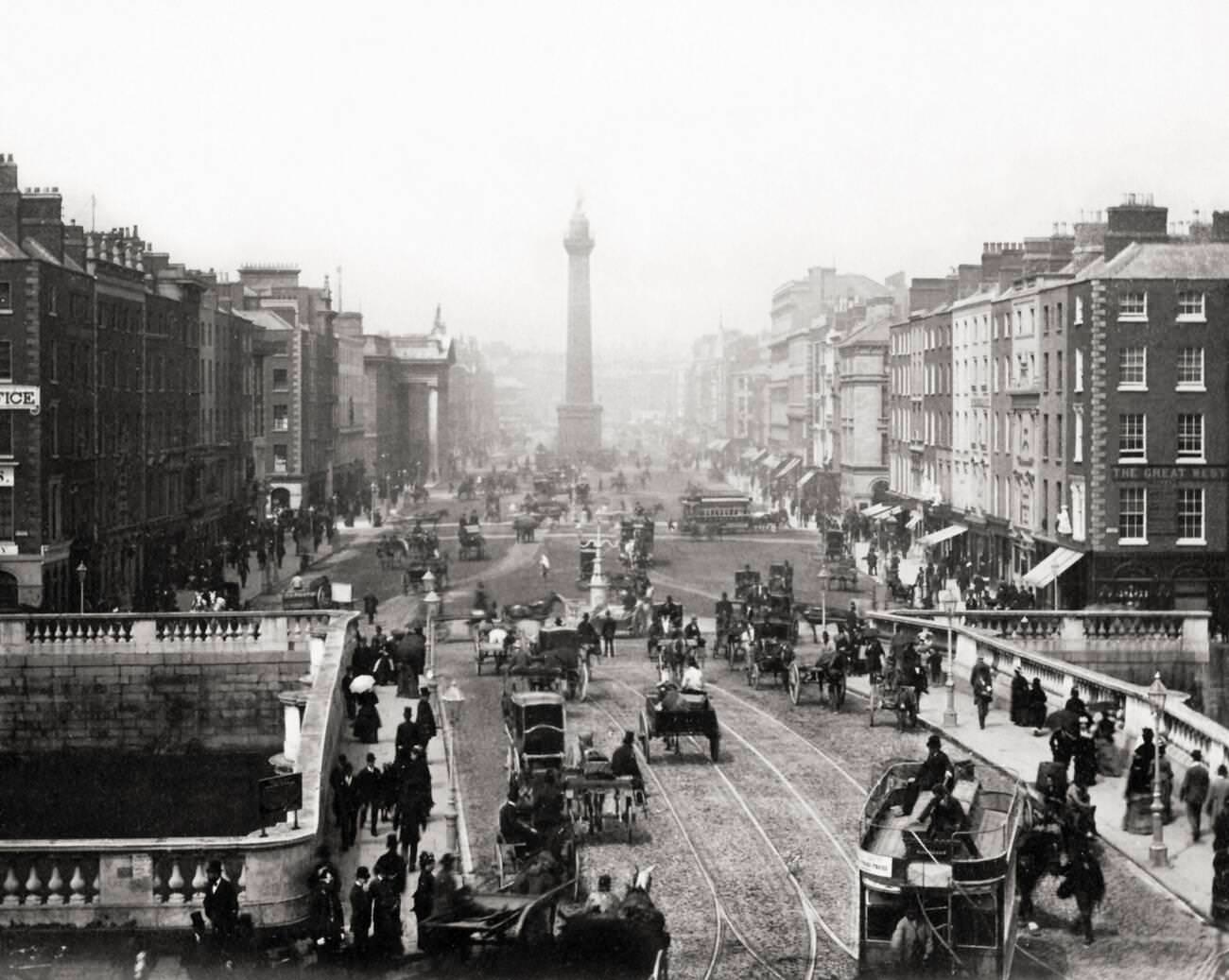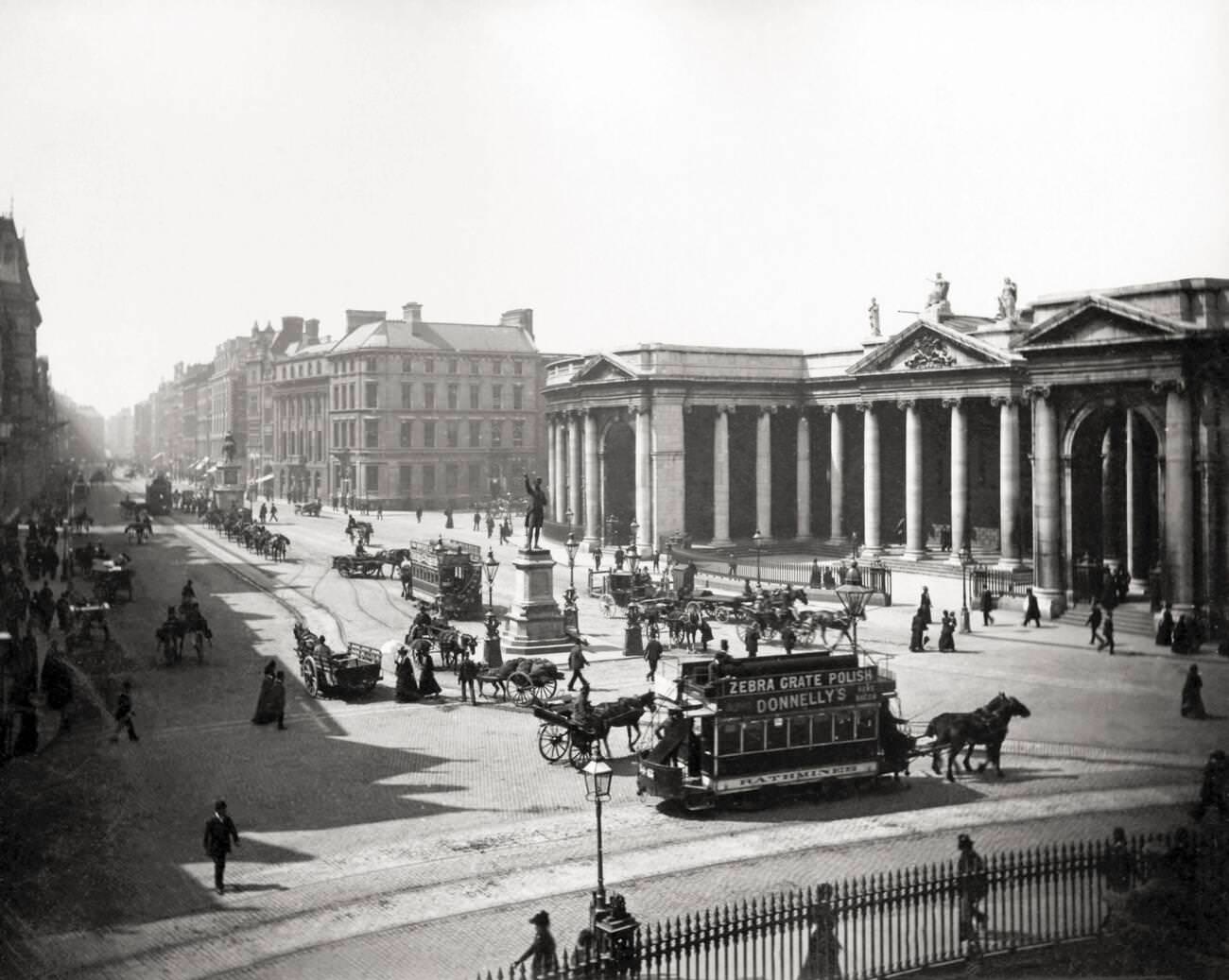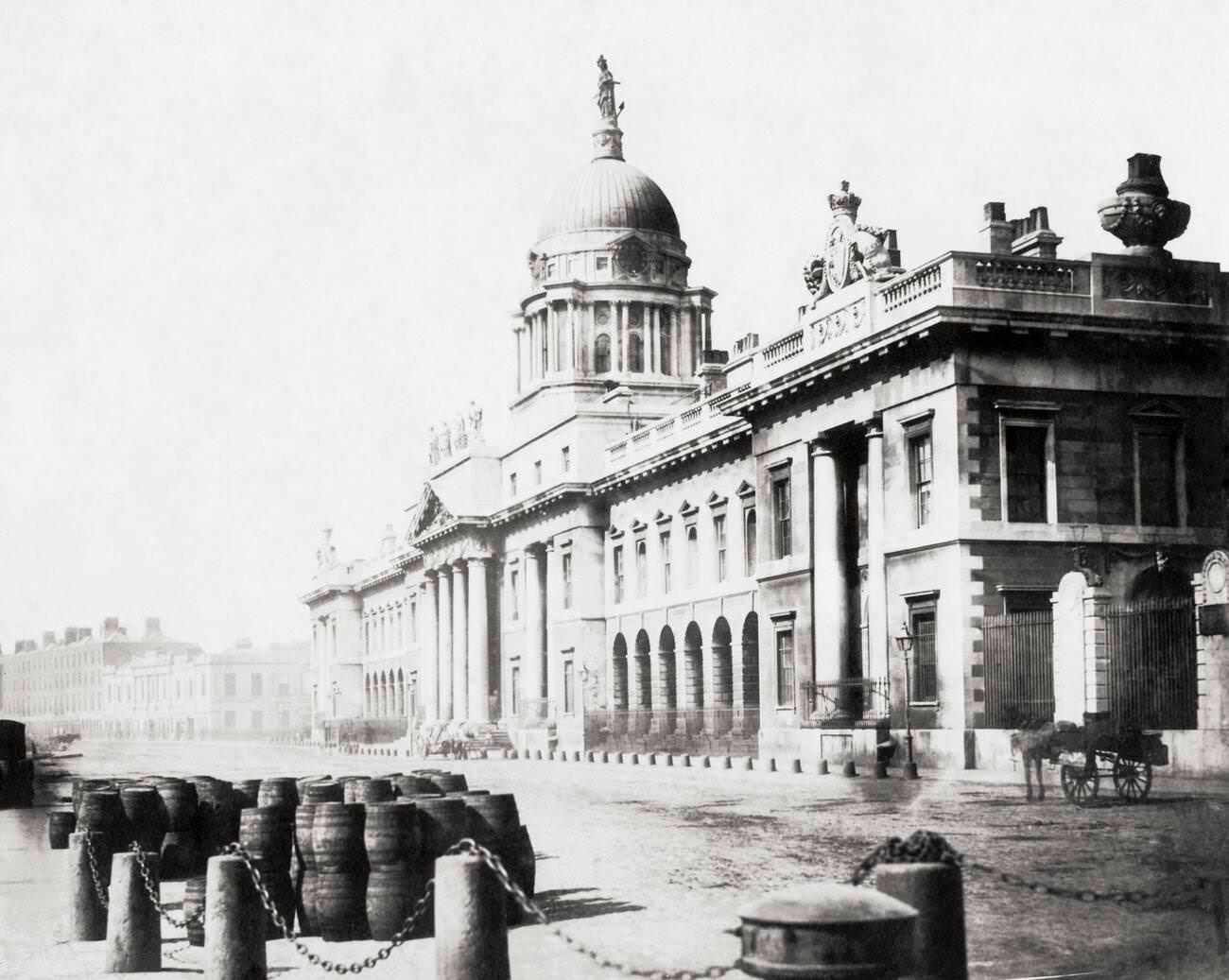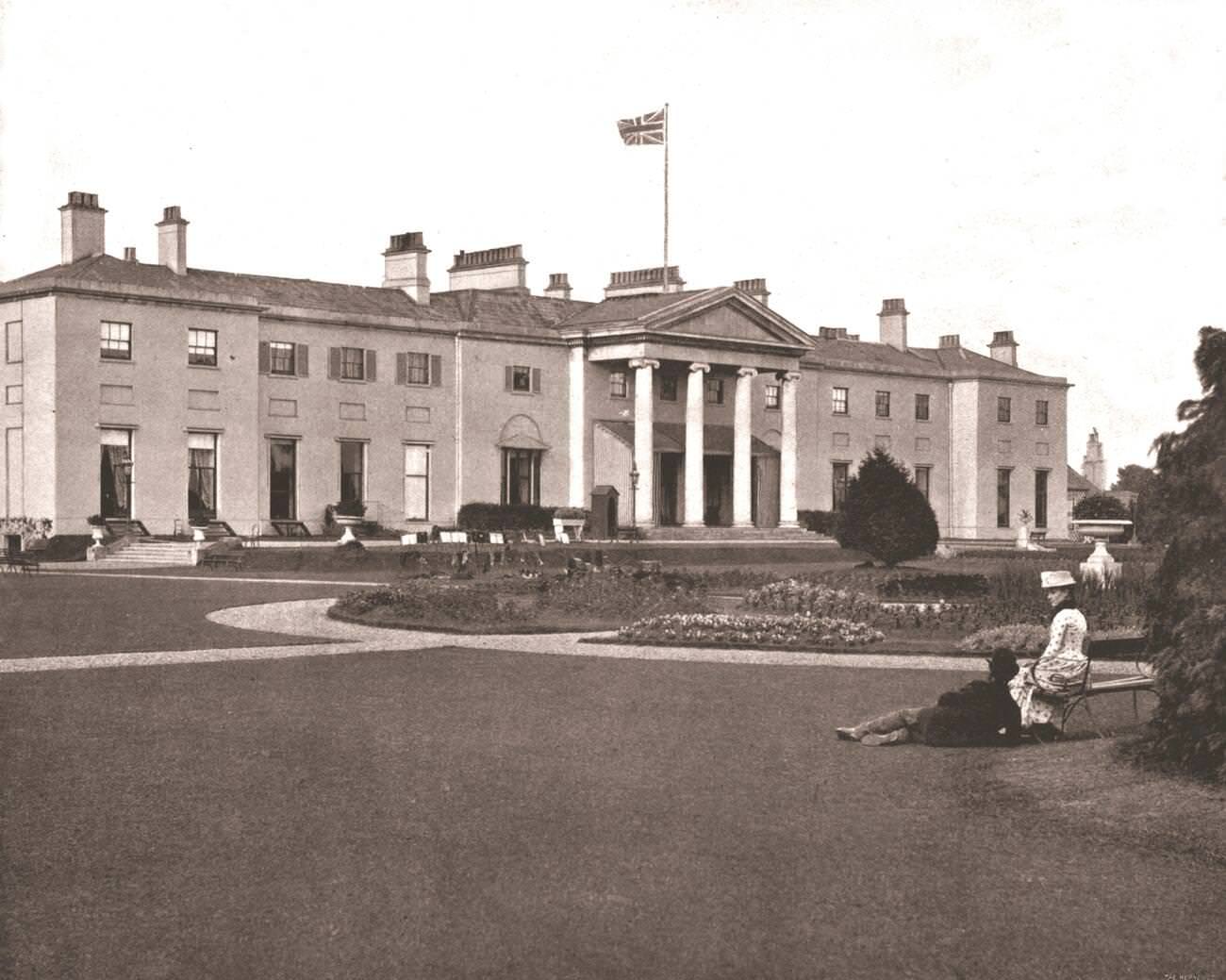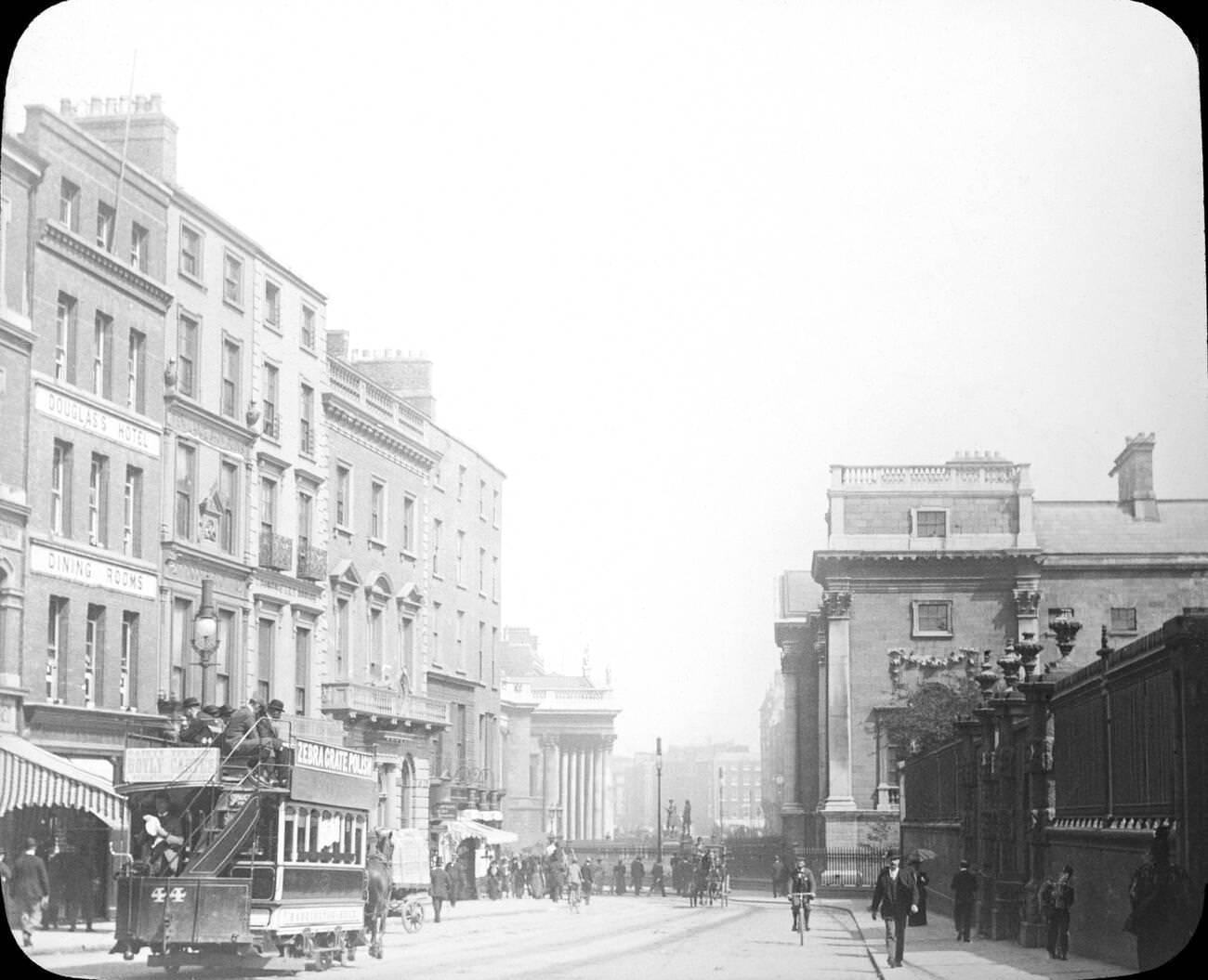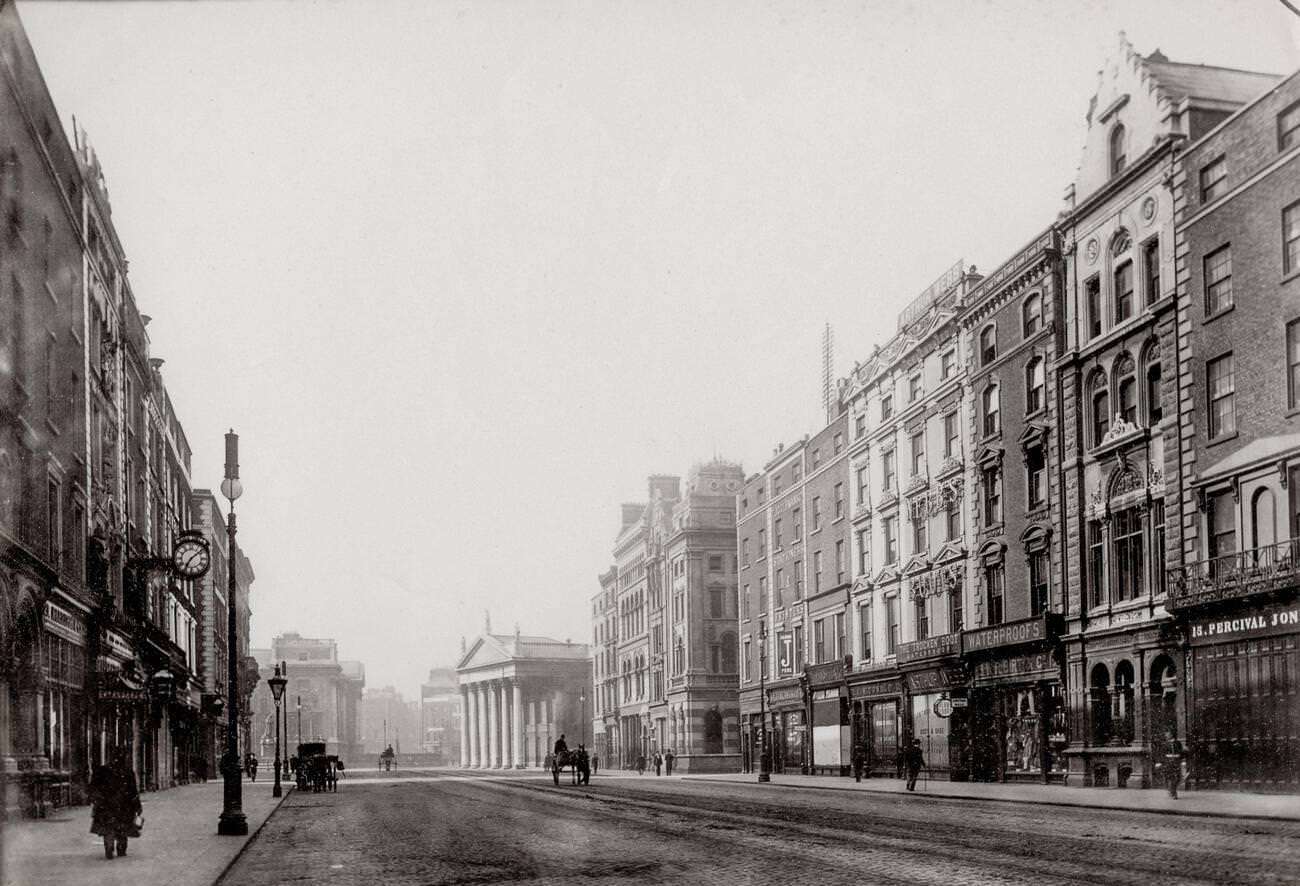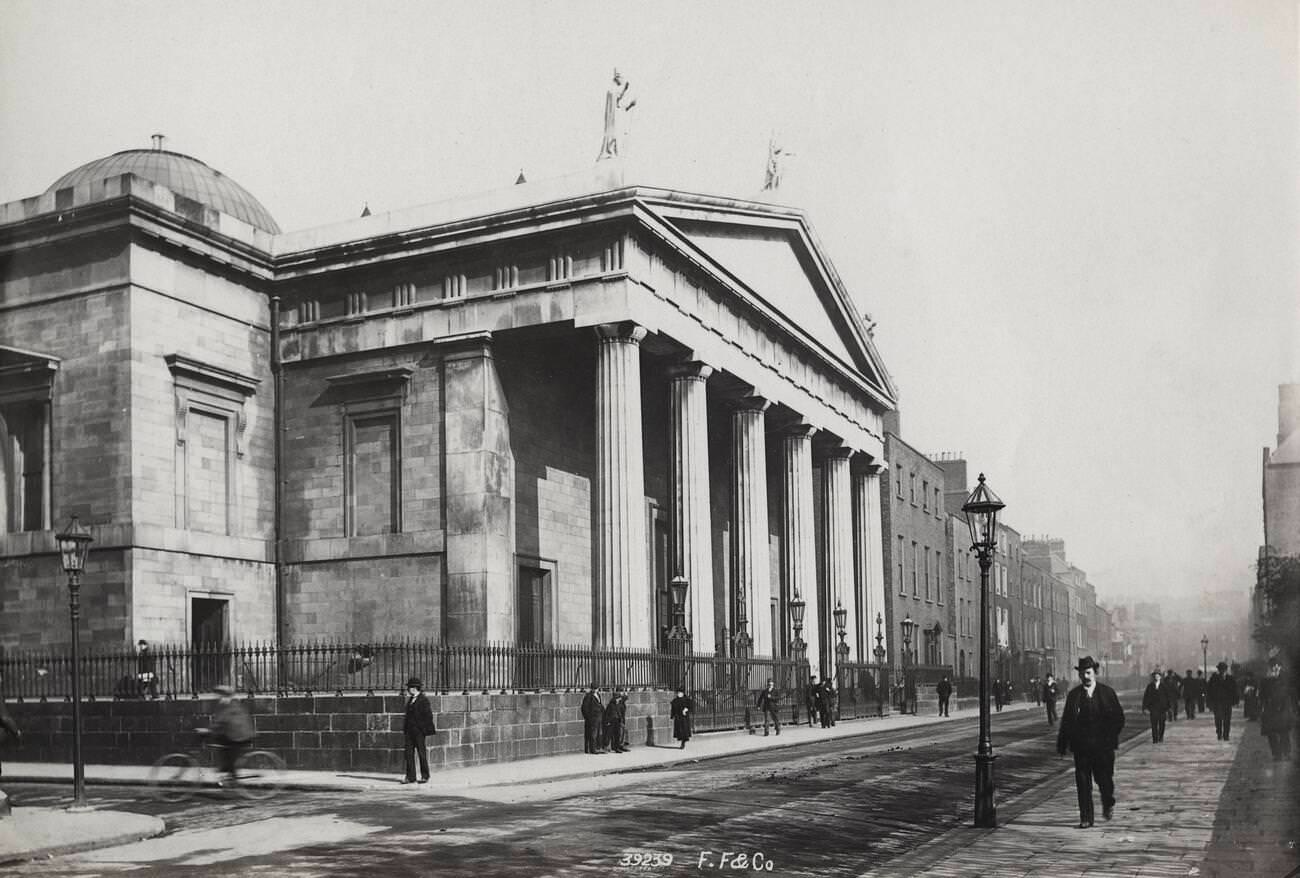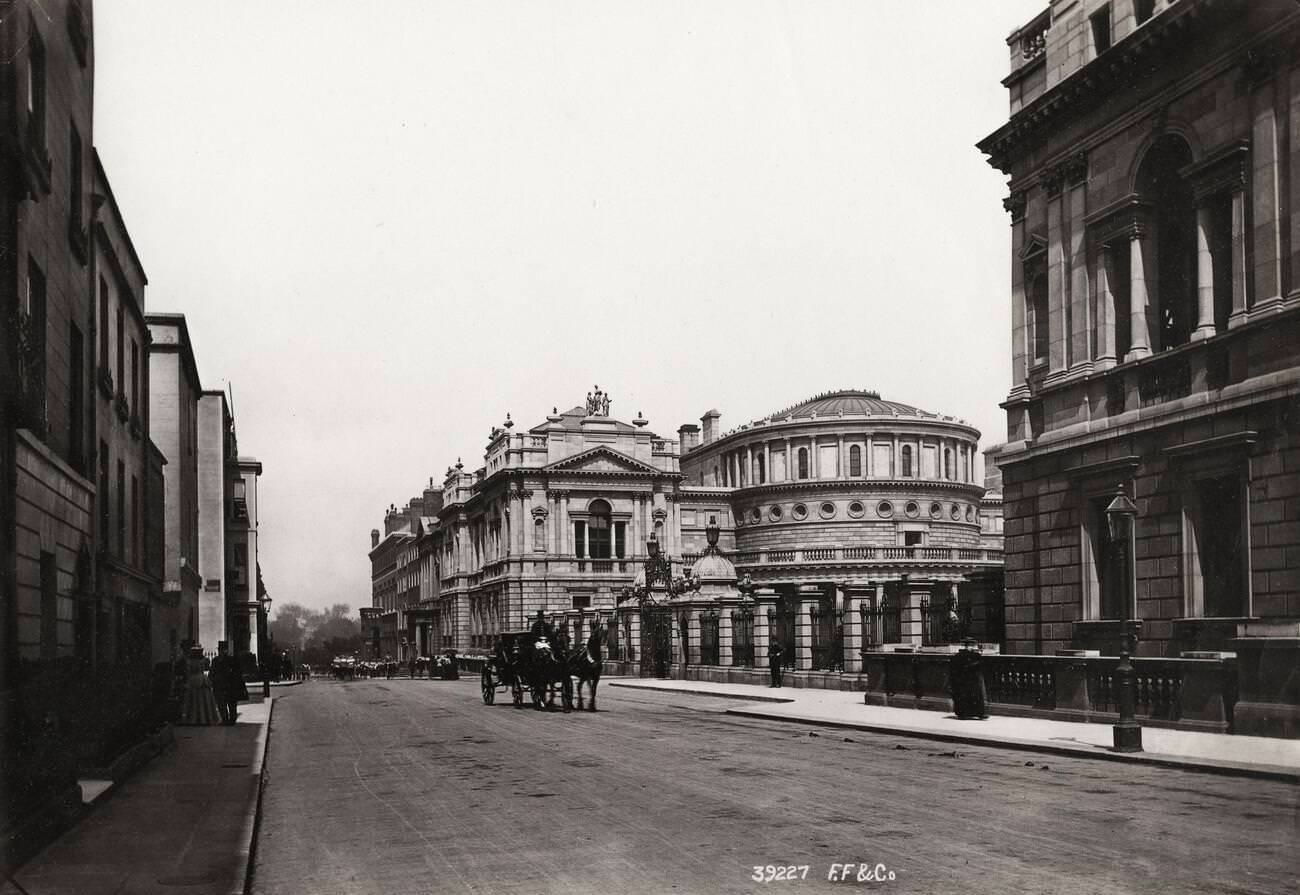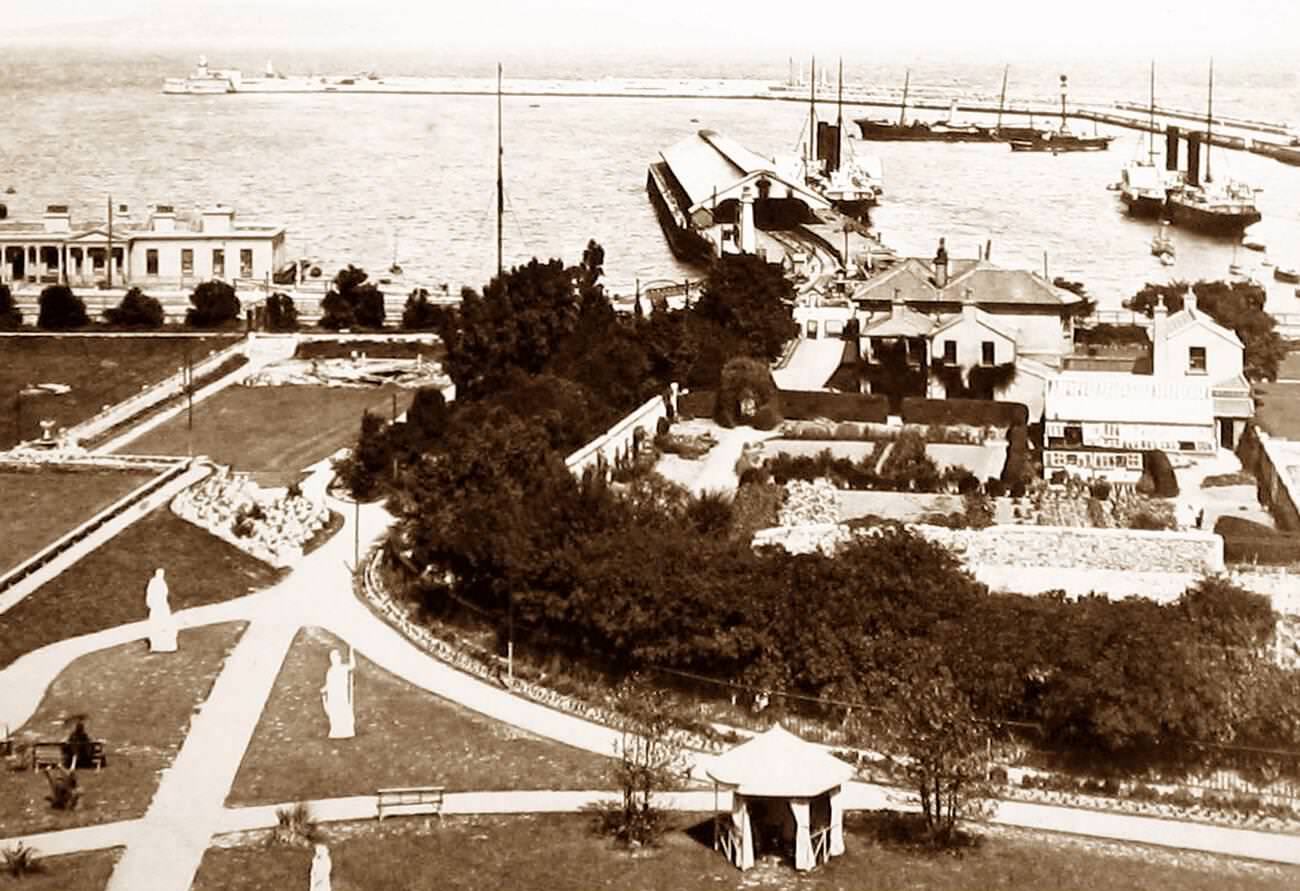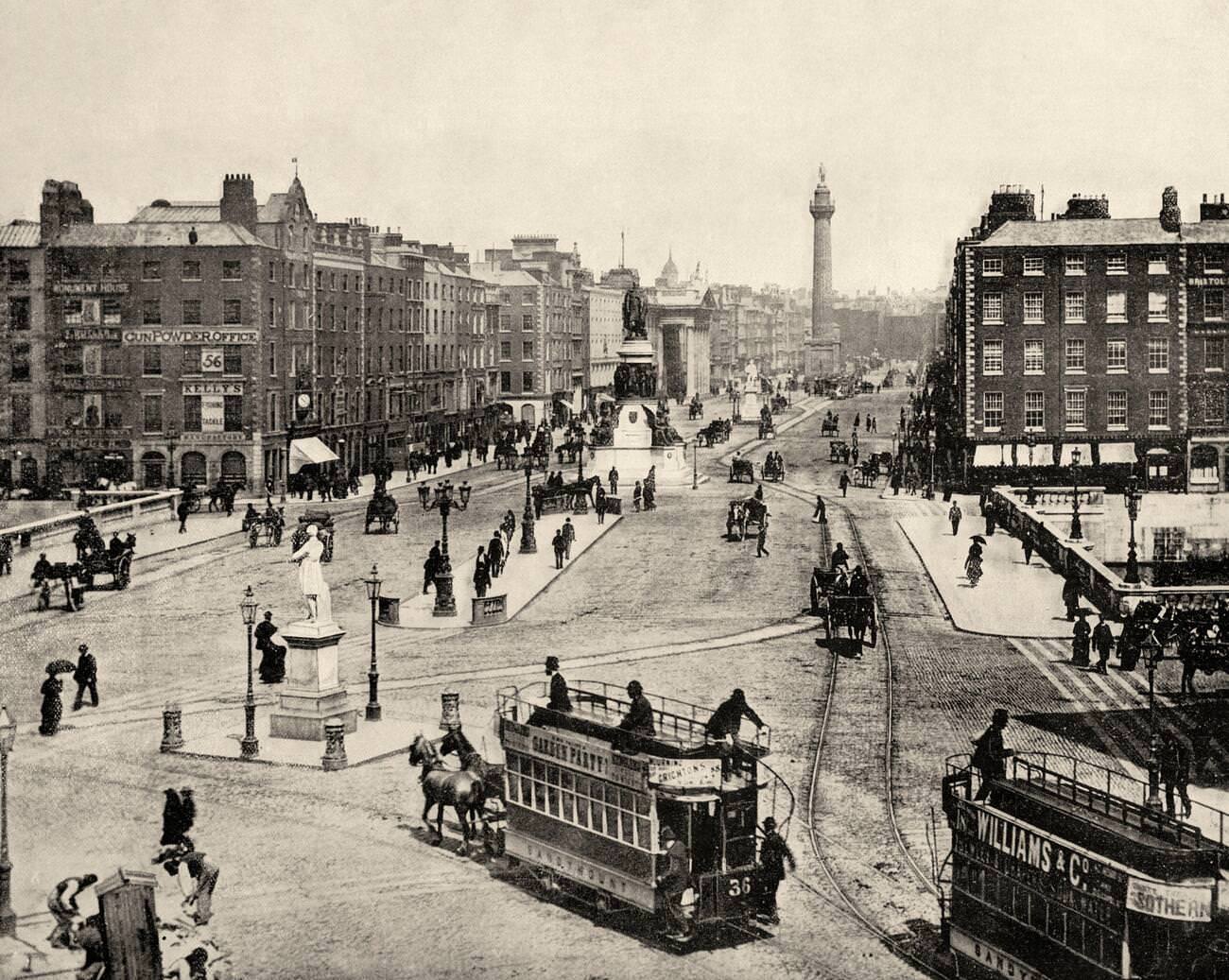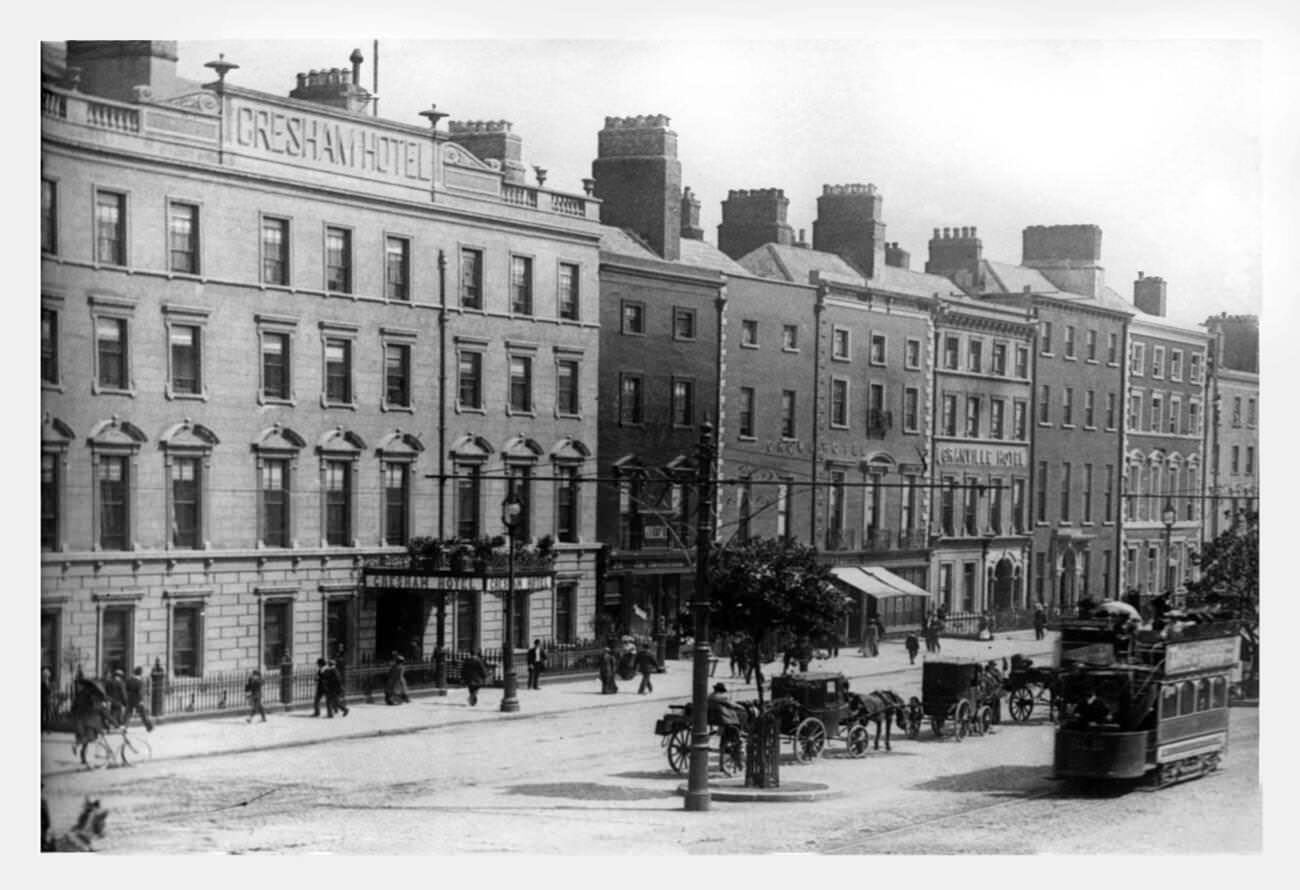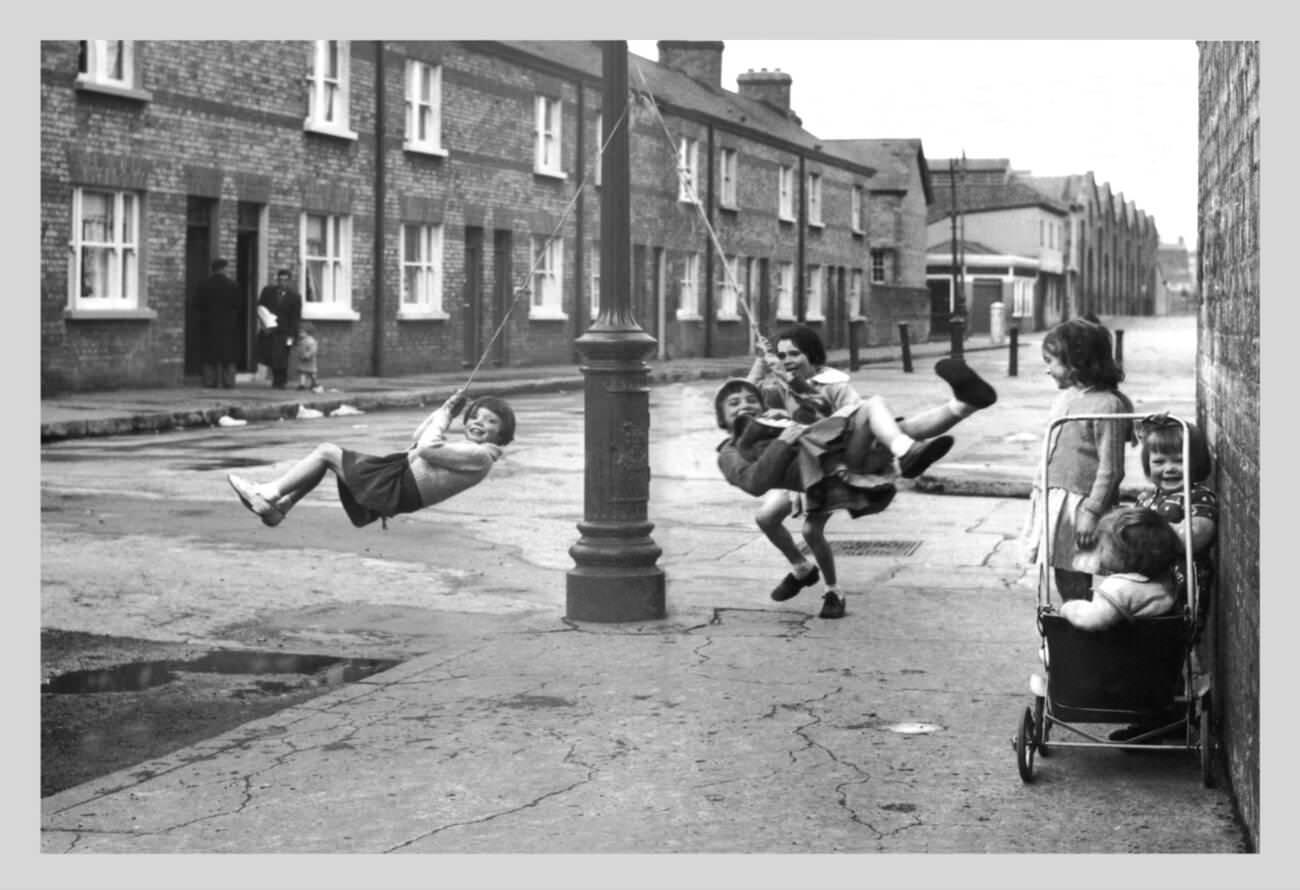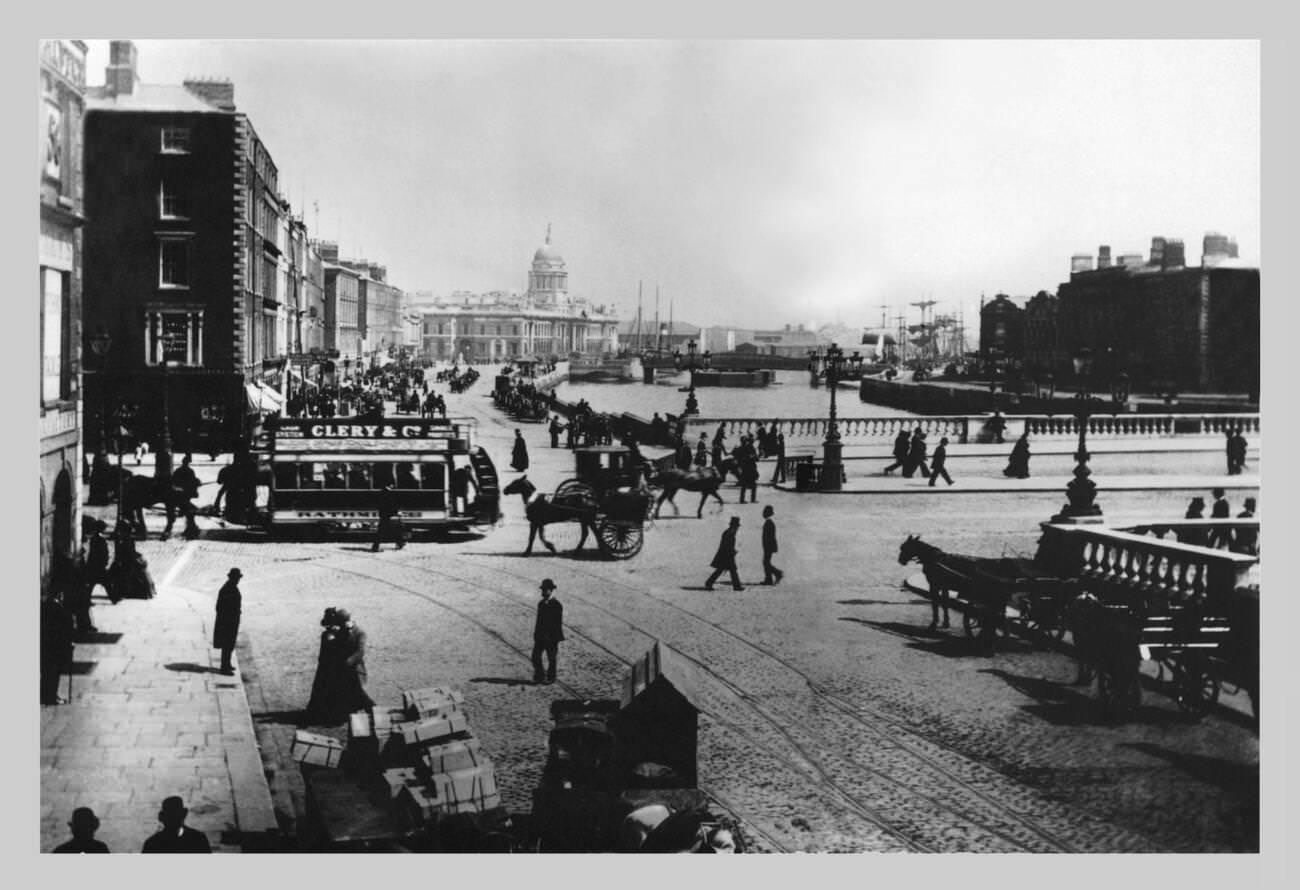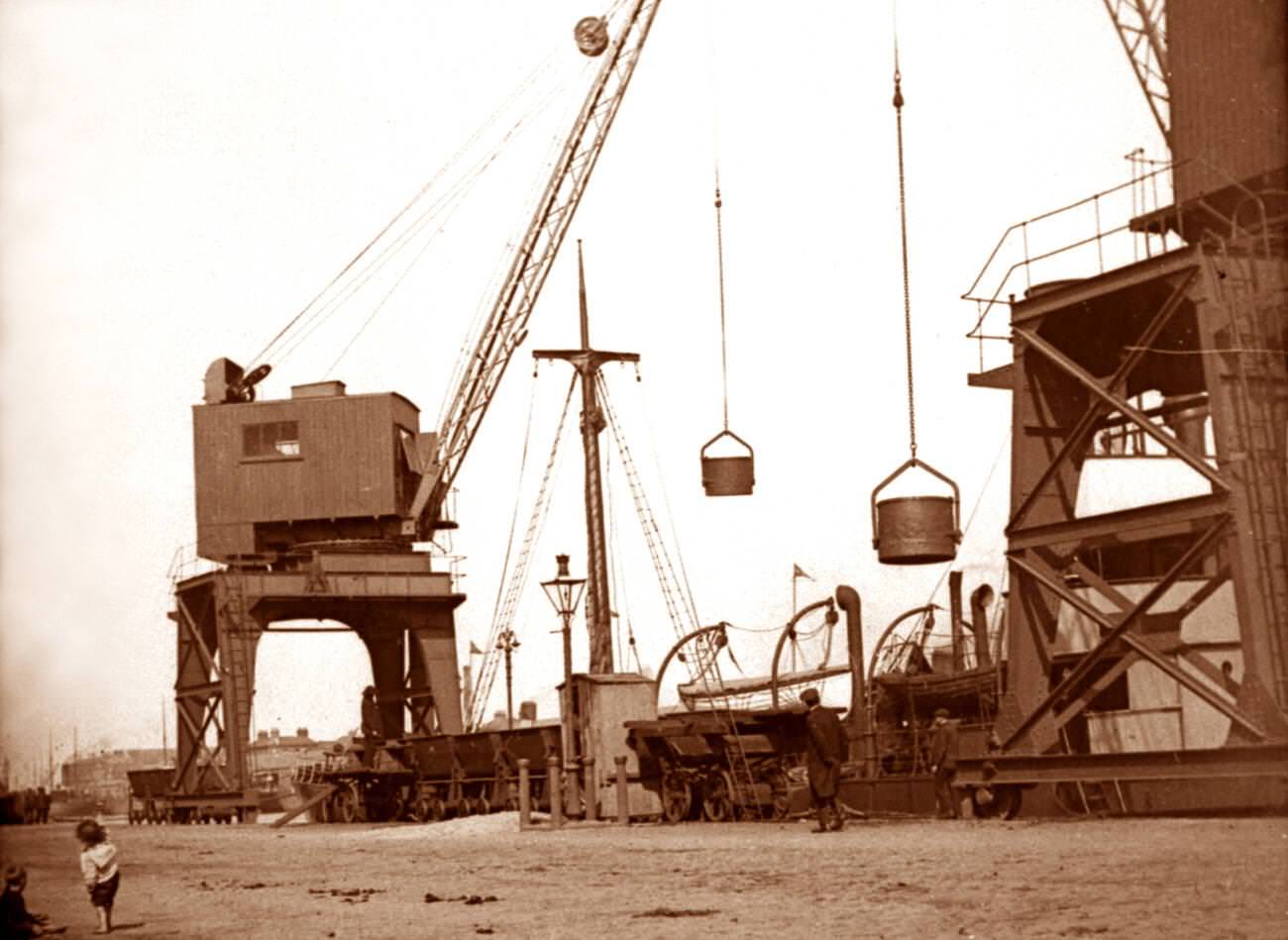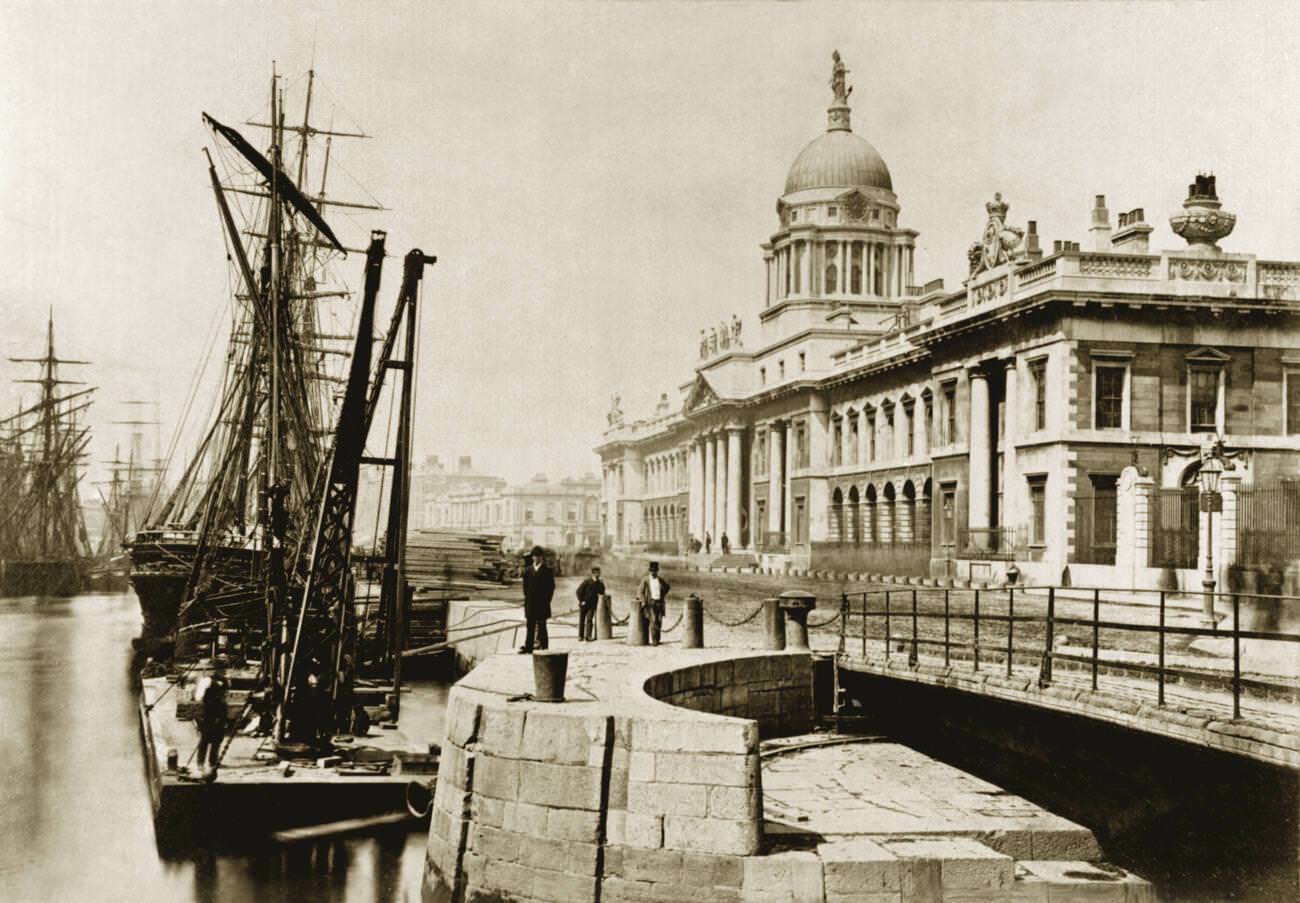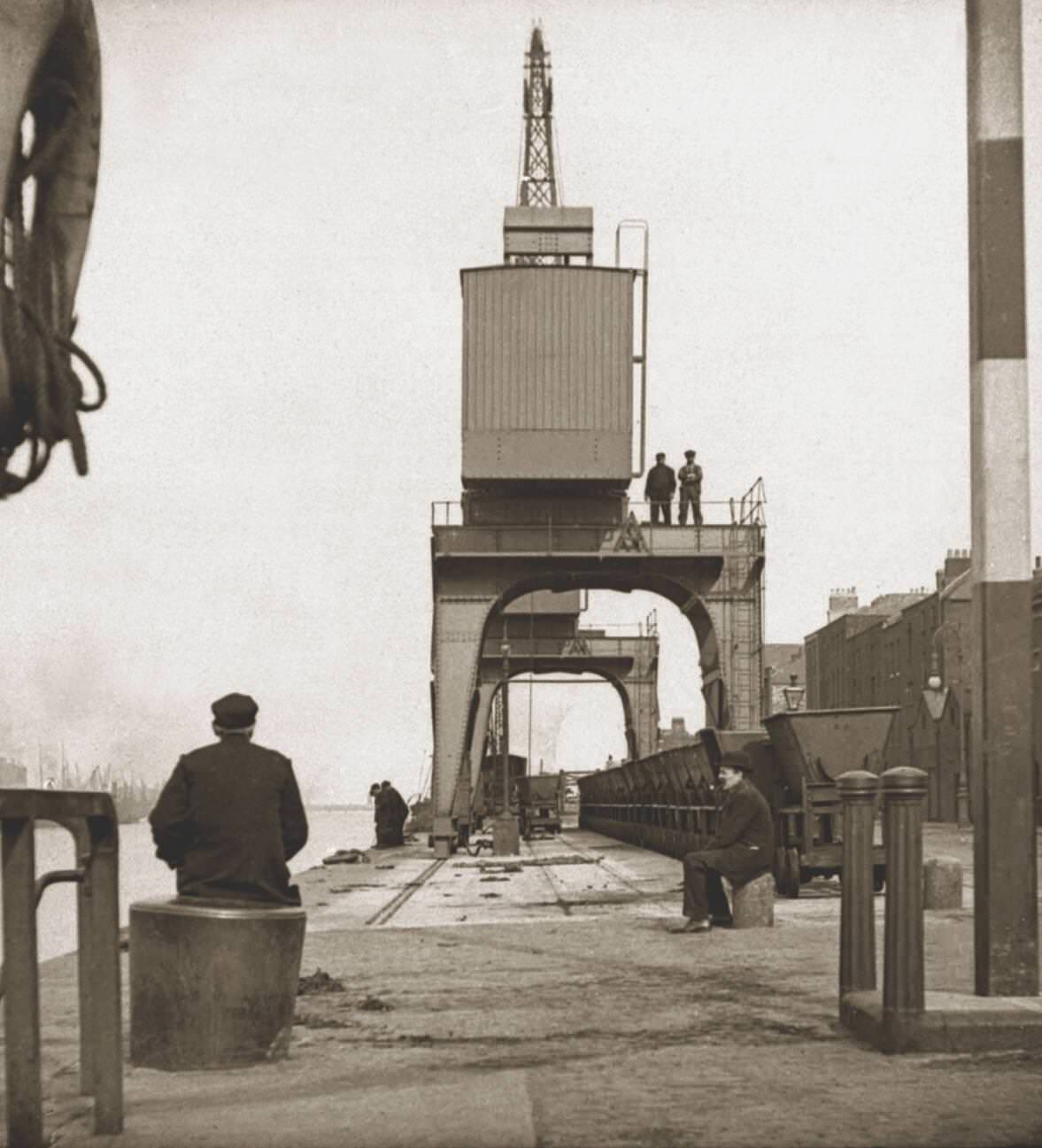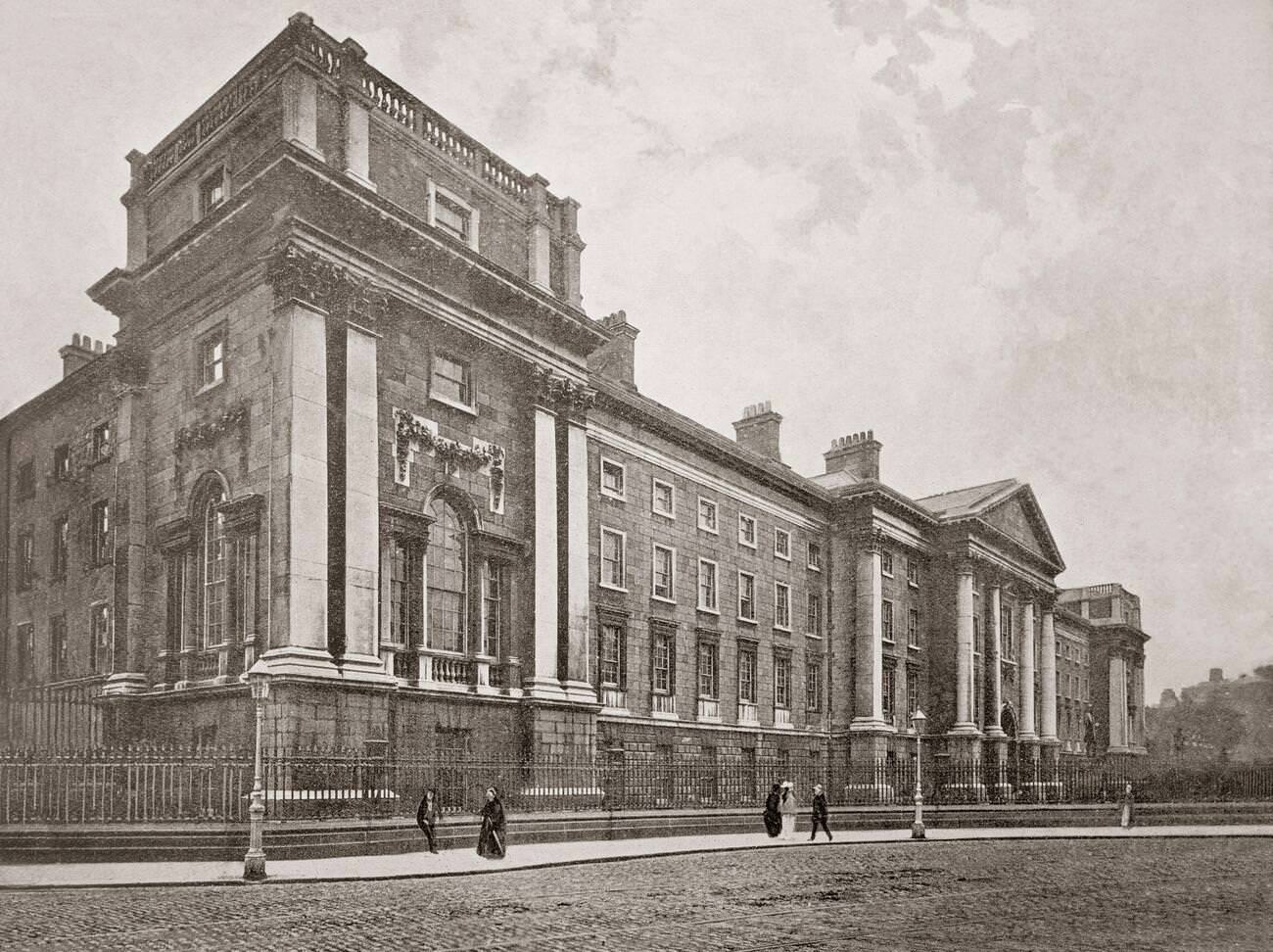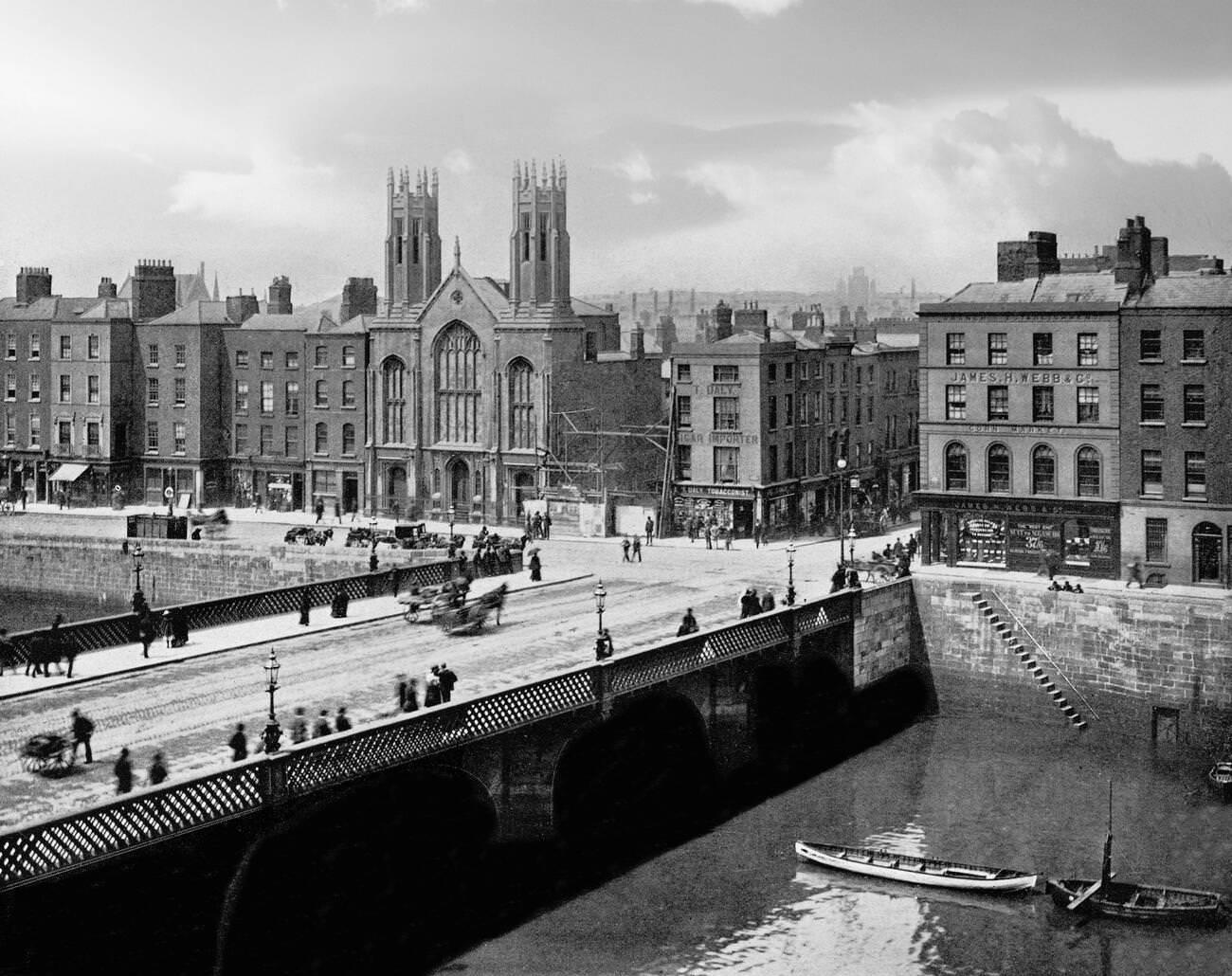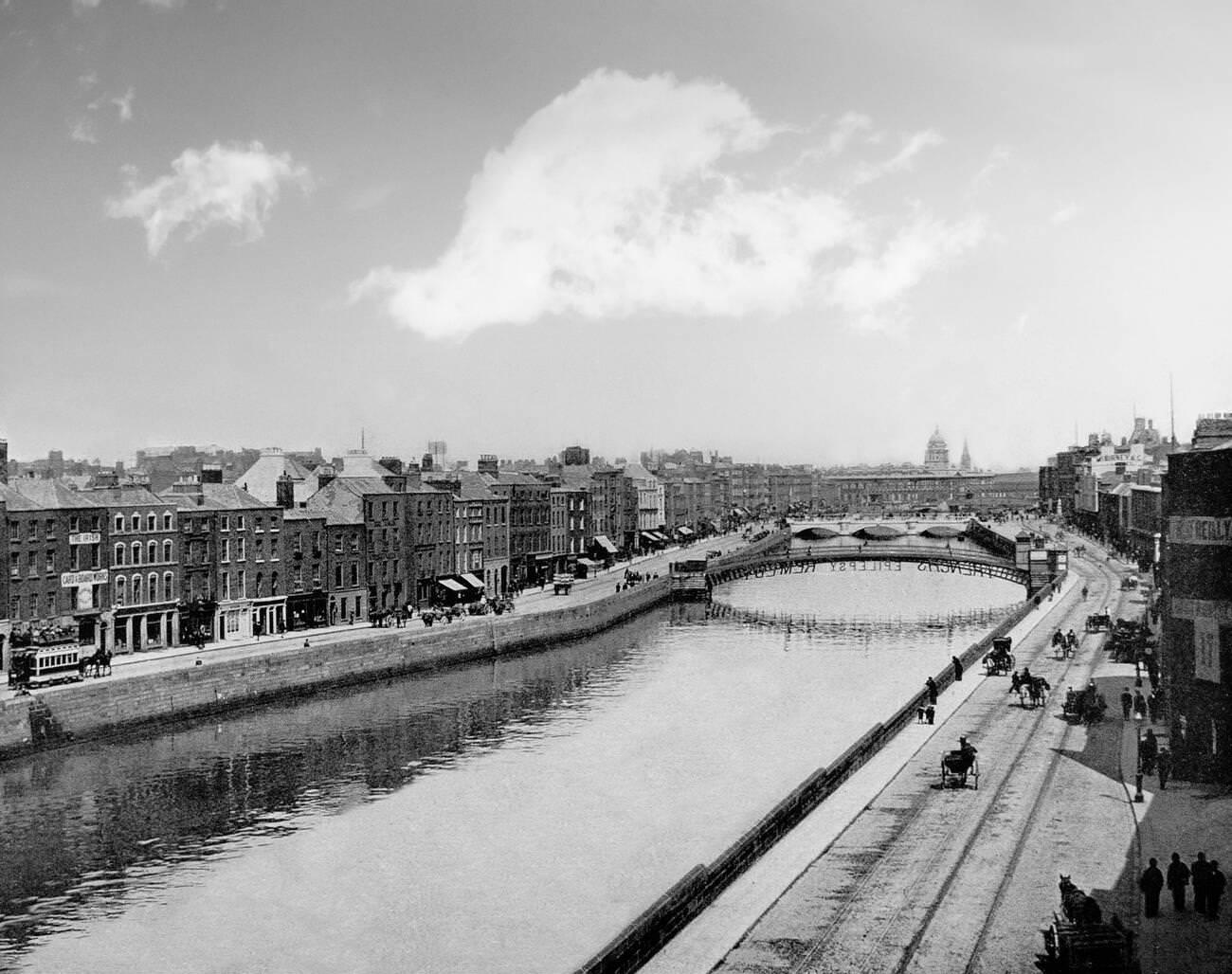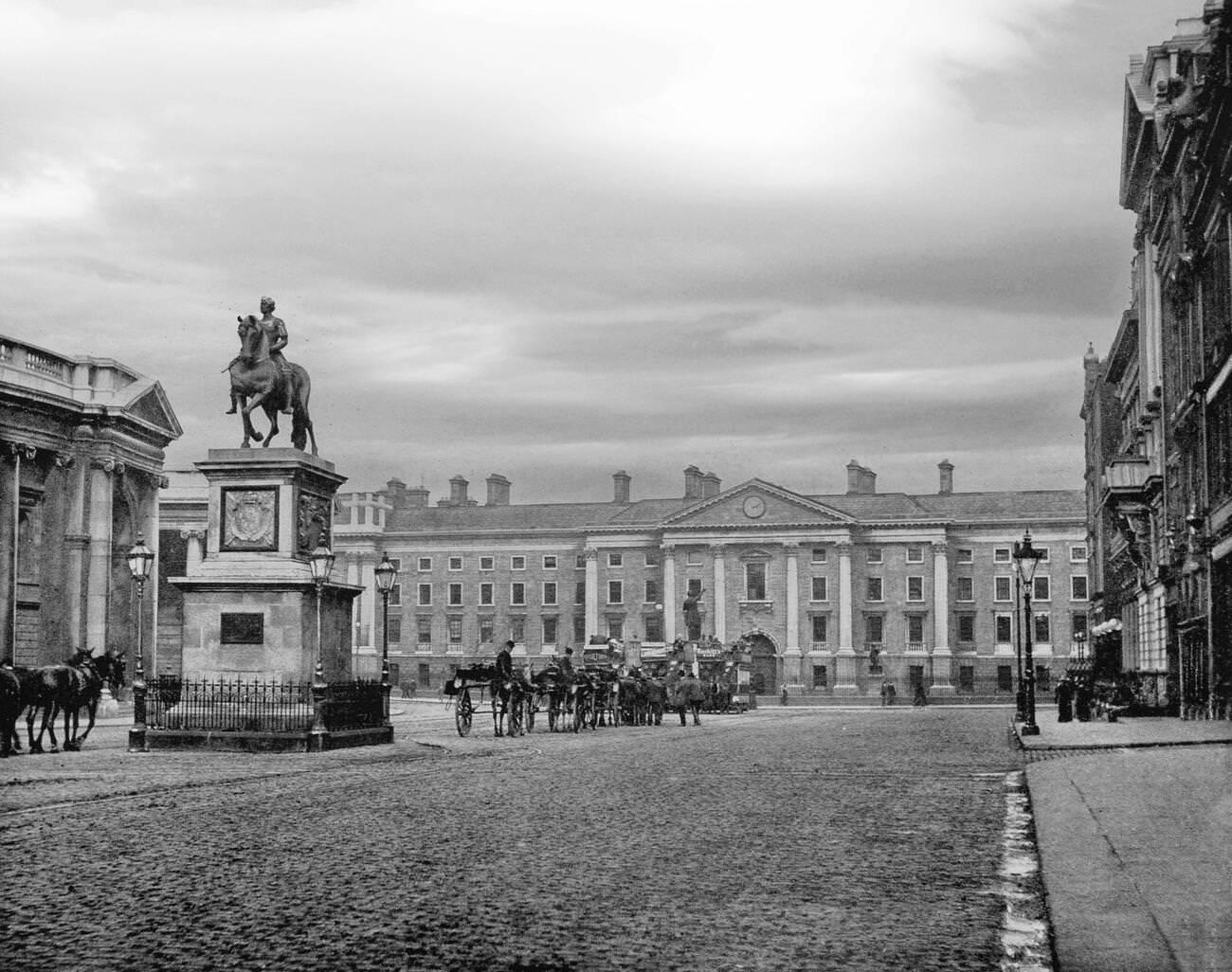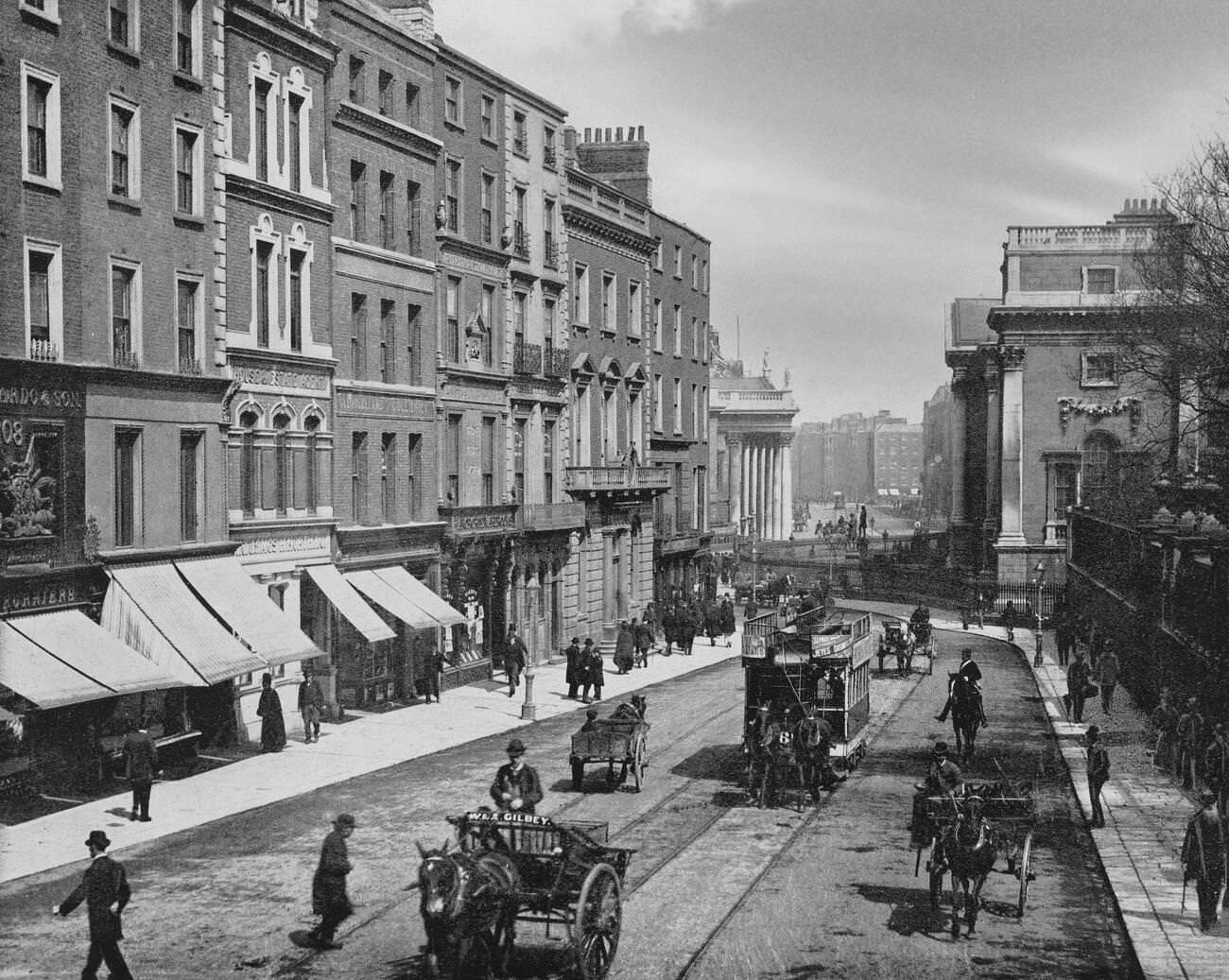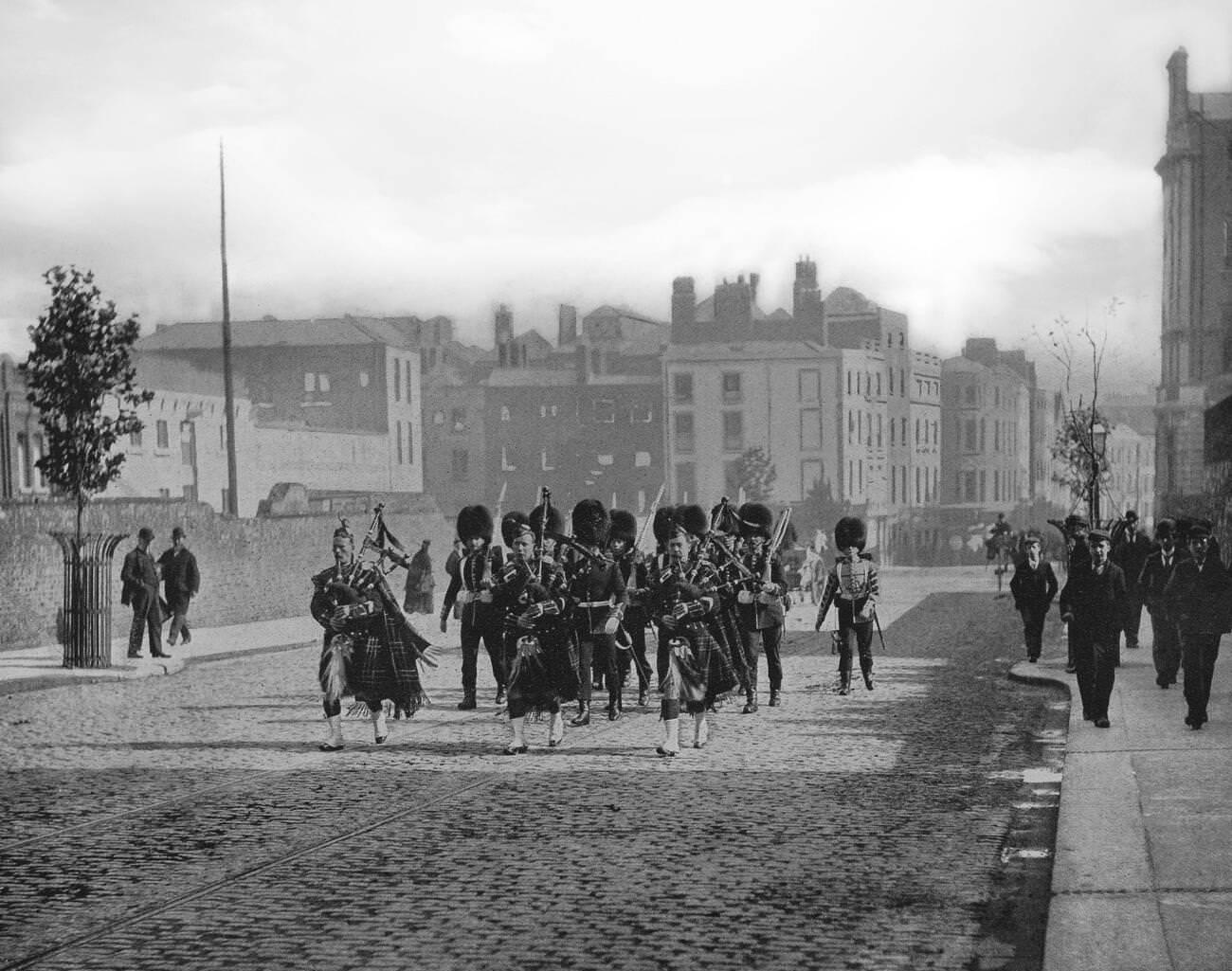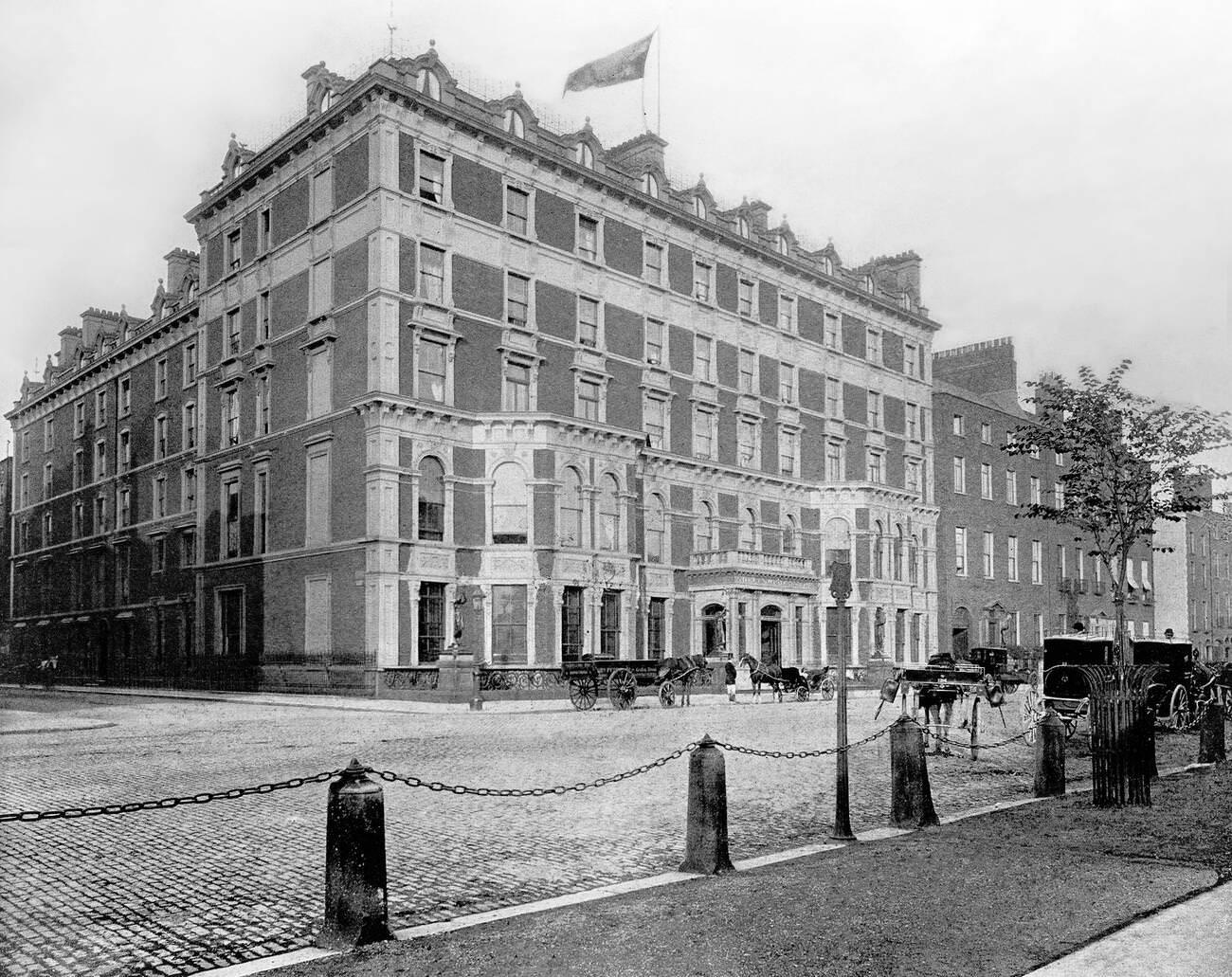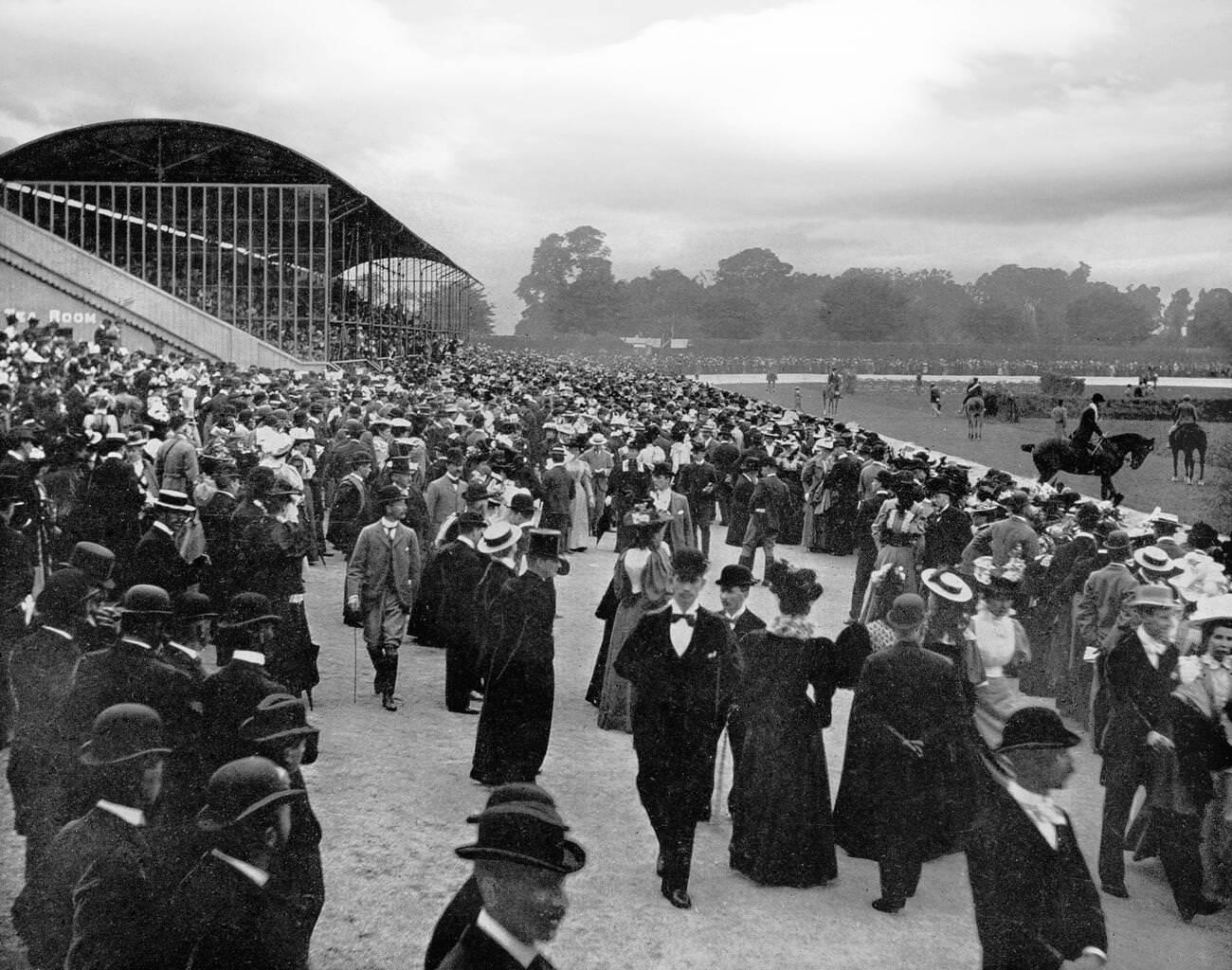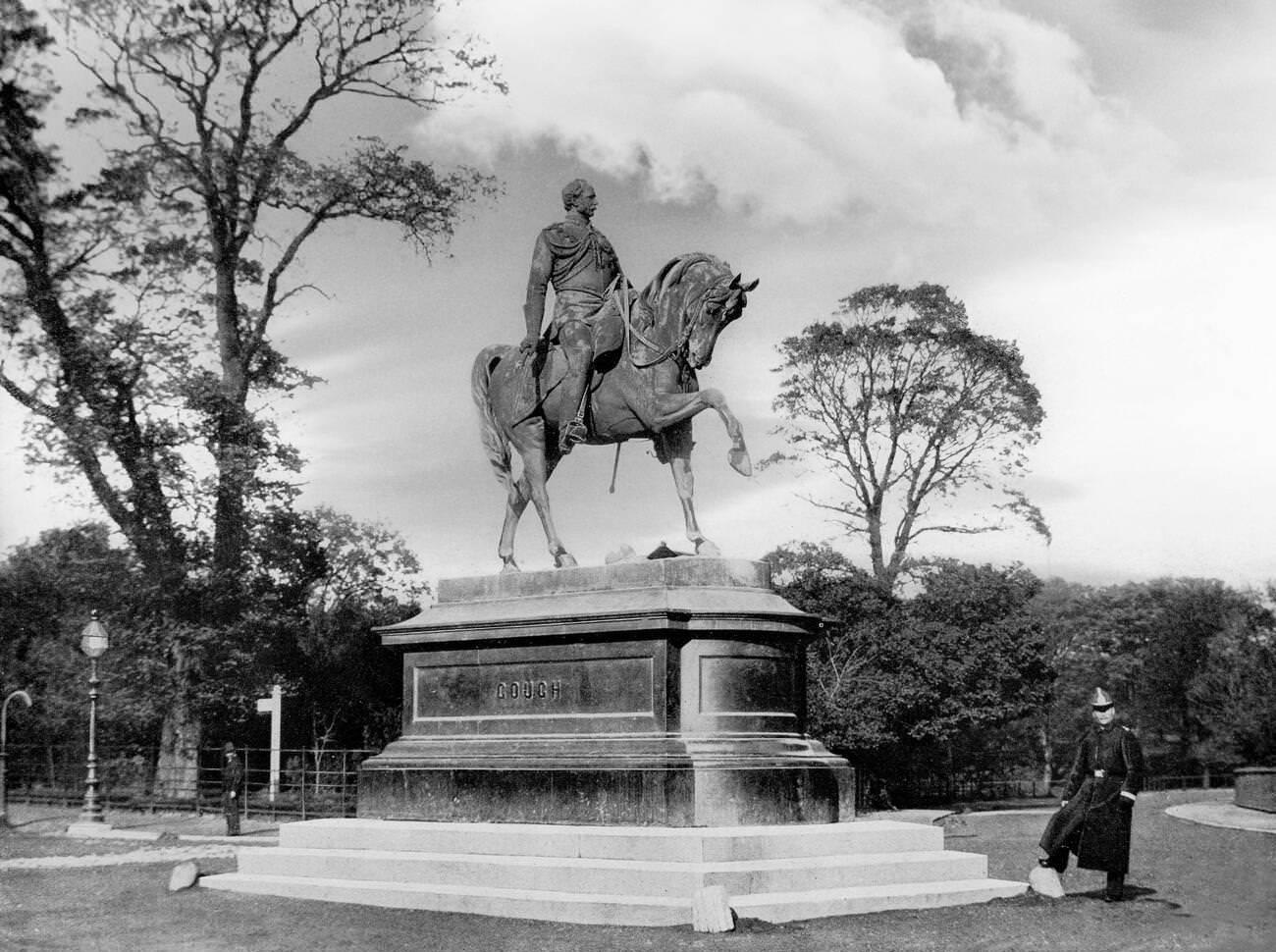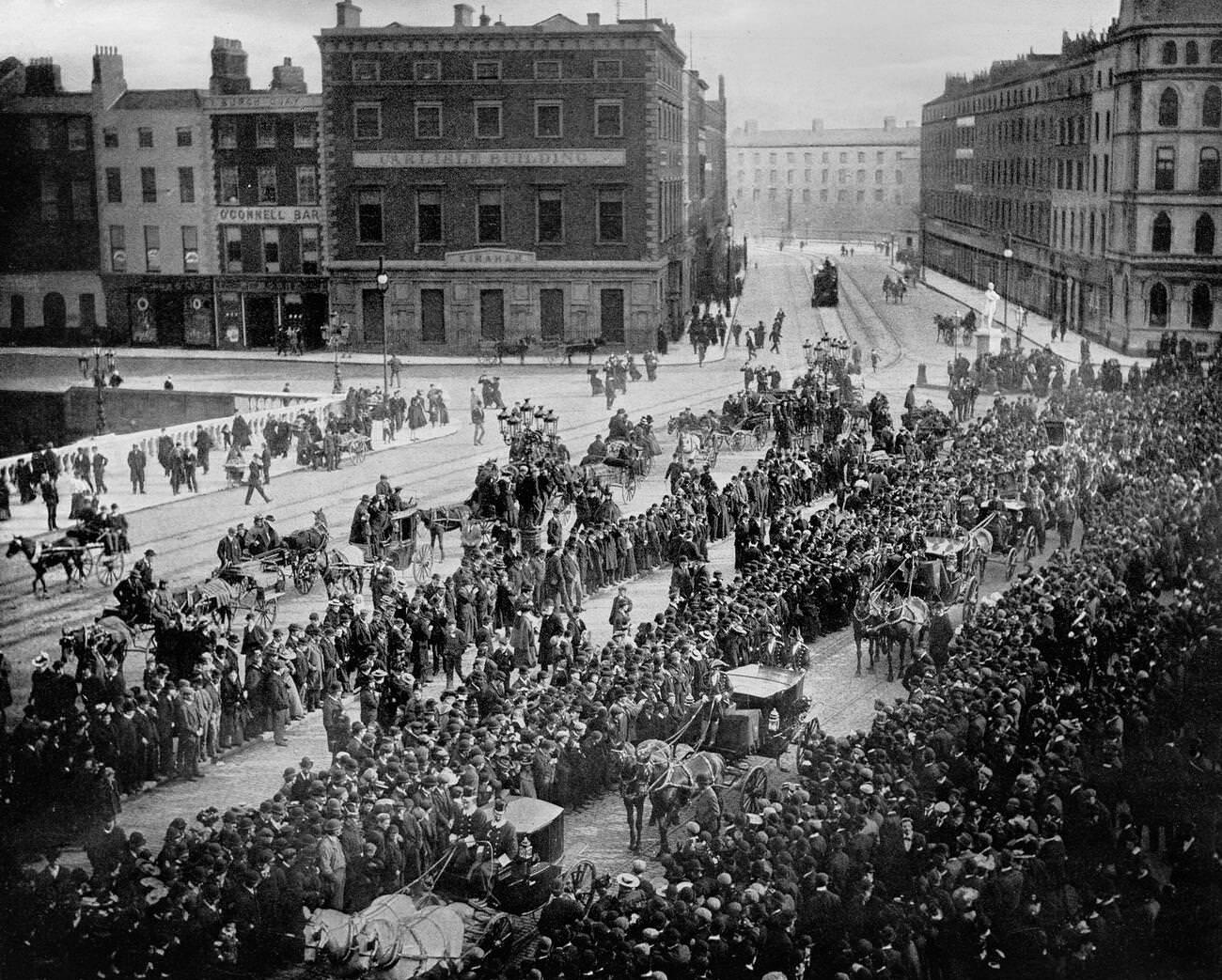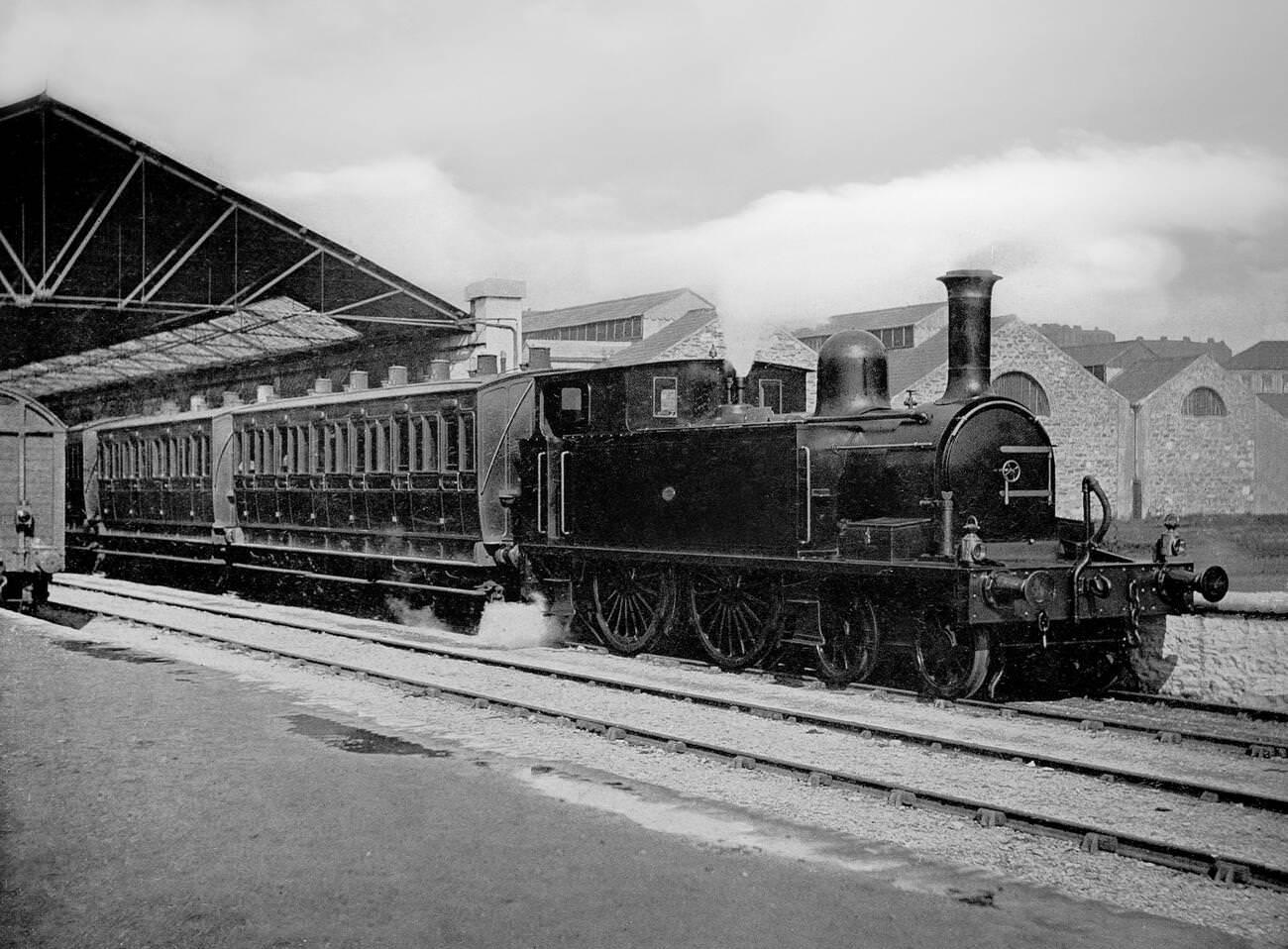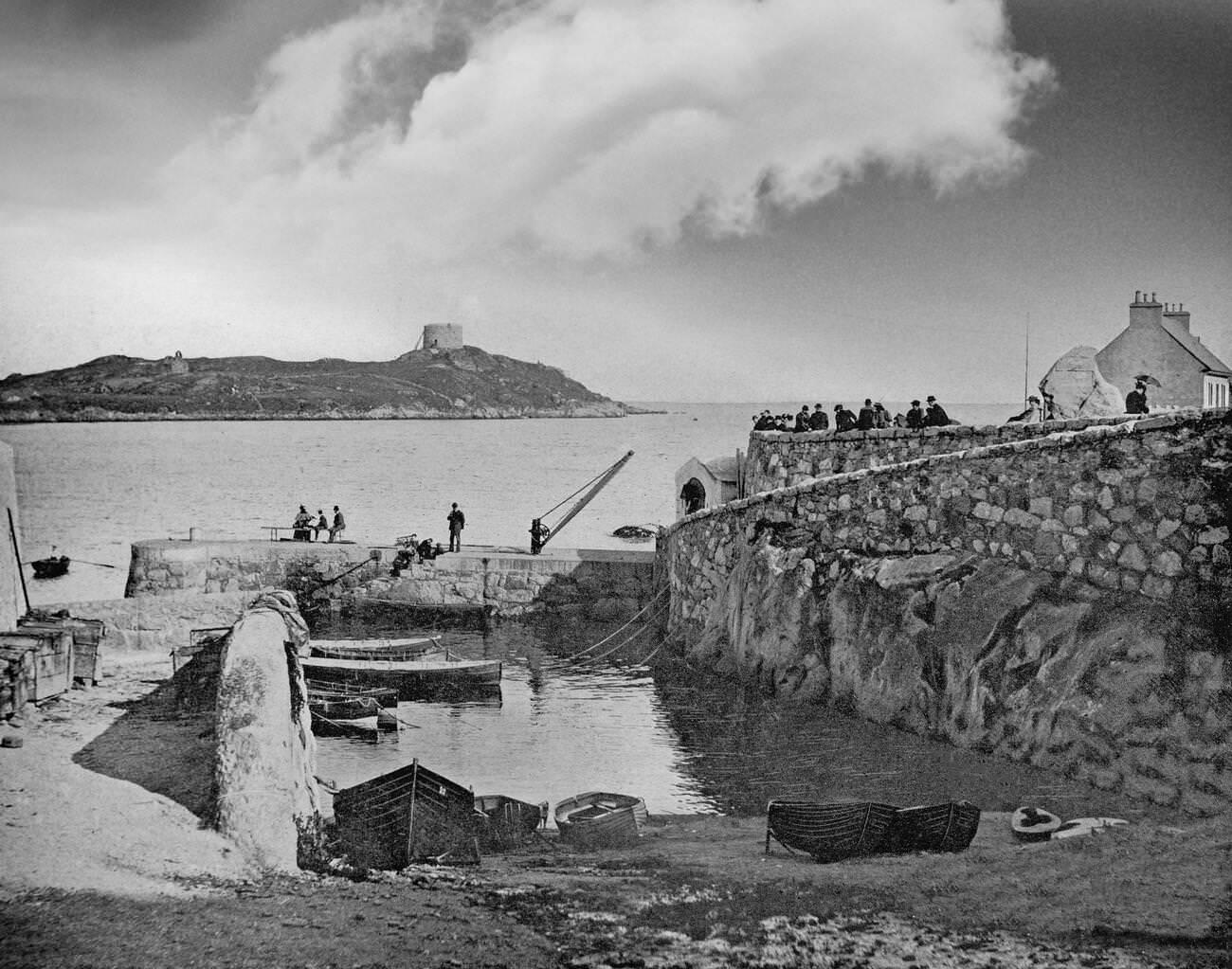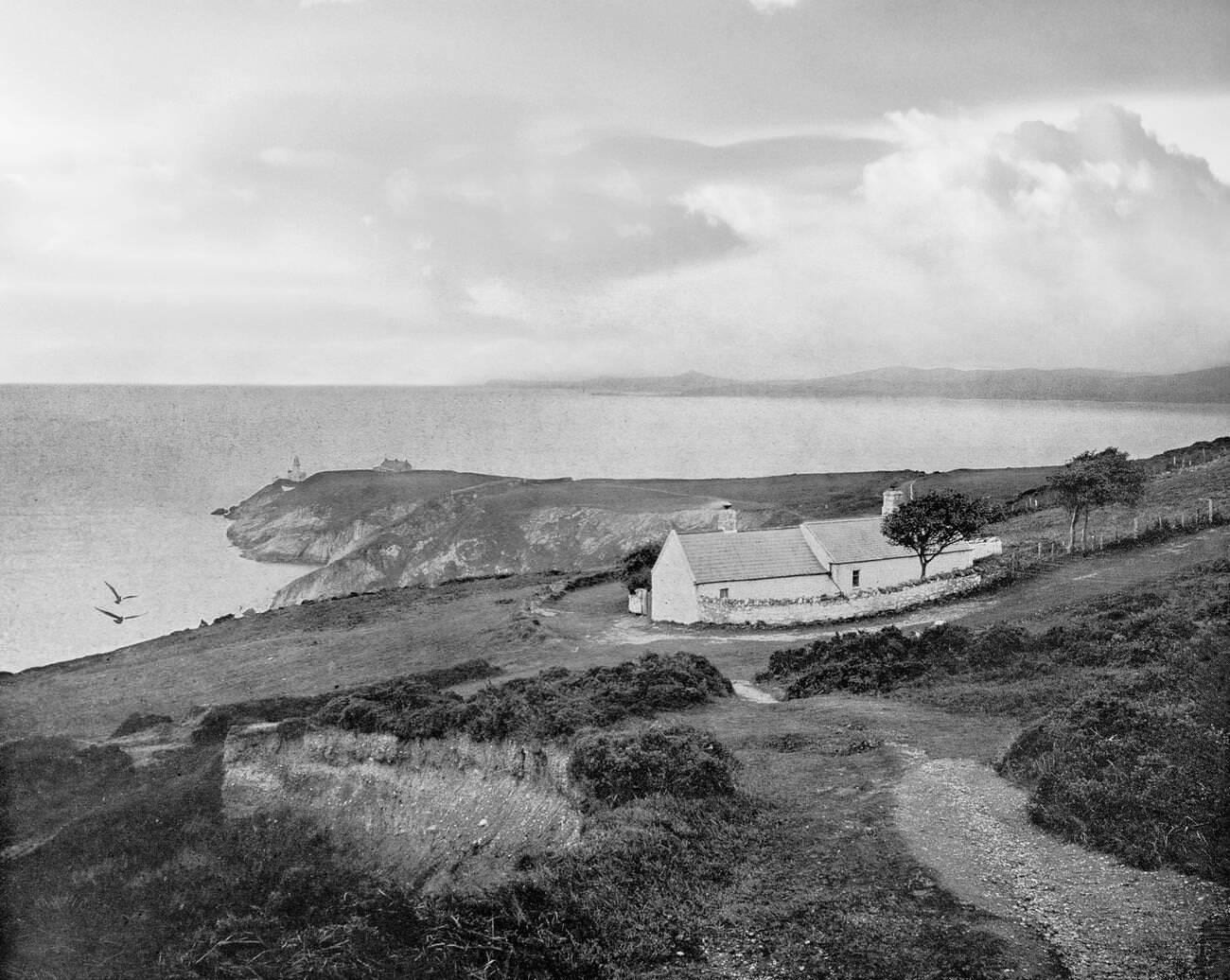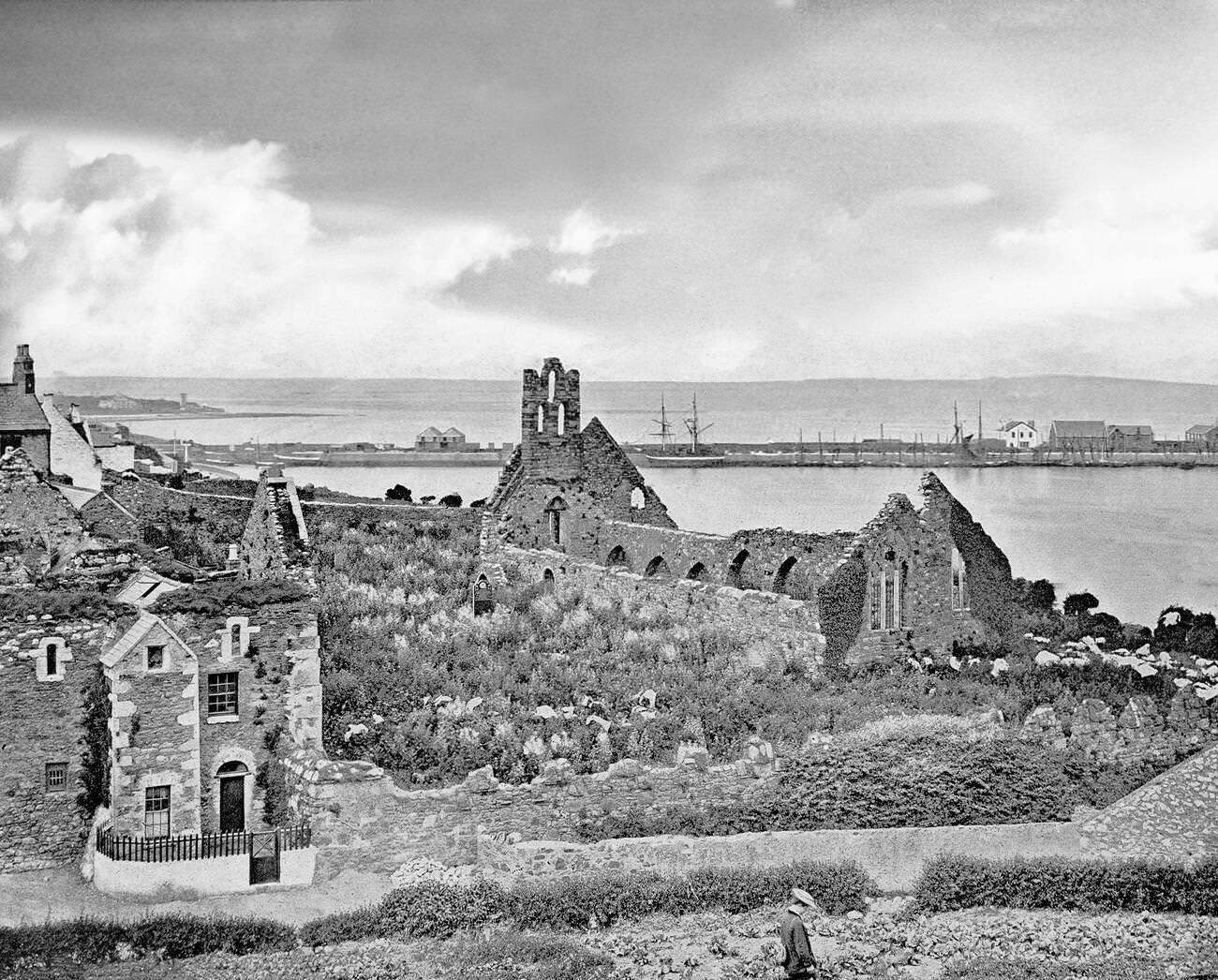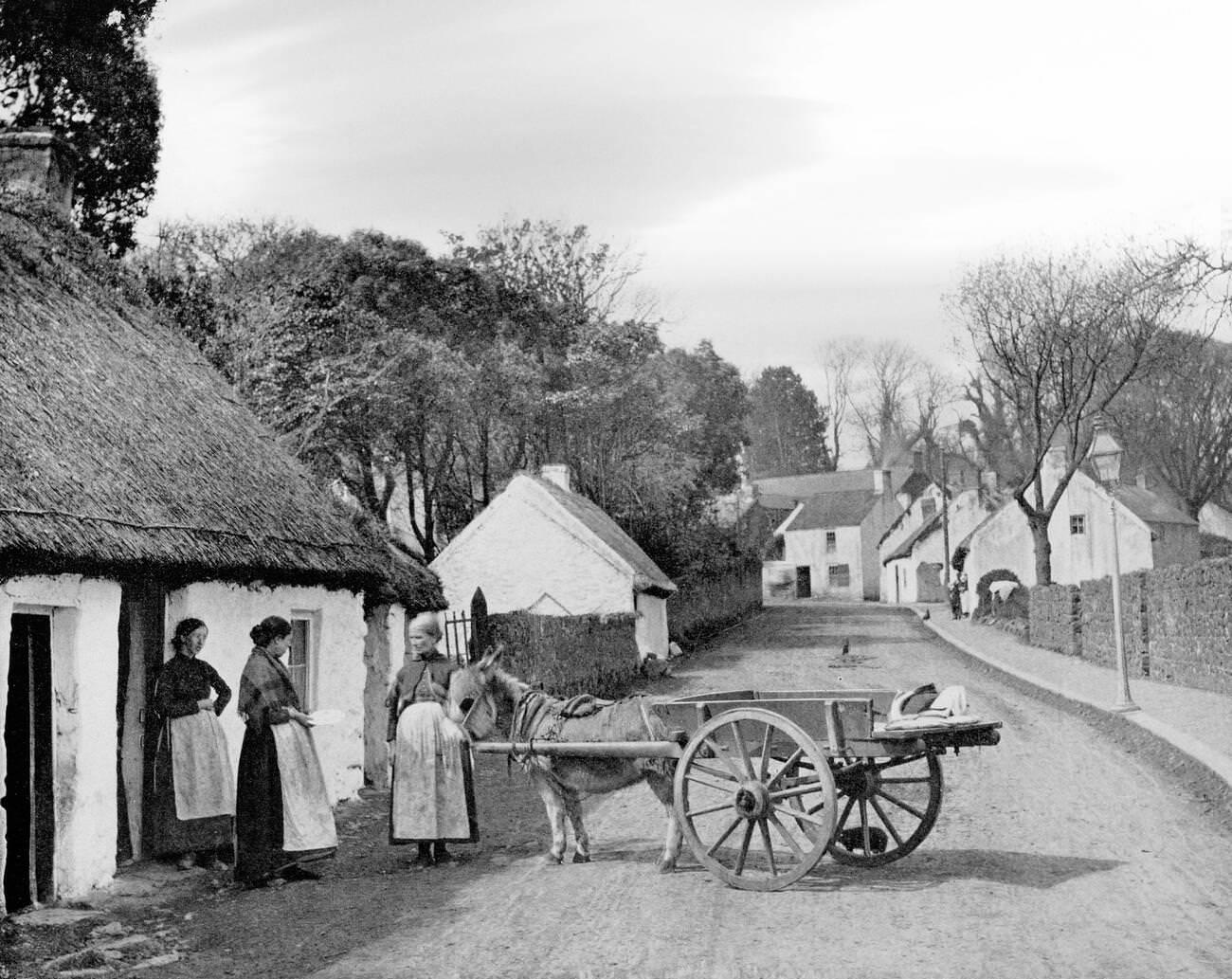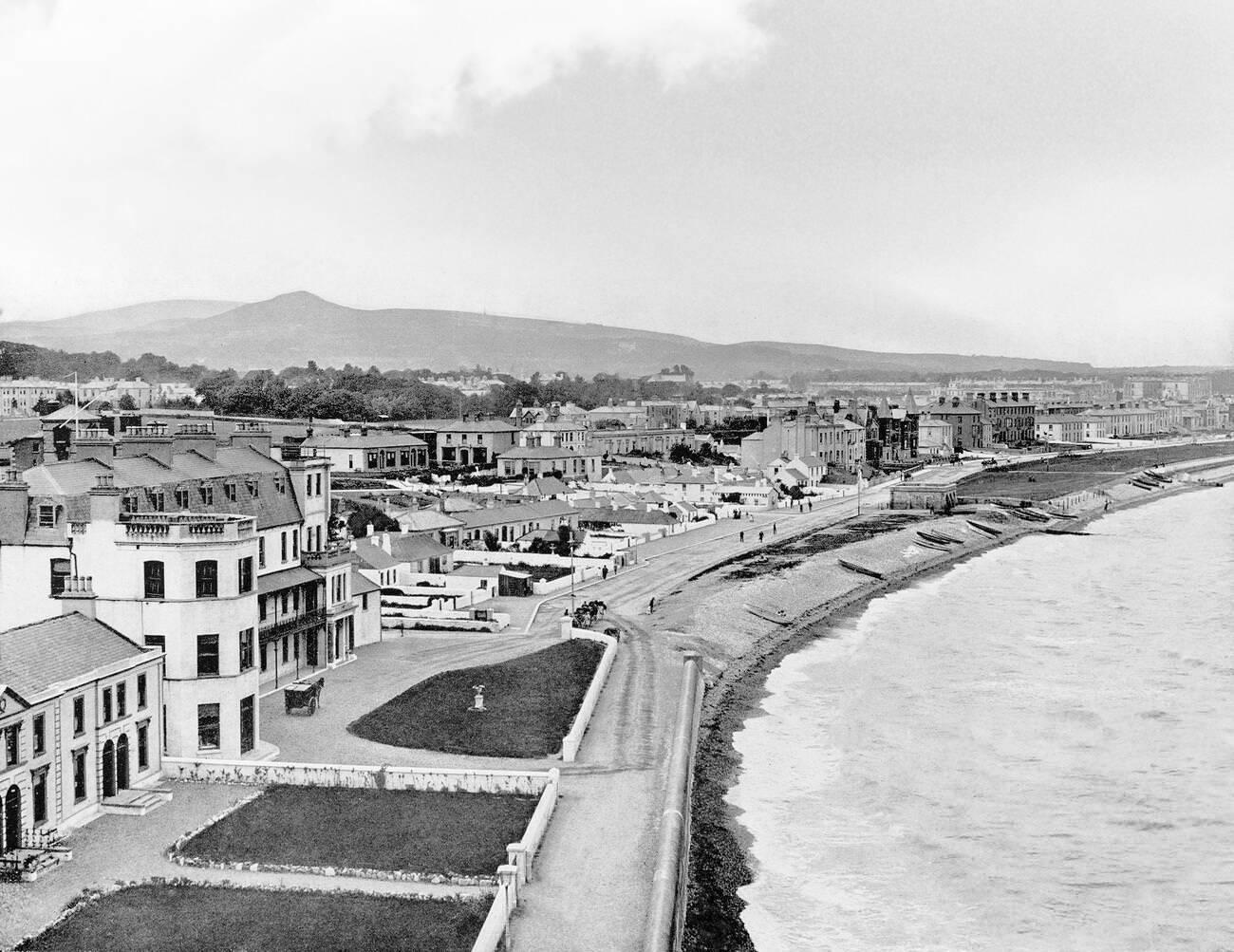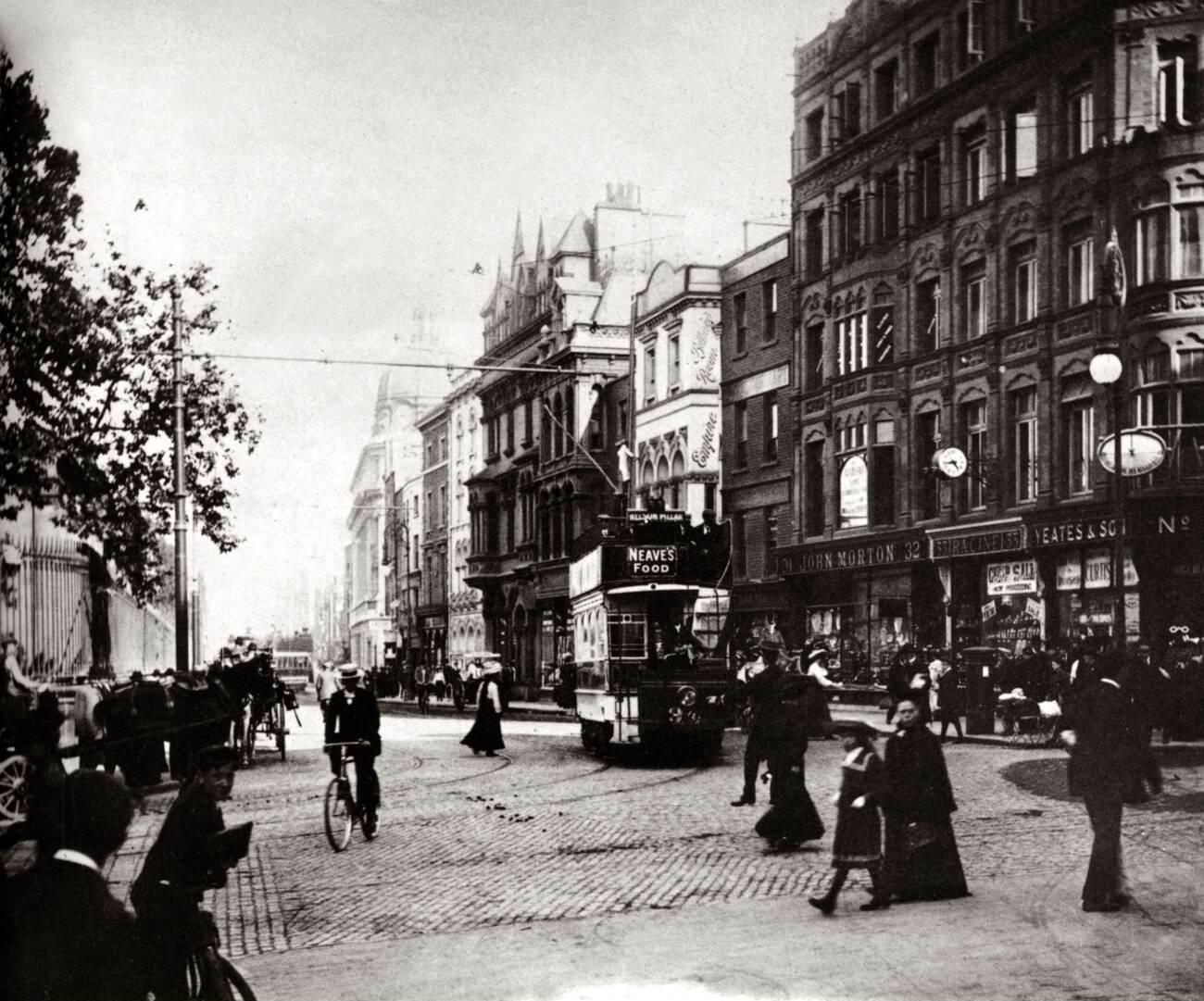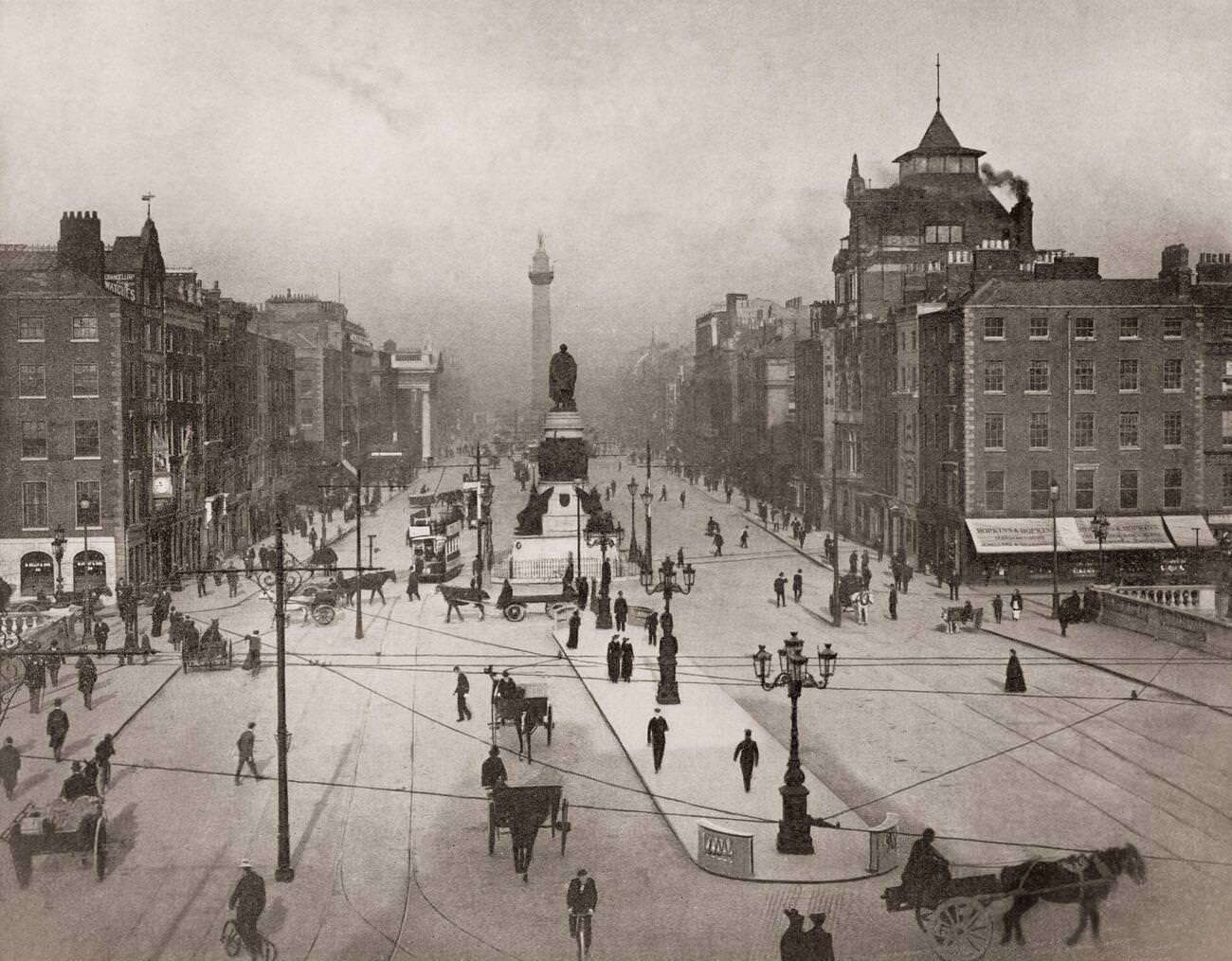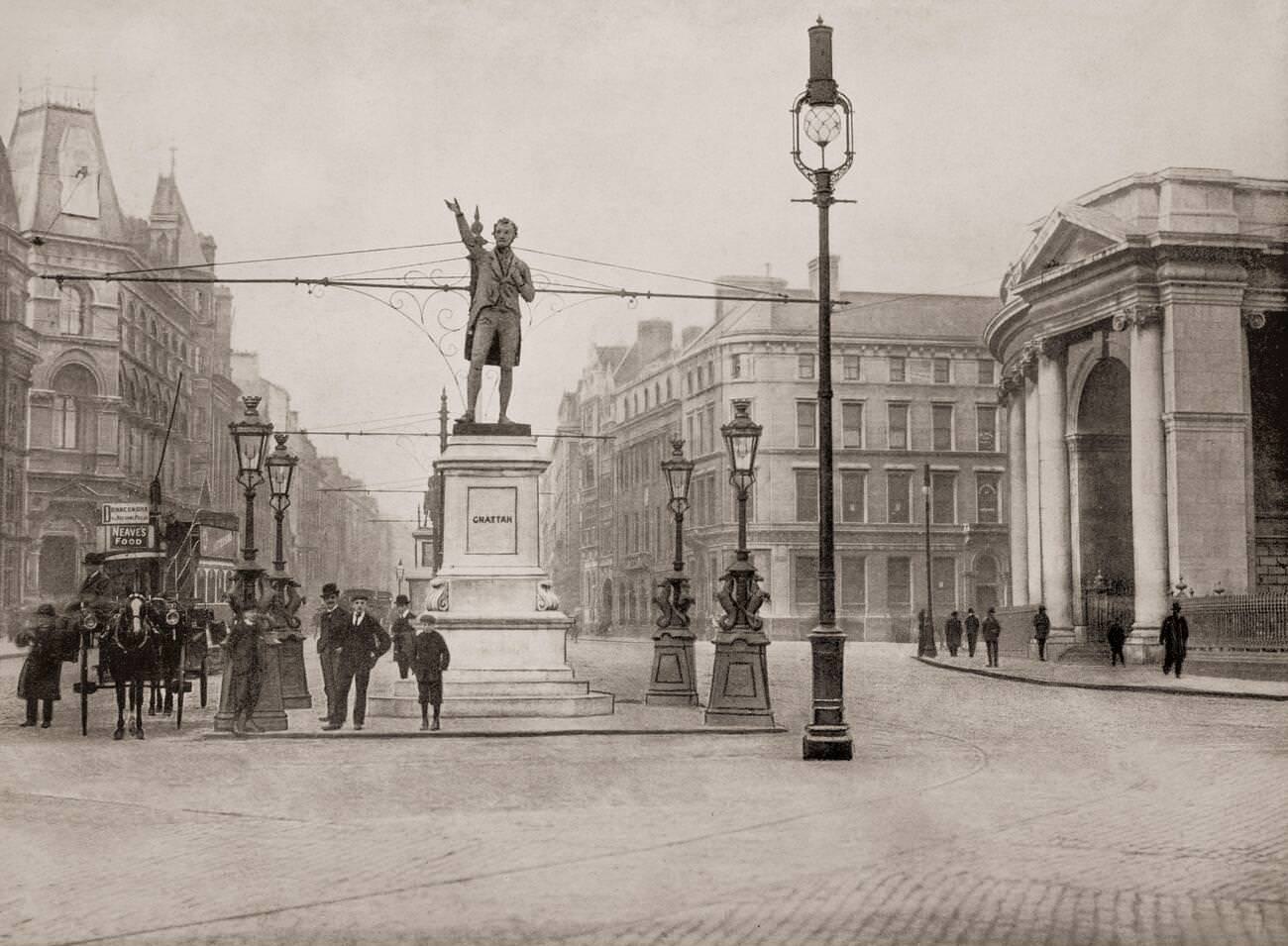Dublin in the late 19th century was a dynamic and evolving city. With its rich cultural scene, economic growth, and significant events, it laid the groundwork for the modern city we know today. The blend of old and new during this period created a unique and vibrant atmosphere, making Dublin a fascinating place to explore.
Life and Society
Dublin’s population grew rapidly in the late 19th century, reaching over 300,000 by 1900. The city was divided into different social classes. Wealthy families lived in large houses in areas like Merrion Square and Fitzwilliam Square. In contrast, poorer families lived in crowded tenements in districts such as the Liberties.
Education was becoming more accessible. Many children attended school, although the quality varied depending on social class. The city’s universities, like Trinity College, were prestigious but primarily served the elite..
Read more..
Famous Places and Landmarks
Several iconic places in Dublin date back to this period. The General Post Office (GPO) on O’Connell Street, built earlier in the century, remained a central landmark. St. Stephen’s Green, a beautiful public park, was reopened to the public in 1880, providing a green oasis in the heart of the city.
The Ha’penny Bridge, a pedestrian bridge over the River Liffey, was a popular crossing point. The Gaiety Theatre, opened in 1871, continued to be a significant cultural venue, hosting plays and operas.
Notable Events
One of the most significant events was the opening of the Dublin Castle as the administrative seat of the British government in Ireland. This period also saw the rise of the Home Rule movement, led by Charles Stewart Parnell, which sought greater autonomy for Ireland within the United Kingdom.
In 1882, Dublin was shaken by the Phoenix Park Murders, where two senior British officials were assassinated by members of the Irish National Invincibles. This event had a profound impact on Irish politics.
Economy and Construction
Dublin’s economy in the late 19th century was diverse. The city was a major port, facilitating trade and commerce. Shipbuilding and related industries thrived along the docks. Guinness, founded in 1759, was a major employer and exporter, with its brewery at St. James’s Gate being one of the largest in the world.
Construction boomed during this period. Many new buildings and infrastructure projects were completed, including the expansion of the railway network. The development of tramways made it easier for people to travel around the city.
Restaurants and Food
Dining in Dublin offered a variety of options. For the wealthy, there were upscale restaurants and hotels such as the Shelbourne Hotel, which opened in 1824 and remained a popular spot for dining and socializing. Middle-class families enjoyed meals in more modest establishments, while the working class often relied on street vendors for affordable food. Traditional Irish dishes like stew, coddle, and boxty were common. Fish and chips became popular, especially near the docks. Pubs were an essential part of social life, serving not just drinks but also hearty meals.
Culture and Entertainment
Dublin was a center of cultural activity. The Abbey Theatre, founded in 1904, had its roots in the late 19th century, with playwrights like W.B. Yeats and Lady Gregory contributing to a burgeoning Irish literary revival. Music halls and theaters offered a range of entertainment, from classical music to popular shows.
Newspapers and periodicals flourished, with publications like The Irish Times and Freeman’s Journal keeping the public informed about local and international events.
Public services improved significantly. The introduction of electric lighting in 1892 transformed the city’s streets and homes. Public transportation expanded with the growth of the tram network. The city’s water supply and sanitation systems were also upgraded, improving living conditions.
#1 Four Courts, Dublin, Ireland, 1880s
#2 Dublin street children, 1890s
#3 Children playing in Dublin, 1880s
#4 Sackville Street, Dublin, now O’Connell Street, showing Nelson’s column
#5 Bank of Ireland building, Dublin, 1890s
#6 Barges for freight tied up outside the Customs House on the River Liffey, Dublin.
#7 National Museum, Dublin, Ireland.
#8 View of the facade of Trinity College Dublin.
#9 St Patrick’s Cathedral, Dublin, Ireland.
#10 Four Courts on the banks of the River Liffey, Dublin.
#11 British soldiers marching outside the front gate of Trinity College Dublin, Ireland, 1890s
#12 College Green Dublin, with Trinity College in the background, horses and trams, 1890s
#13 Traffic on Sackville Street, Dublin, now O’Connell Street, 1890s
#14 Sackville Street, now O’Connell St Dublin, Ireland, 1890s
#15 Street scene, Bank of Ireland, Dublin, Ireland, 1890s
#16 Customs House, Dublin, Ireland, 1890s
#17 The Viceroy’s Lodge, Dublin, Ireland, 1894
#18 View looking down Grafton Street in Dublin during Victorian times. The Douglas’s Hotel and Dining Rooms are visible on the left, and the number 44 horse drawn tram shows adverts for Zebra Grate Polish.
#19 Westmoreland Street, Dublin, Republic of Ireland, 1897
#20 St Mary’s Pro Cathedral, Dublin, 1897
#21 Kildare Street, Dublin, 1897
#22 Dun Loaghaire (Kingstown), Dublin
#23 Sackville Street, Dublin
#24 Sackville Street, 1880s
#25 Dublin Children at Play
#26 O’Connell Bridge, Dublin
#27 A quiet day on Dublin’s South Liffey quays.
#28 Dublin Quays, 1890s
#29 Dublin’s Liffey Quays, 1890s
#30 The Regent House, that acts as the central entrance to the campus of Trinity College in Dublin,
#31 The Four Courts reflected in the River Liffey.
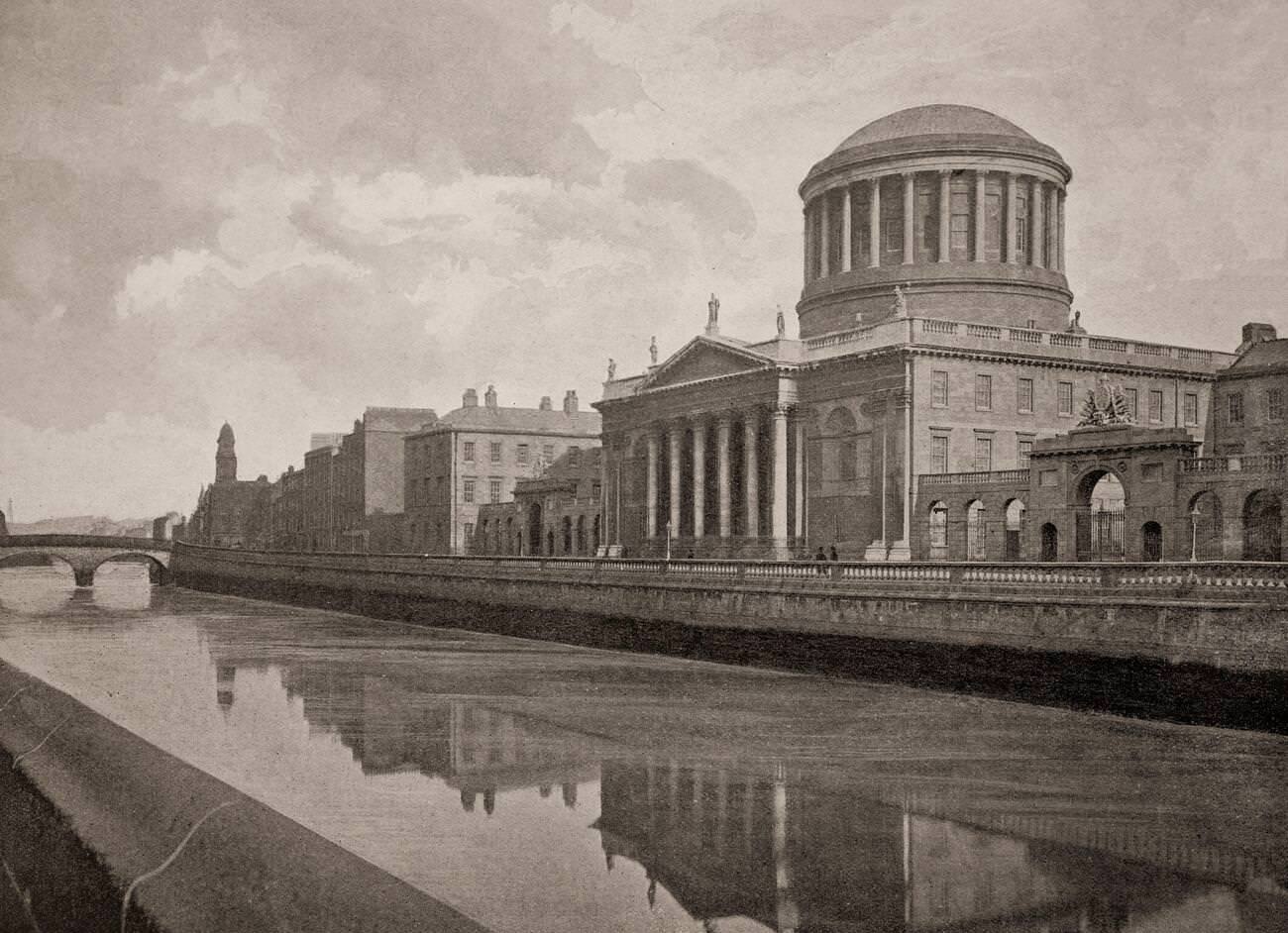
The building is Ireland's most prominent courts building, located on Inns Quay in Dublin and the principal seat of the Supreme Court, the Court of Appeal, the High Court and the Dublin Circuit Court. It was based on the design of Thomas Cooley for the Public Records Office of Ireland, but after his death in 1784, the renowned architect James Gandon was appointed to finish the building. Built between 1786 and 1796, the finishing touches to the arcades and wings were completed in 1802.
#32 The neoclassical 18th century Custom House alongside the River Liffey in Dublin, Ireland.
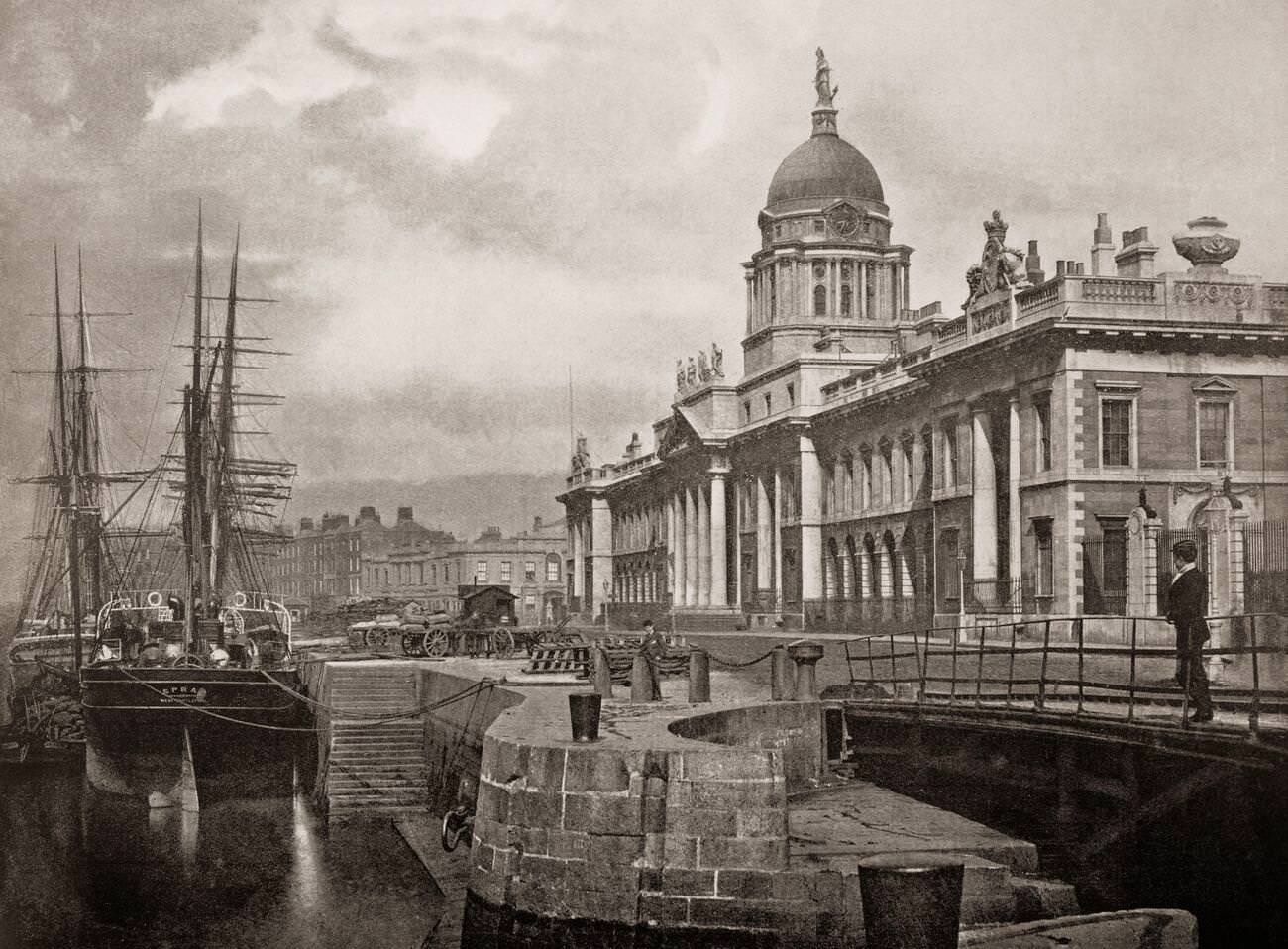
In 1781 James Gandon was appointed architect, after Thomas Cooley, the original architect on the project died. Construction started in 1781 and for his assistants Gandon chose Irish artists such as Meath stone-cutter Henry Darley, mason John Semple and carpenter Hugh Henry. Every available mason in Dublin was engaged in the work. When it was completed and opened for business on 7 November 1791, it had cost £200,000 to build – a considerable sum at the time.
#33 Christ Church Cathedral, aka The Cathedral of the Holy Trinity in Dublin.
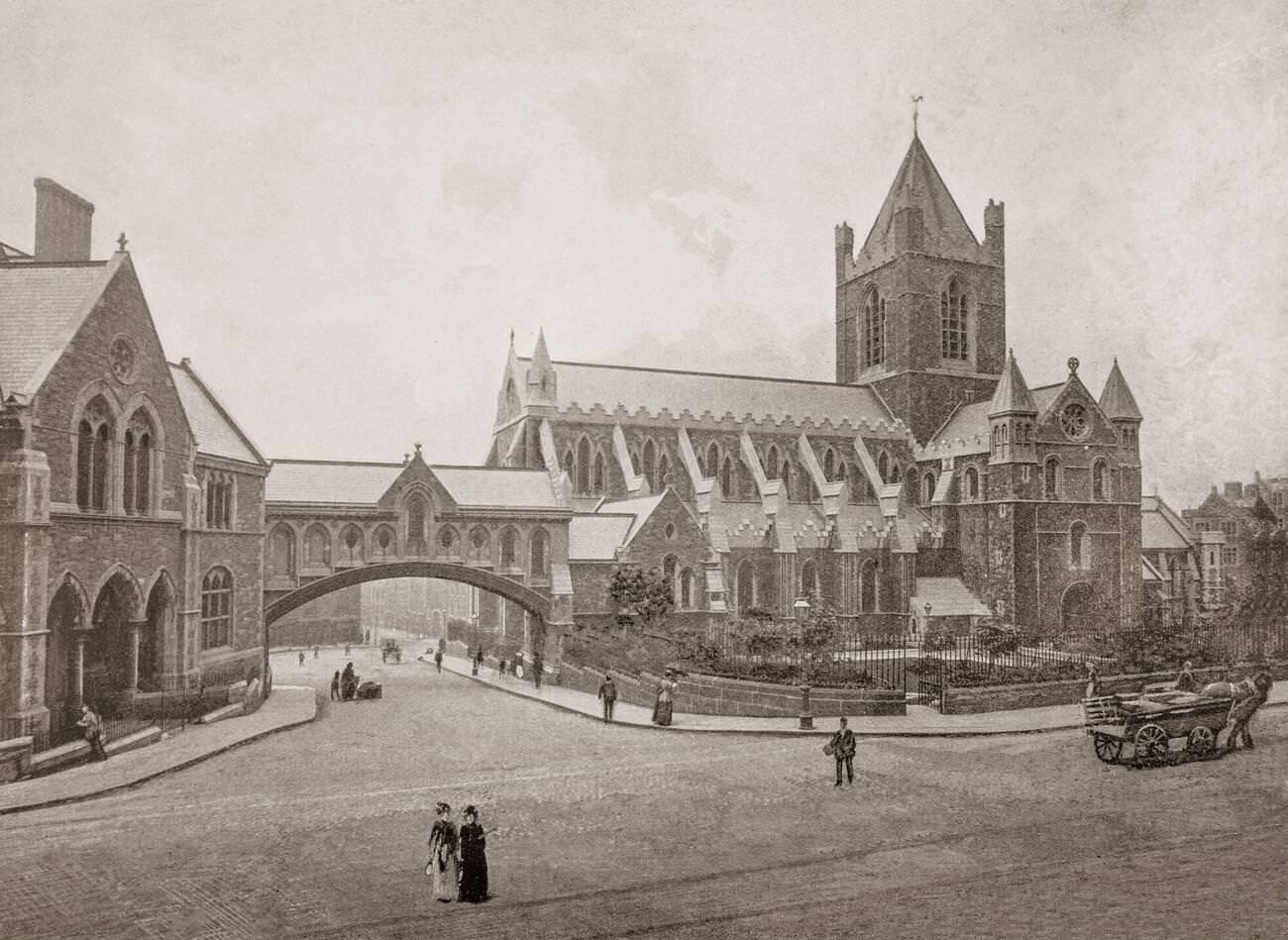
The cathedral was founded in the early 11th century under the Viking king Sitric, rebuilt in stone in the late 12th century by Strongbow. After a partial collapse in the 16th century it was renovated and rebuilt from 1871 to 1878 by George Edmund Street, the flying buttresses were added along with the adjacent Synod Hall, linked to the cathedral by the iconic covered footbridge. Christ Church the is cathedral of the Dublin diocese and St Patrick's the national cathedral.
#34 View of paddle steamers and ferries in the harbour in Dún Laoghaire, a coastal town in County Dublin.
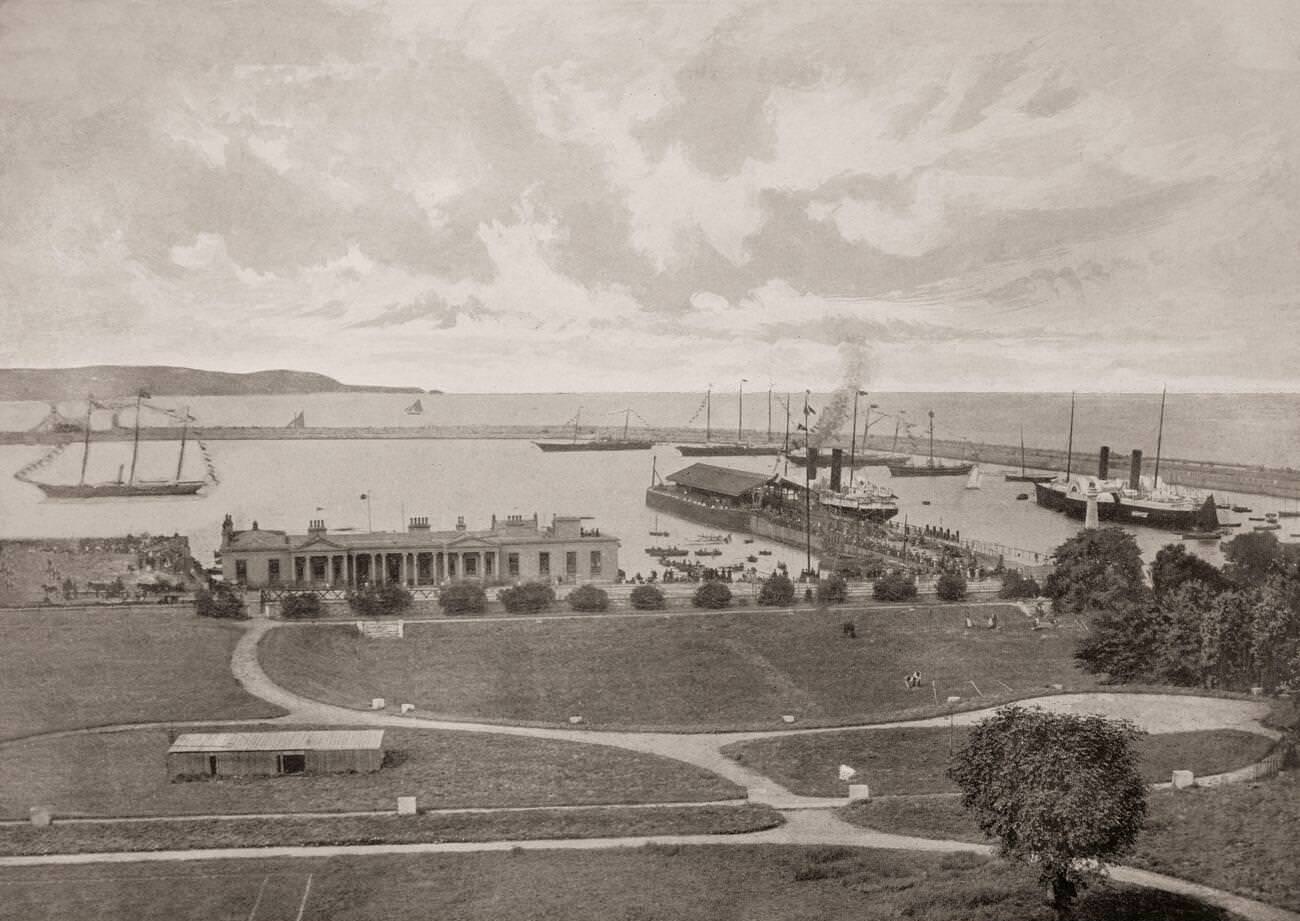
Following the wrecking of two troopships in 1807, legislation was passed authorising the construction of what is now called the "West Pier". When King George IV came to visit the new port under construction in 1821, the name Dunleary was dropped in favour of "Kingstown"; the town returned to its former name in August 1920, in the lead-up to the creation of the Irish Free State.
#35 View of the promenade in Bray in north County Wicklow, Ireland.
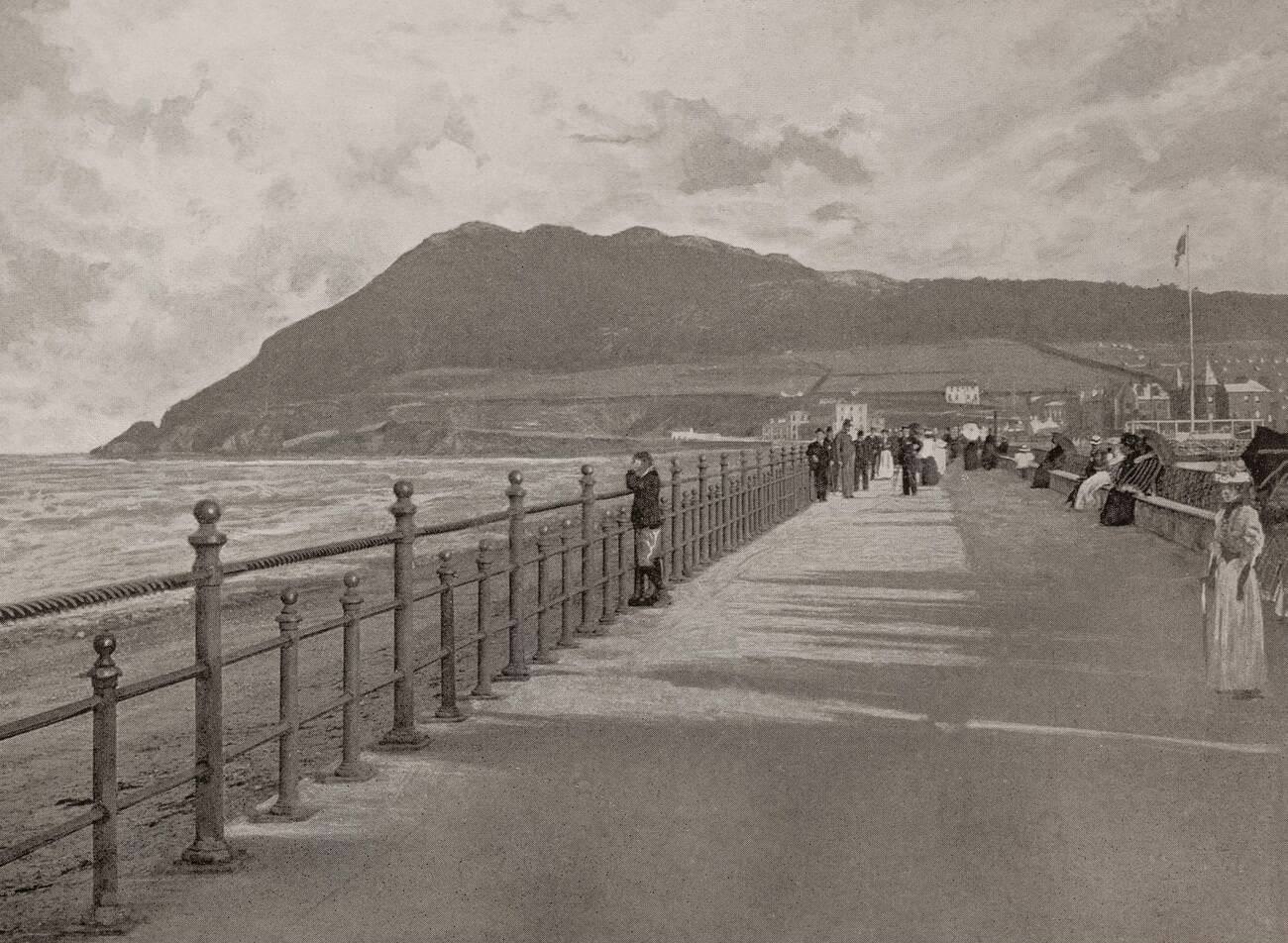
In medieval times, it was a small manorial village on the southern border of the Pale, then during the latter part of the 18th century, the Dublin middle-classes began to relocate there. The Dublin and Kingstown Railway was extended as far as Bray in 1854 and the town grew to become a seaside resort, with hotels and residential terraces built in the vicinity of the seafront.
#36 Ireland’s Kilkenny Castle built in 1195 to control a fording-point of the River Nore and several routeways.
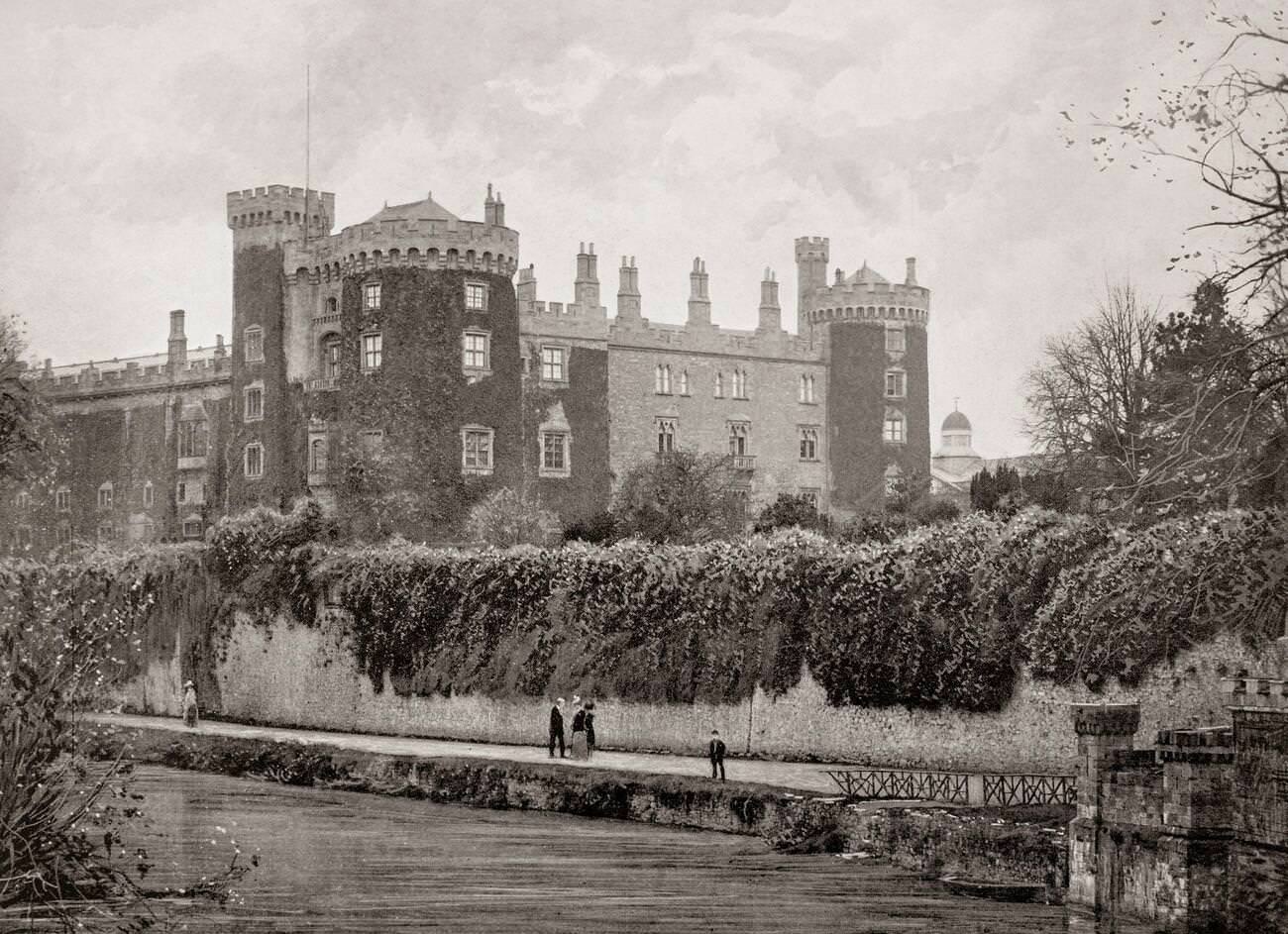
It has been important since the 12th century when Richard de Clare, 2nd Earl of Pembroke, commonly known as Strongbow constructed the first castle. It then became the seat of the Butlers of Ormonde who arrived in Ireland with the Norman invasion. In the 17th century, the "Supreme Council" of the Catholic rebel movement, Confederate Ireland, met in Kilkenny Castle from 1642-48 while James Butler, the Lord Lieutenant of Ireland, was in Dublin.
#37 The Grattan Bridge, a road bridge spanning the River Liffey in Dublin, Ireland, and joining Capel Street to Parliament Street and the south quays.
#38 The quays along the River Liffey in Dunlin.
#39 O’Connell Bridge crossing the River Liffey in Dublin.
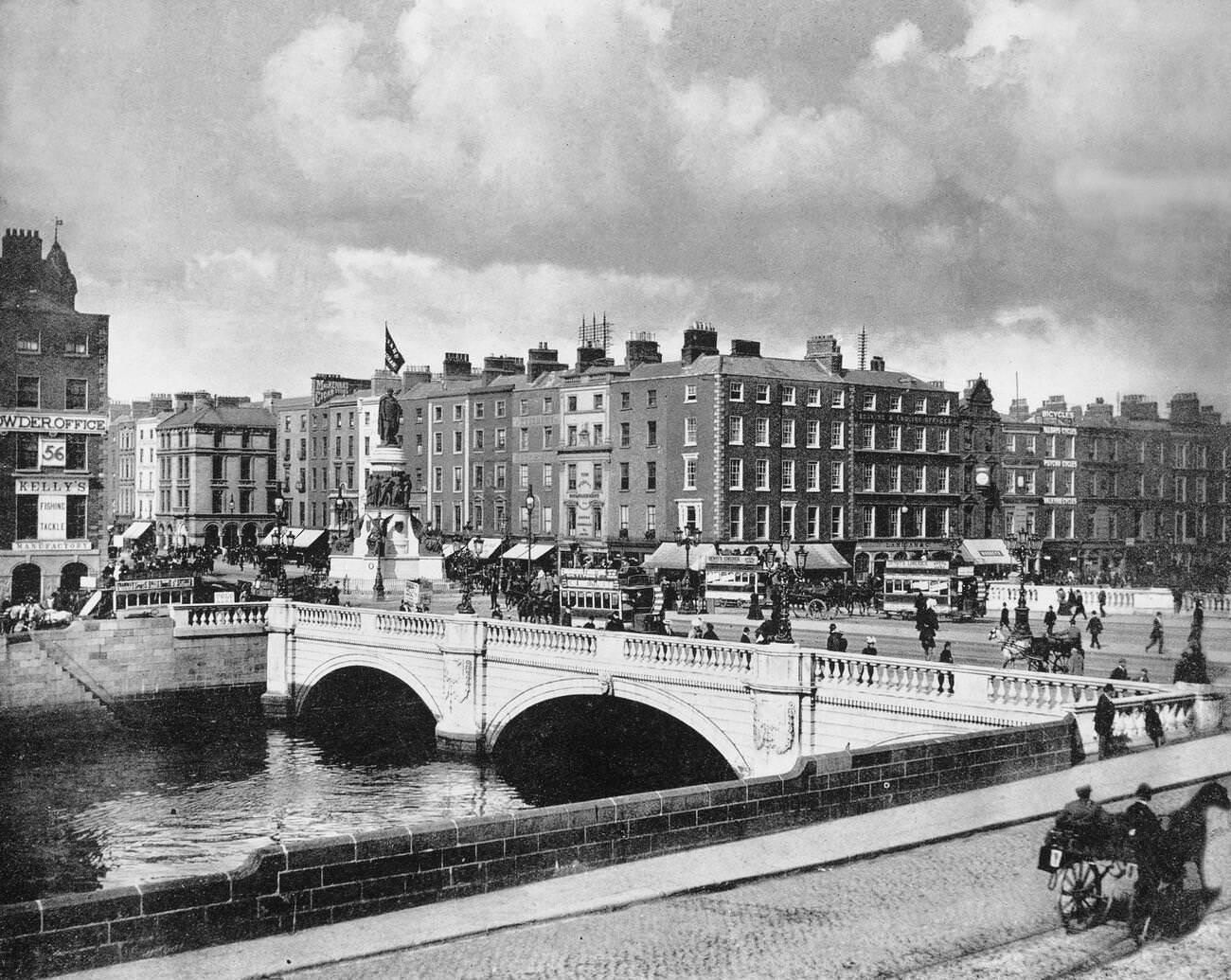
The original bridge (named Carlisle Bridge after the then Lord Lieutenant of Ireland – Frederick Howard, 5th Earl of Carlisle) was designed by James Gandon, and built between 1791 and 1794. Originally humped and narrower, the bridge was reconstructed and widened between 1877 and 1880.
#40 The Grattan Statue in College Green, Dublin.
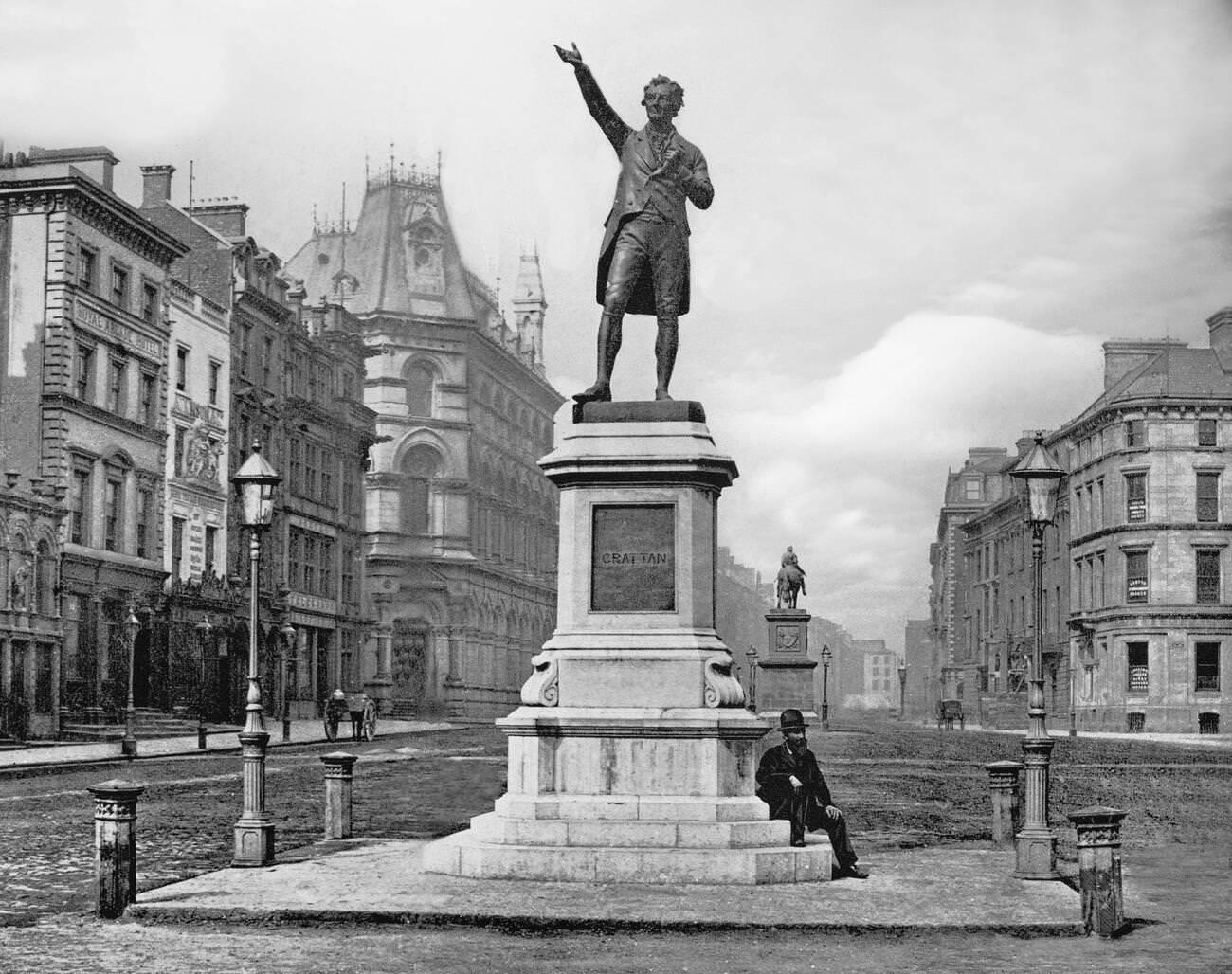
Henry Grattan 1746-1820) was an Irish politician and lawyer, a Member of the Irish Parliament (MP) from 1775 to 1801 and a Member of Parliament (MP) in Westminster from 1805 to 1820, who campaigned for legislative freedom for the Irish Parliament in the late 18th century from Britain. Described as a superb orator, he demanded that Ireland should be an independent nation, though he always insisted that Ireland would remain linked to Great Britain by a common crown and by sharing a common political tradition.
#41 College Green in the centre of Dublin.
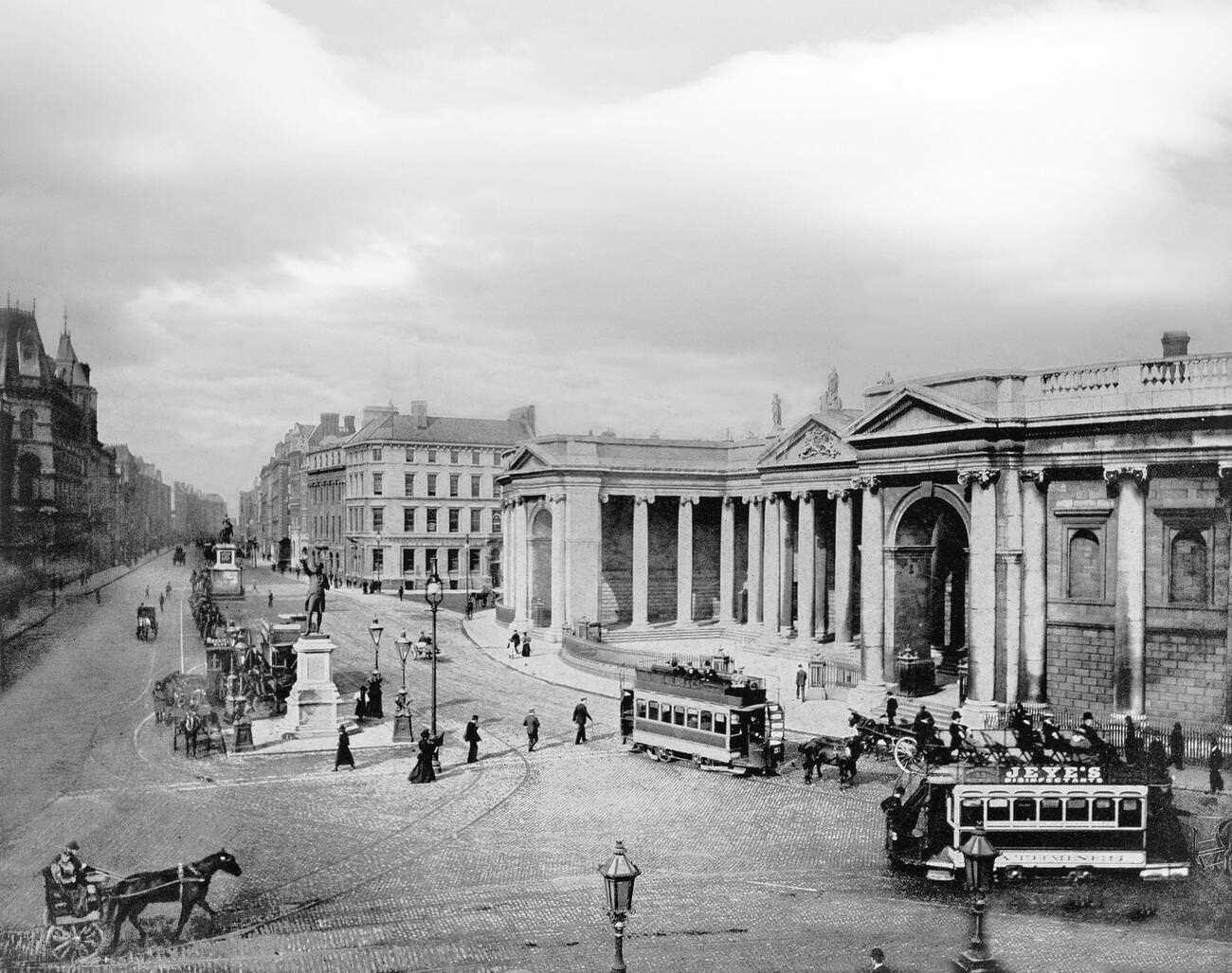
On its northern side is the Bank of Ireland building, which until 1800 was Ireland's Parliament House. It was originally constructed by Arthur Chichester, 1st Baron Chichester in the early 17th century and later adapted for the Irish Parliament around 1670. It was replaced by a new Parliament House in 1729, designed by Edward Lovett Pearce, it was later enlarged by James Gandon in 1787 and Edward Parke between 1804 and 1808. The site is now the Bank of Ireland.
#42 The statue of King William III on horseback in the centre of College Green, Dublin.
#43 Grafton Street, Dublin city centre, Ireland at the College Green end.
#44 The Scots Guards of the British Army marching through Dublin.
#45 St. Catherine’s Church, on Thomas Street, in Dublin, Ireland, was originally built in 1185.
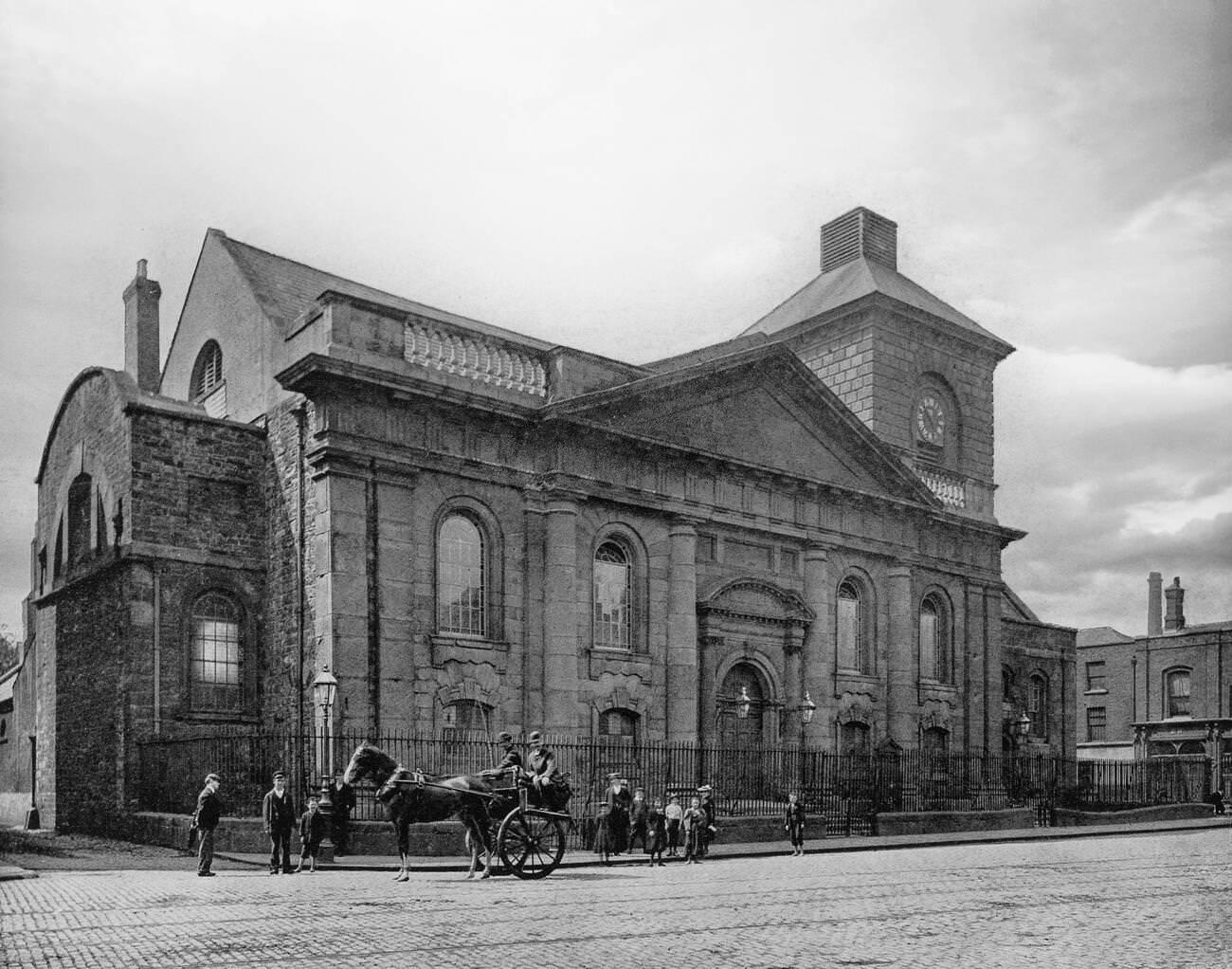
It was rebuilt in the Palladian style in the 18th century by John Smyth (or Smith), originally a spire was intended, but it wasn't completed due to lack of funds. In 1803 the church was the site of Robert Emmet's execution, an Irish Republican, orator and rebel leader he sought to organise a renewed attempt to overthrow the British Crown and Protestant Ascendancy in Ireland, following the suppression of the United Irish uprising in 1798.
#46 The Shelbourne Hotel, a historic hotel on the north side of St Stephen’s Green in Dublin.
#47 The crowded Horse Show at the R.D.S. (Royal Dublin Society) in Ballsbridge, Dublin.
#48 The Phoenix Park Murders, the fatal stabbings of Lord Frederick Cavendish and Thomas Henry Burke in Phoenix Park, Dublin, Ireland, on 6 May 1882.
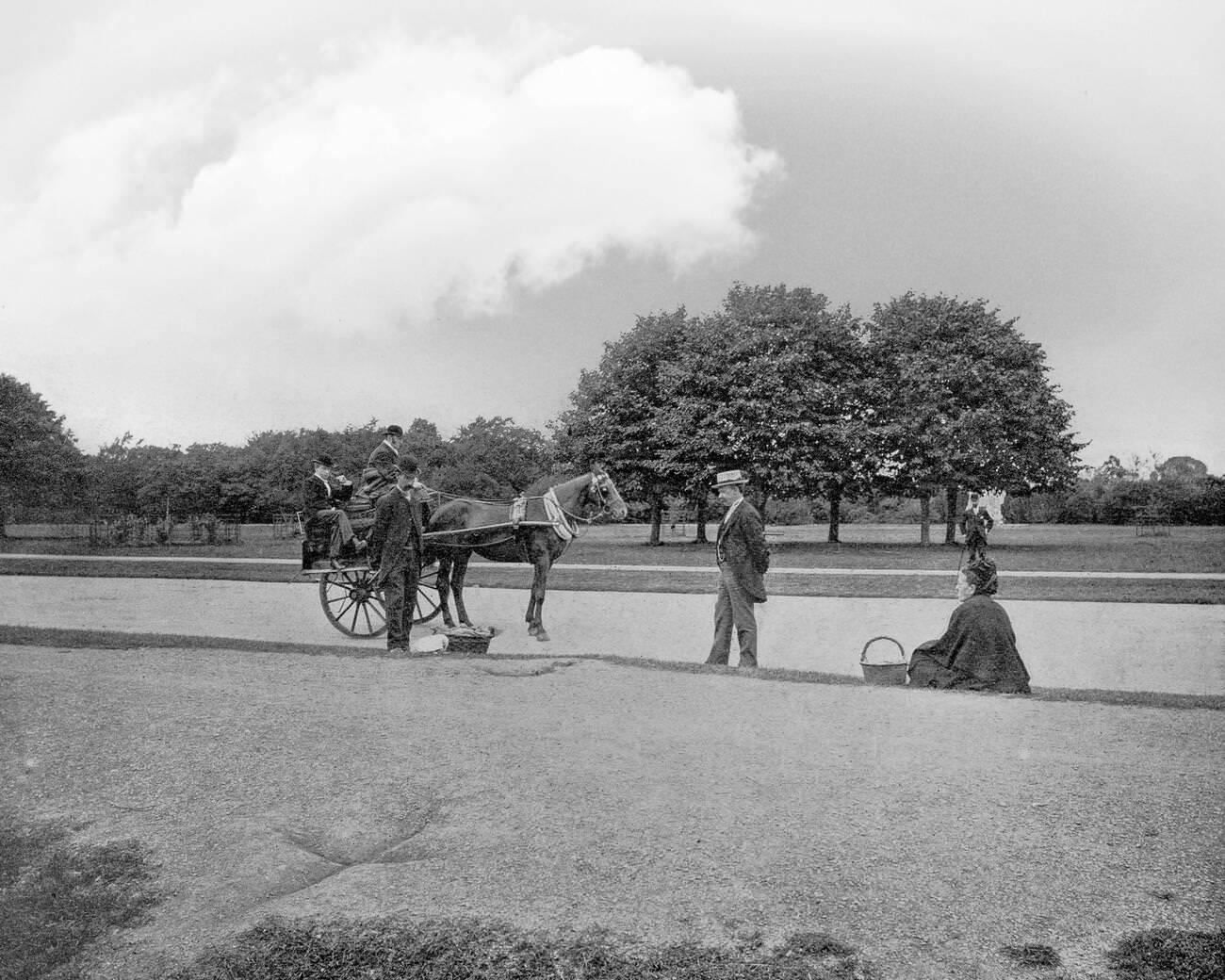
Cavendish was the newly appointed Chief Secretary for Ireland and Burke was the Permanent Under-Secretary, the most senior Irish civil servant. The assassination was carried out by members of the terrorist organisation known as the Irish National Invincibles, a more radical breakaway from the Irish Republican Brotherhood.
#49 An RIC policeman next to the Gough Statue, by the sculpture J.H.Foley, in the Phoenix Park in Dublin
#50 The Parnell Memorial Procession as it crosses the O’Connell Bridge over the River Liffey in Dublin
#51 Steam locomotive pulling passenger coached out of Heuston Station.
#52 Voliemore Harbour, also known historically as Dalkey Harbour.
#53 Dublin Bay from Howth Head with cottages and a distant Baily Lighthouse A new tower, 41 metres (134 ft) above the sea, designed by George Halpin Senior, the corporation’s Inspector of Works, was completed on 17 March 1814.
#54 Howth, a peninsular village and now an outer suburb of Dublin.
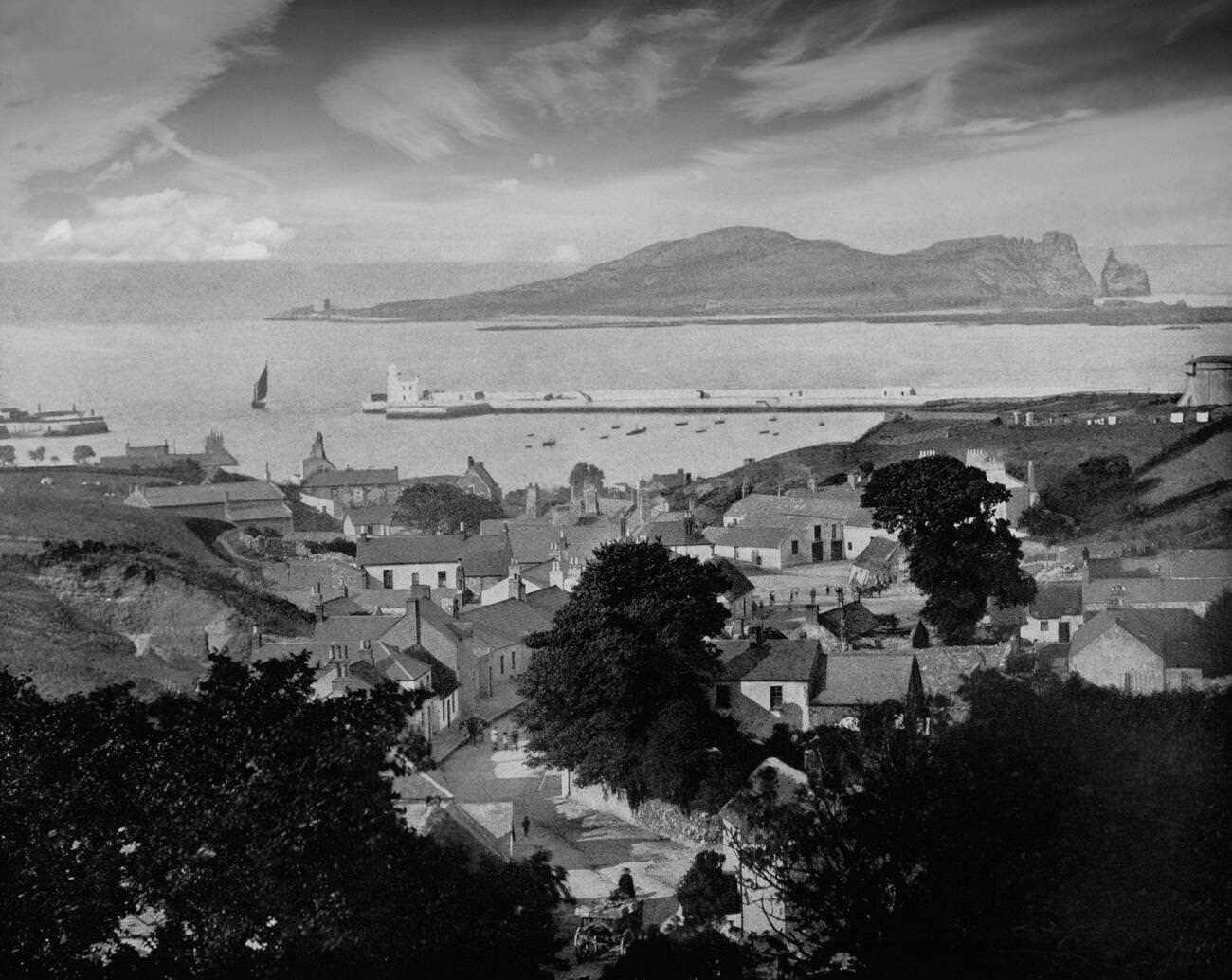
The peninsula of Howth Head, forms the northern boundary of Dublin Bay, and includes the island of Ireland's Eye. A fishing village and small trading port from at least the 14th century, Howth was chosen as the location for the harbour for the mail packet (postal service) ship in the early 19th century, construction of which began in 1807.


